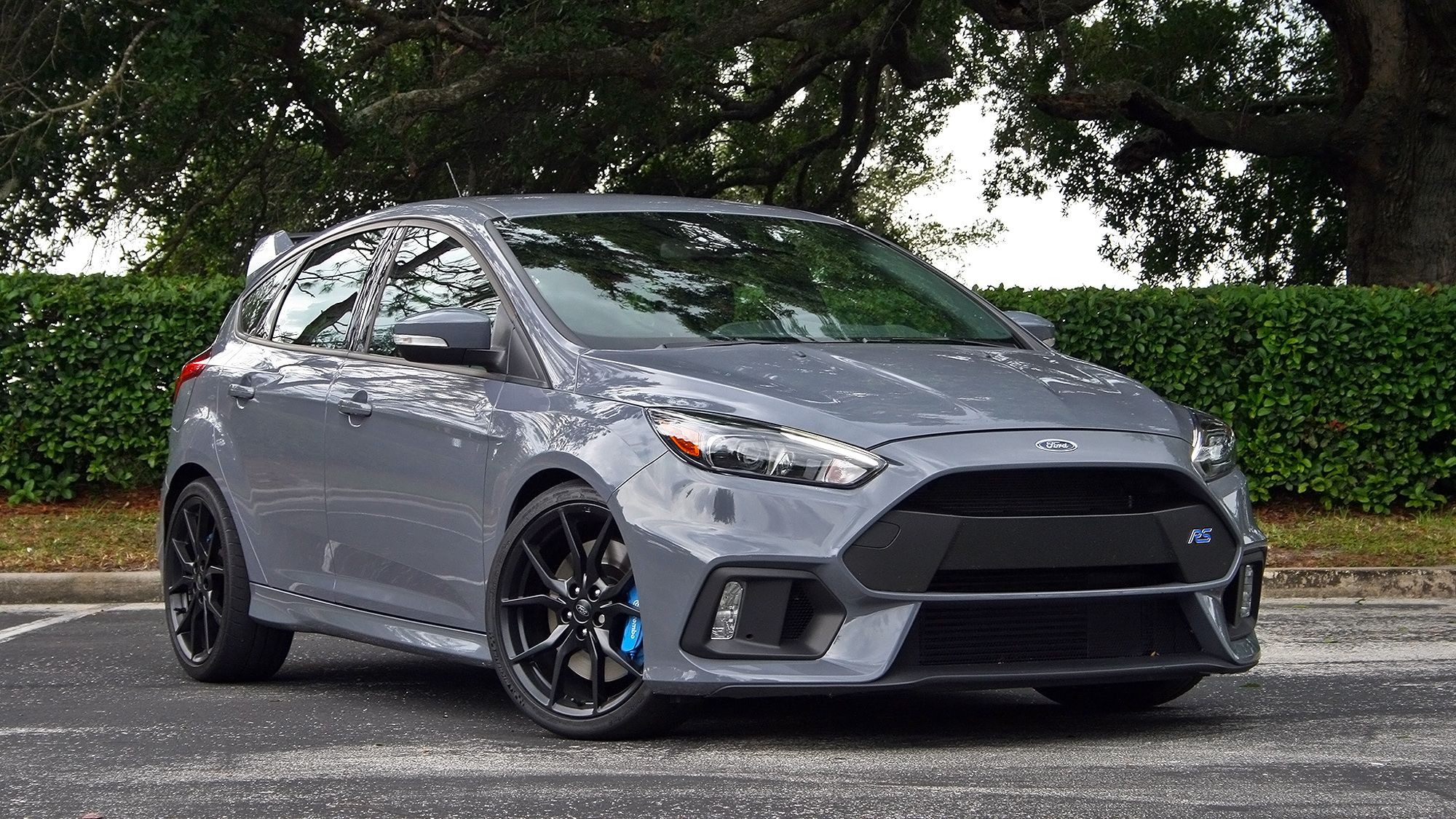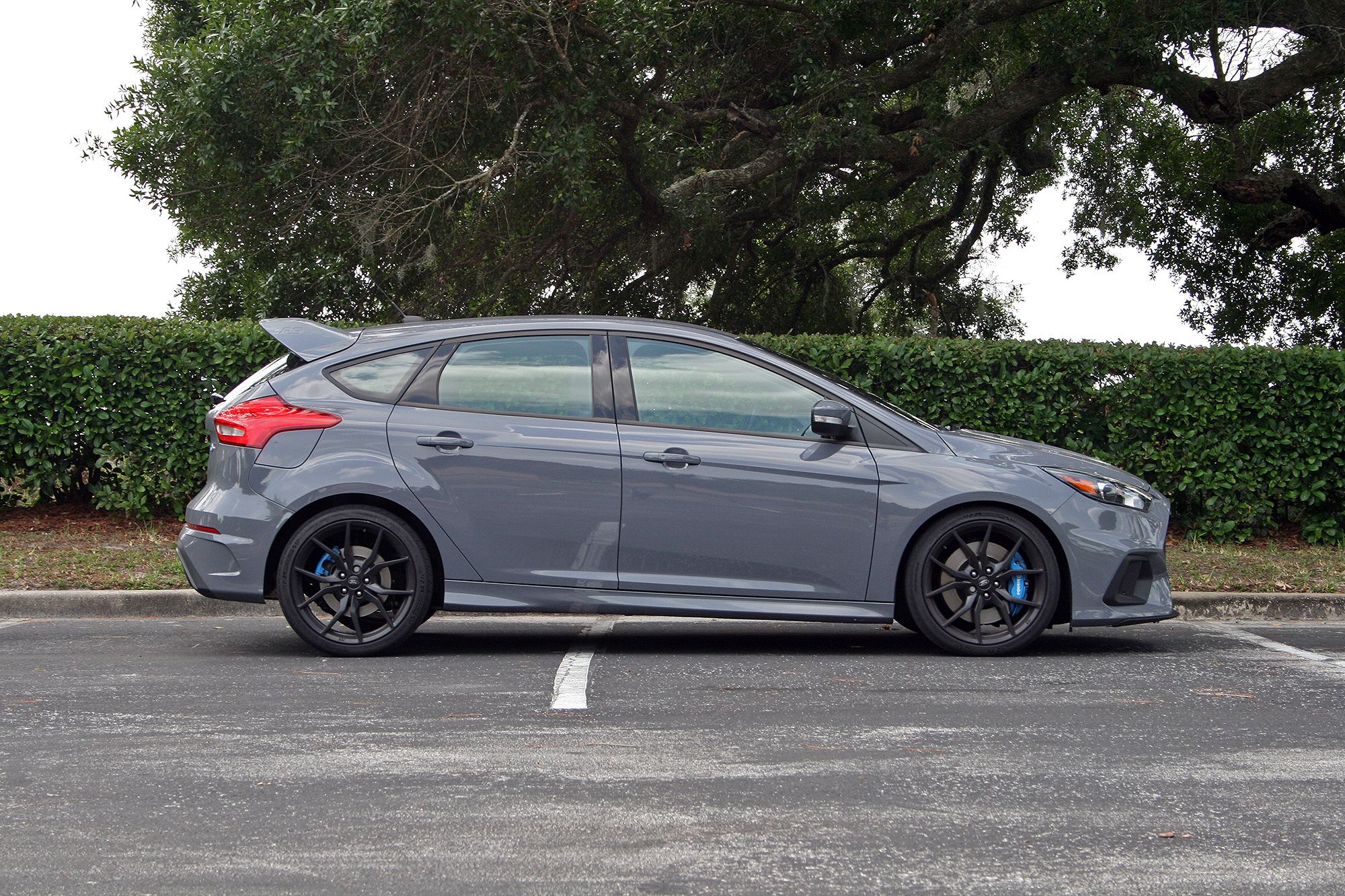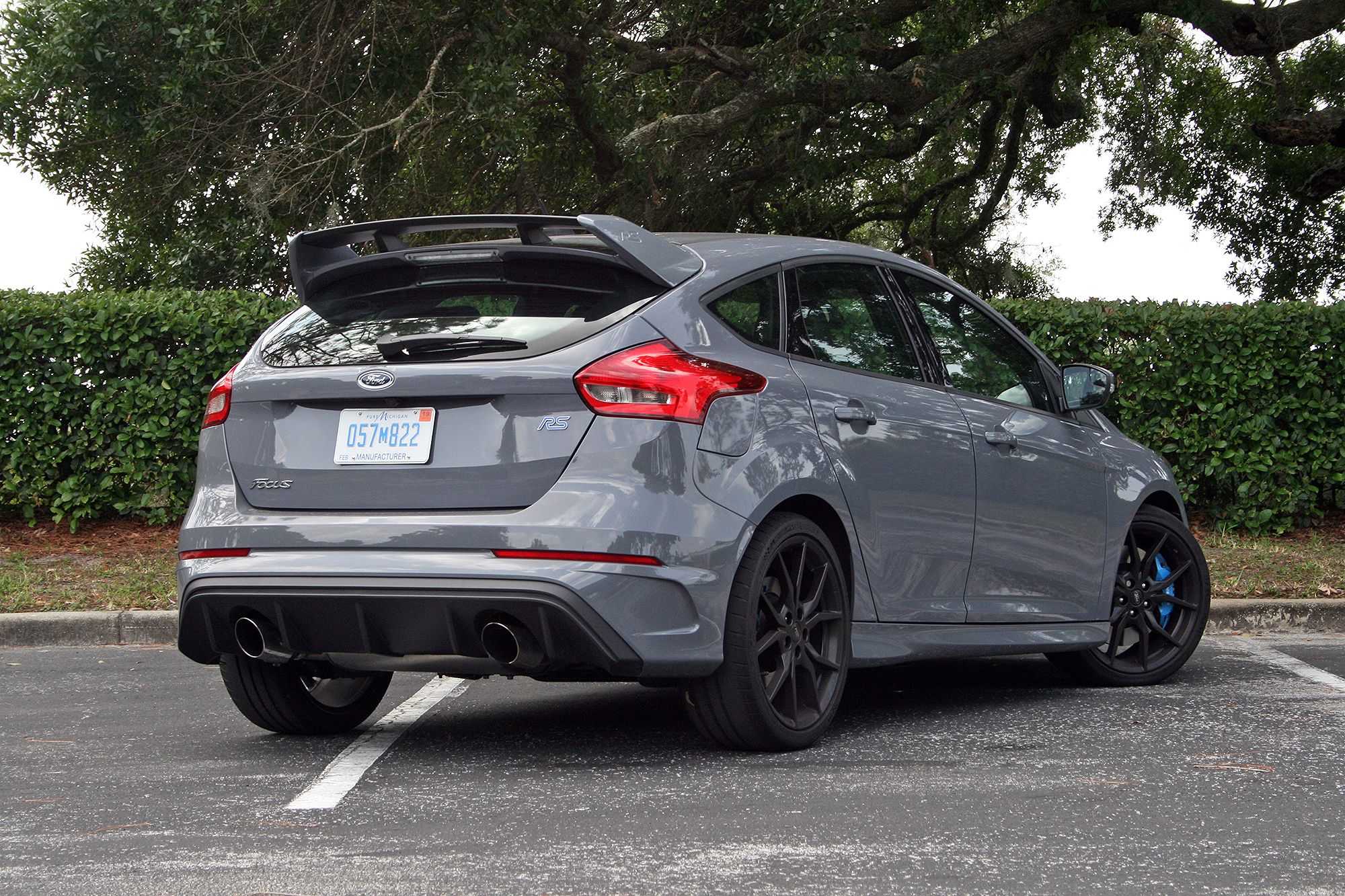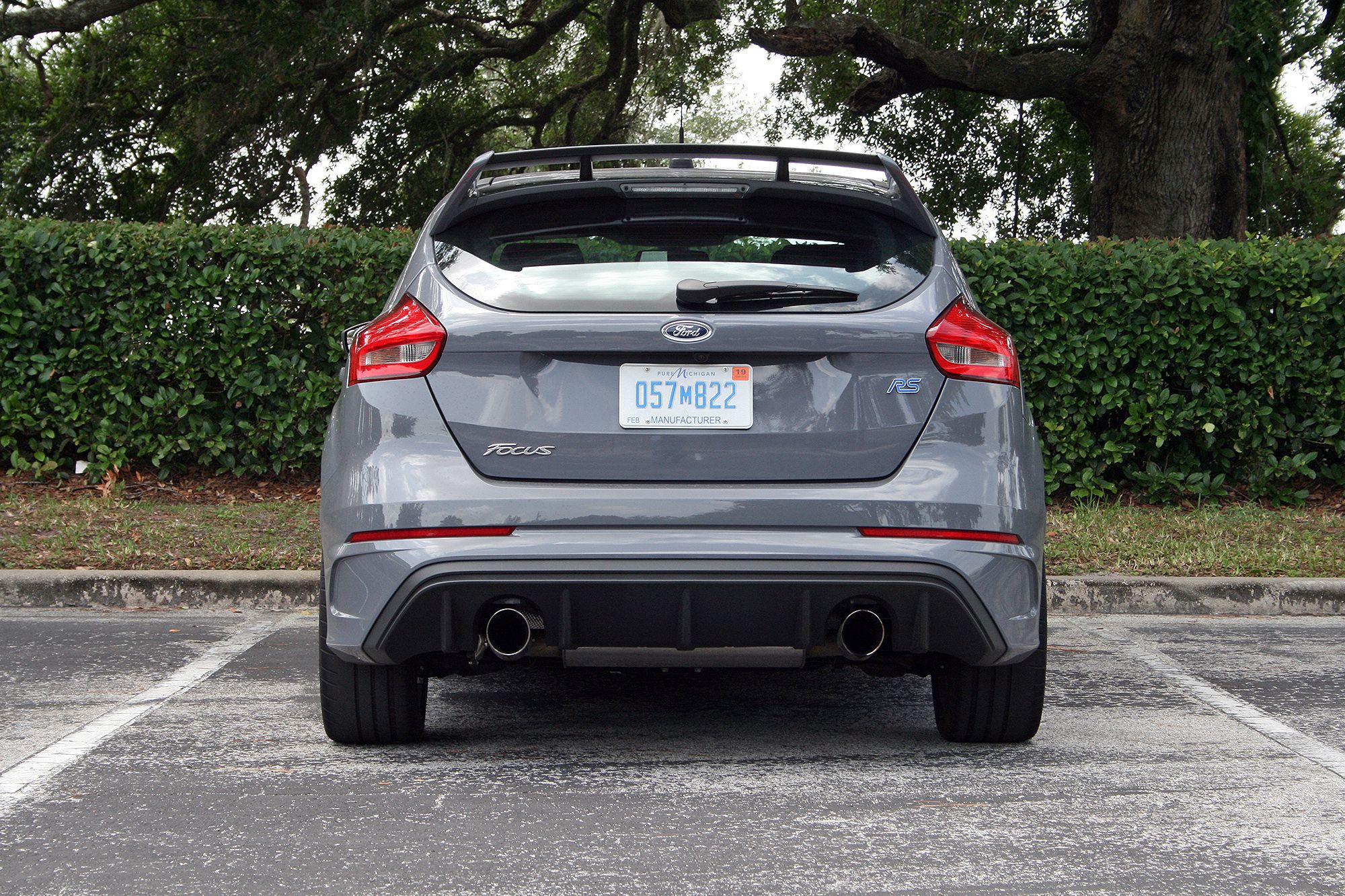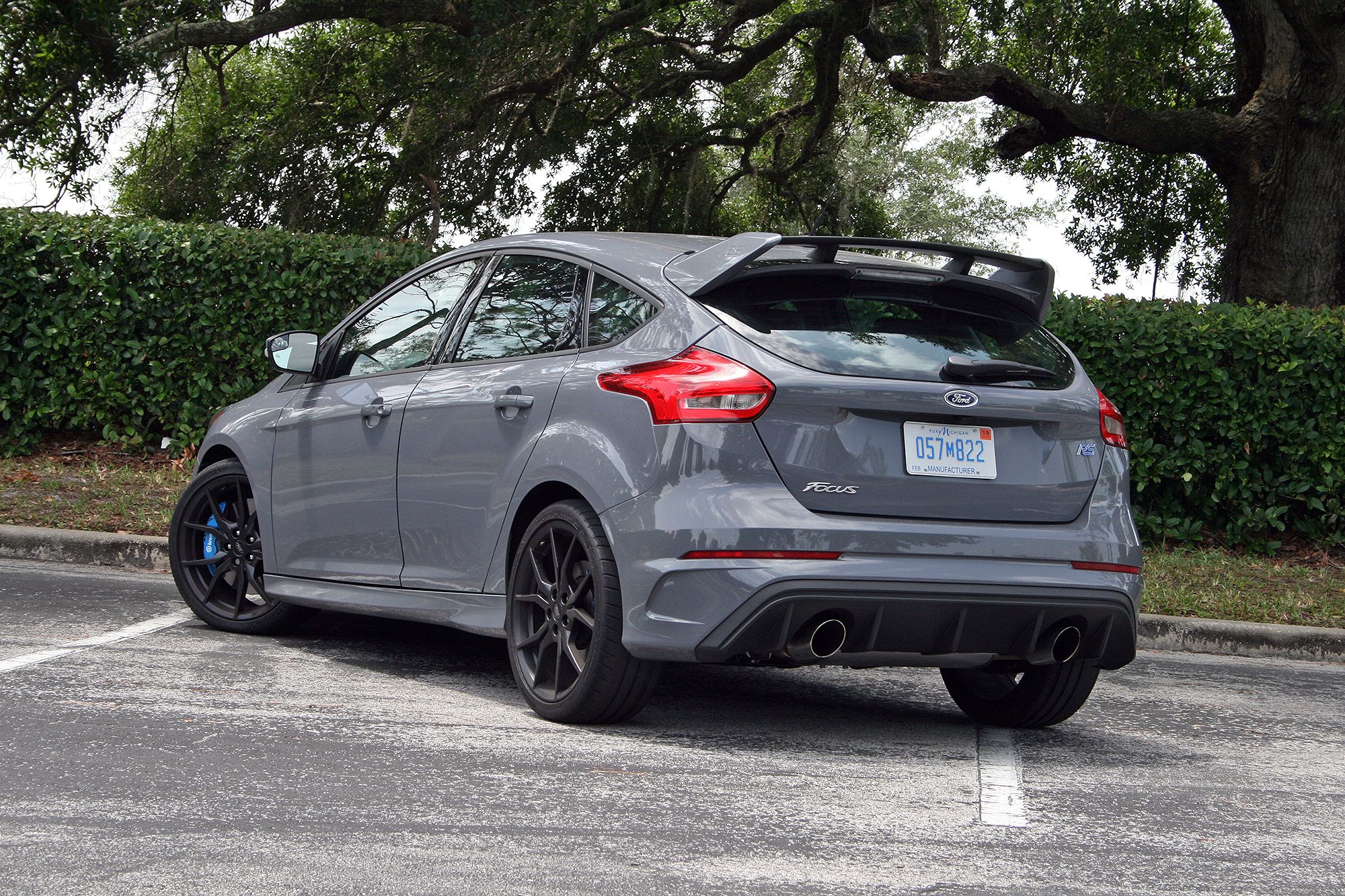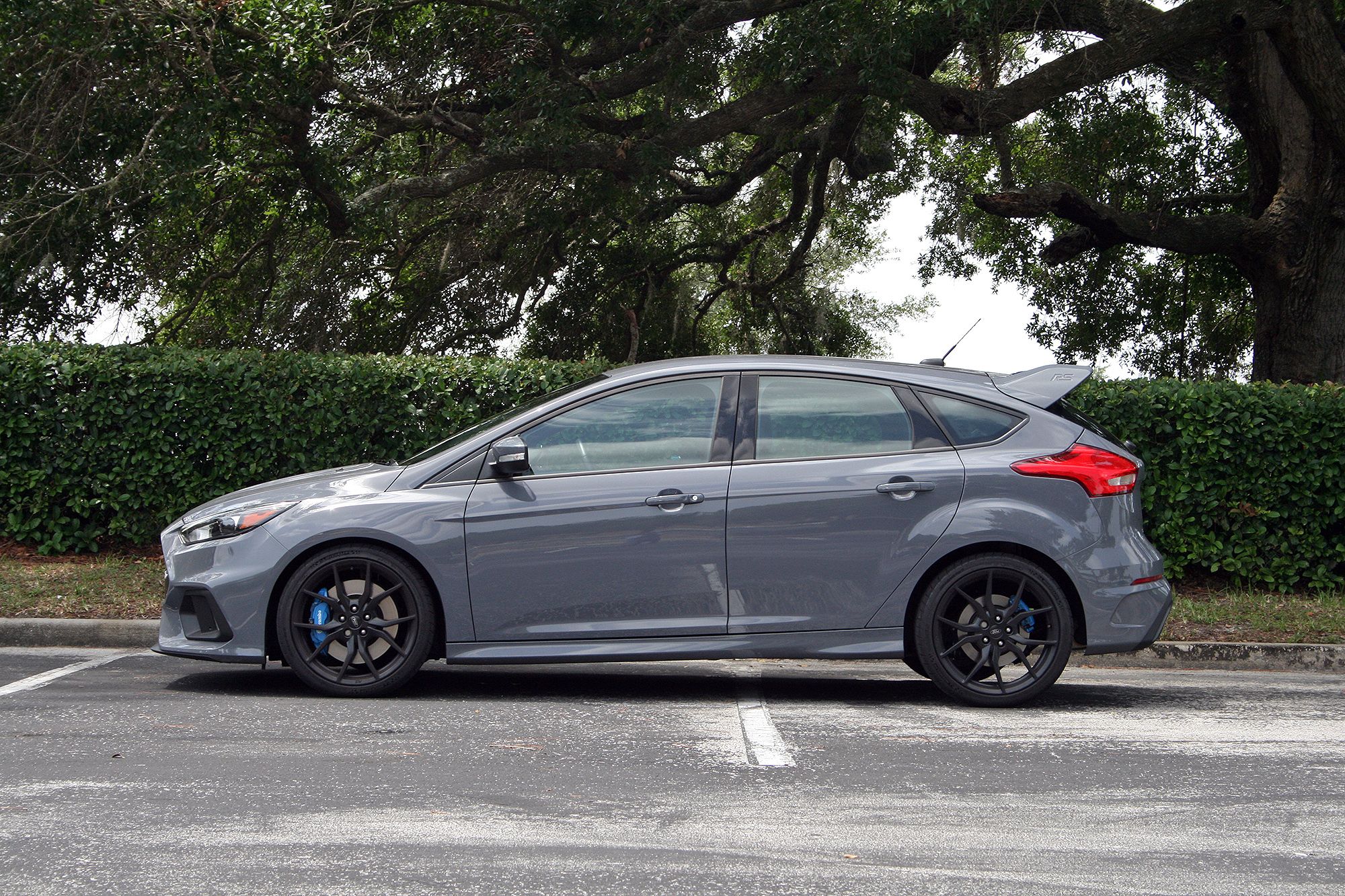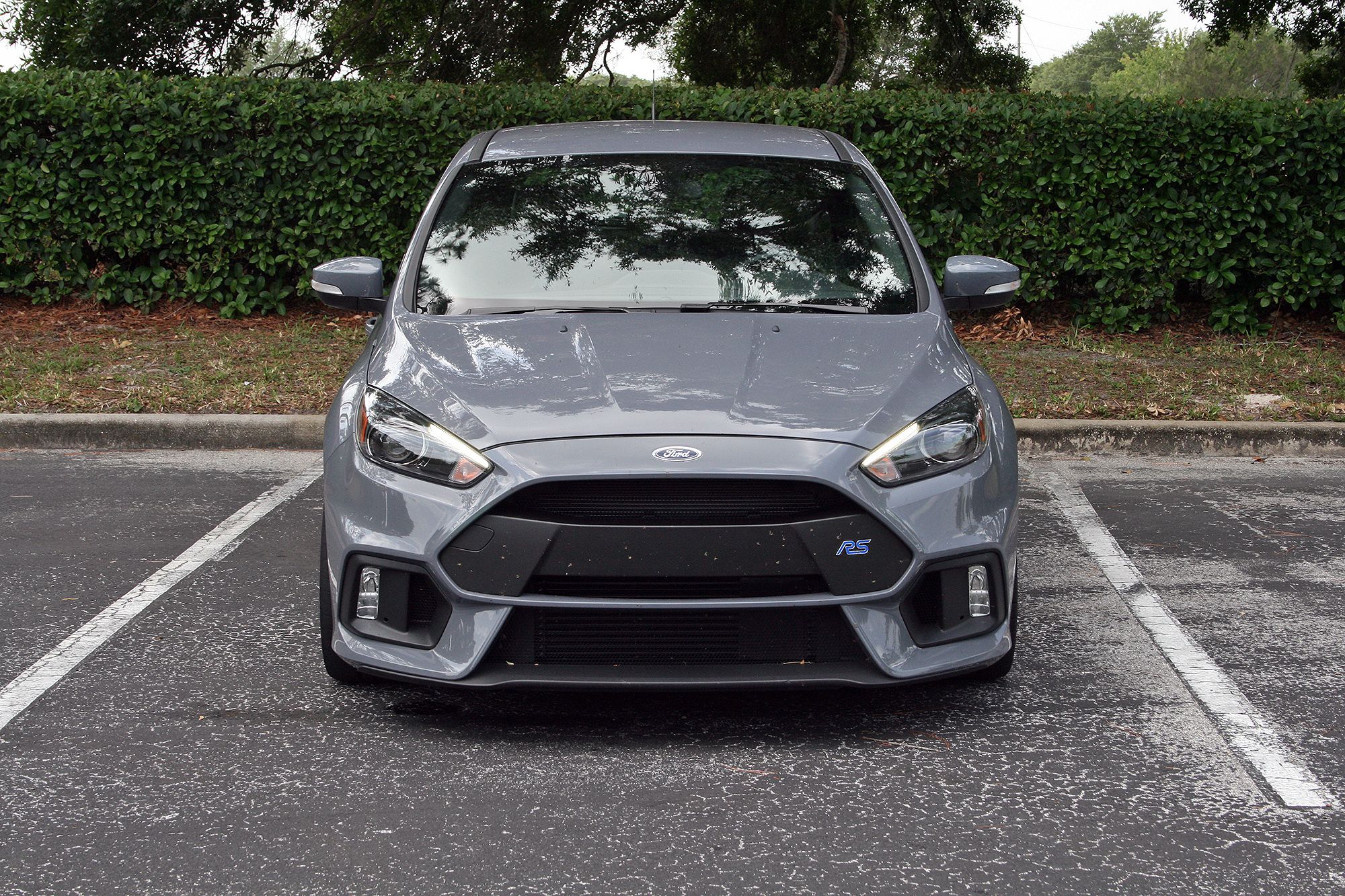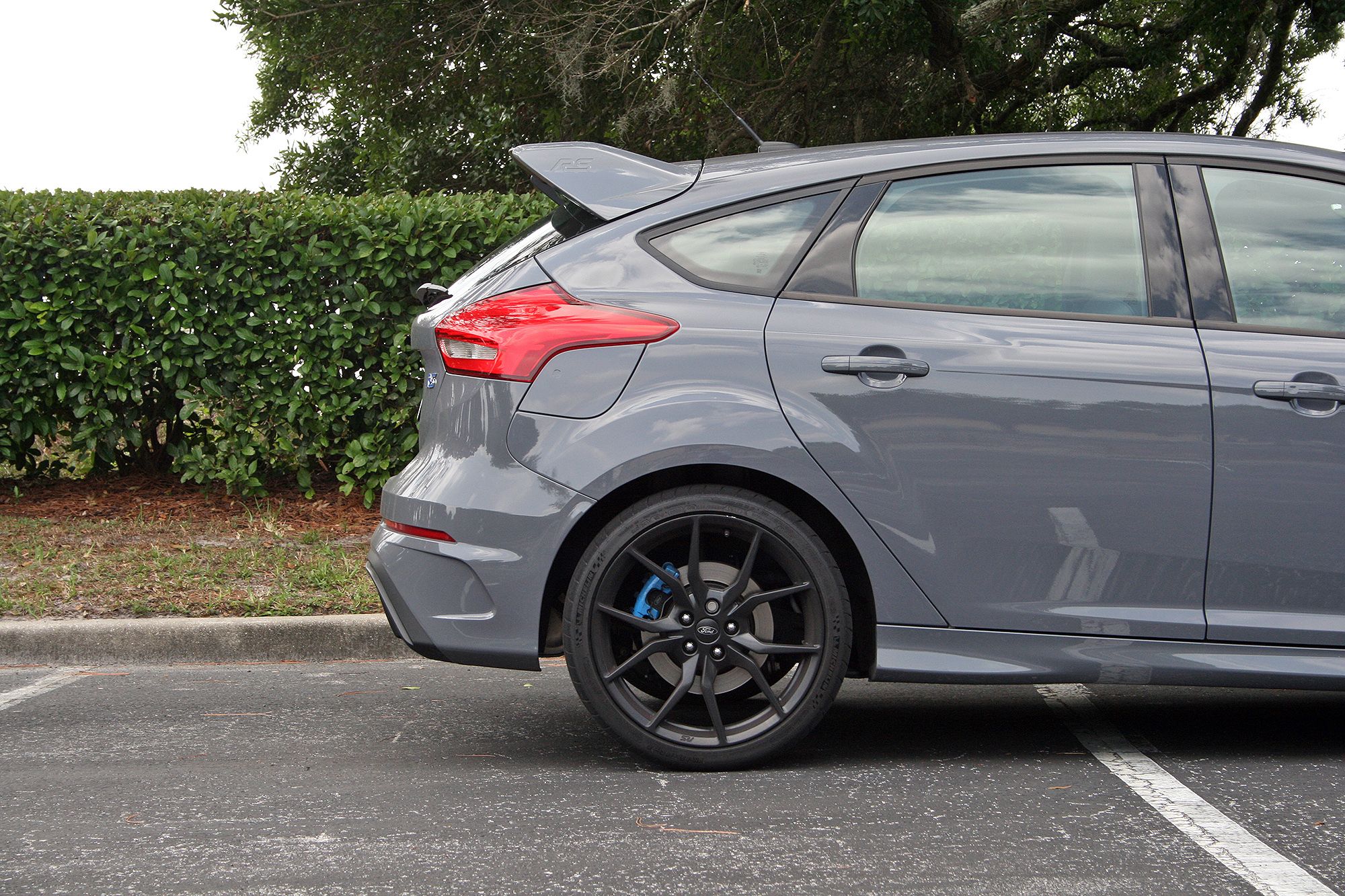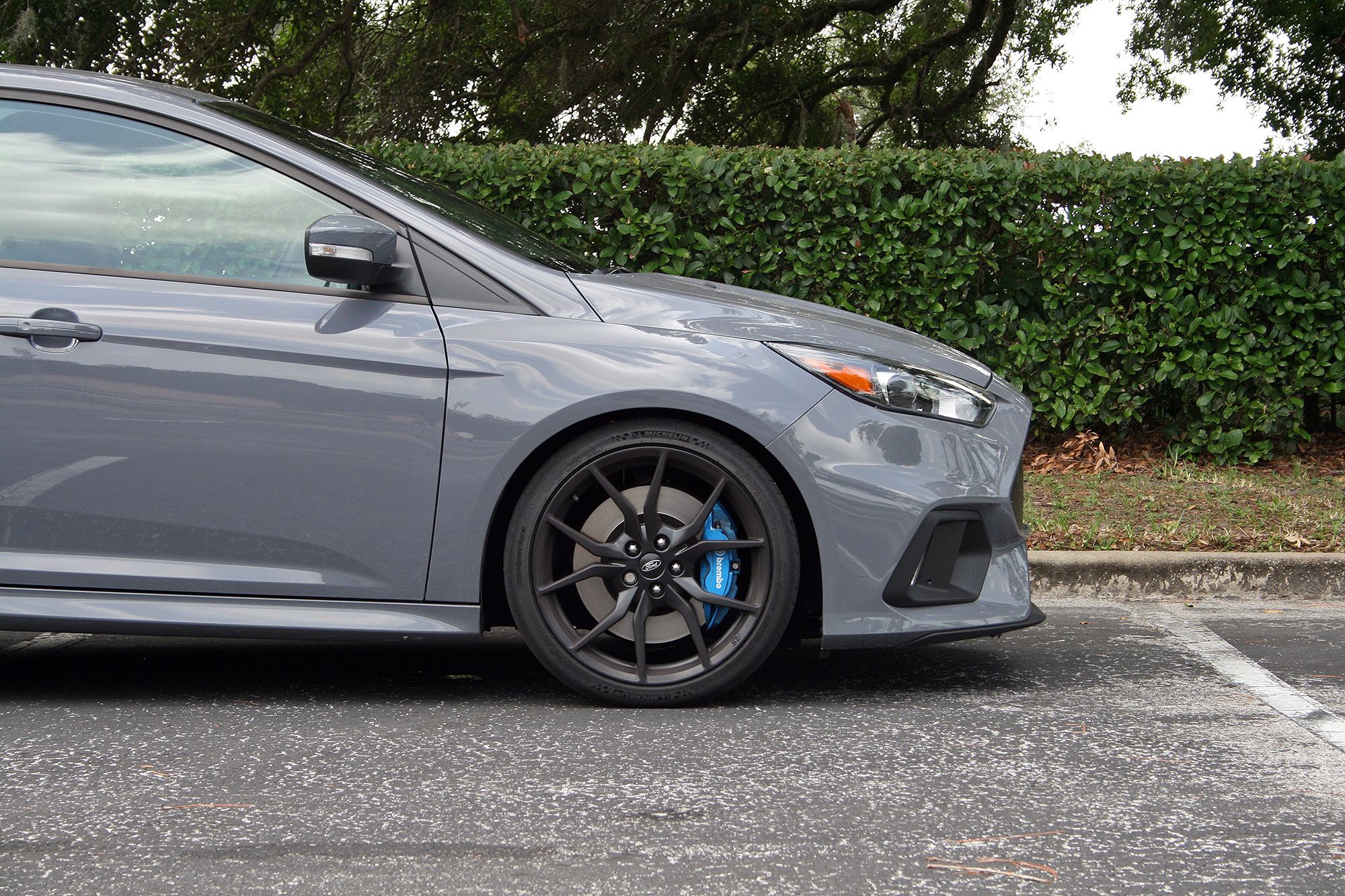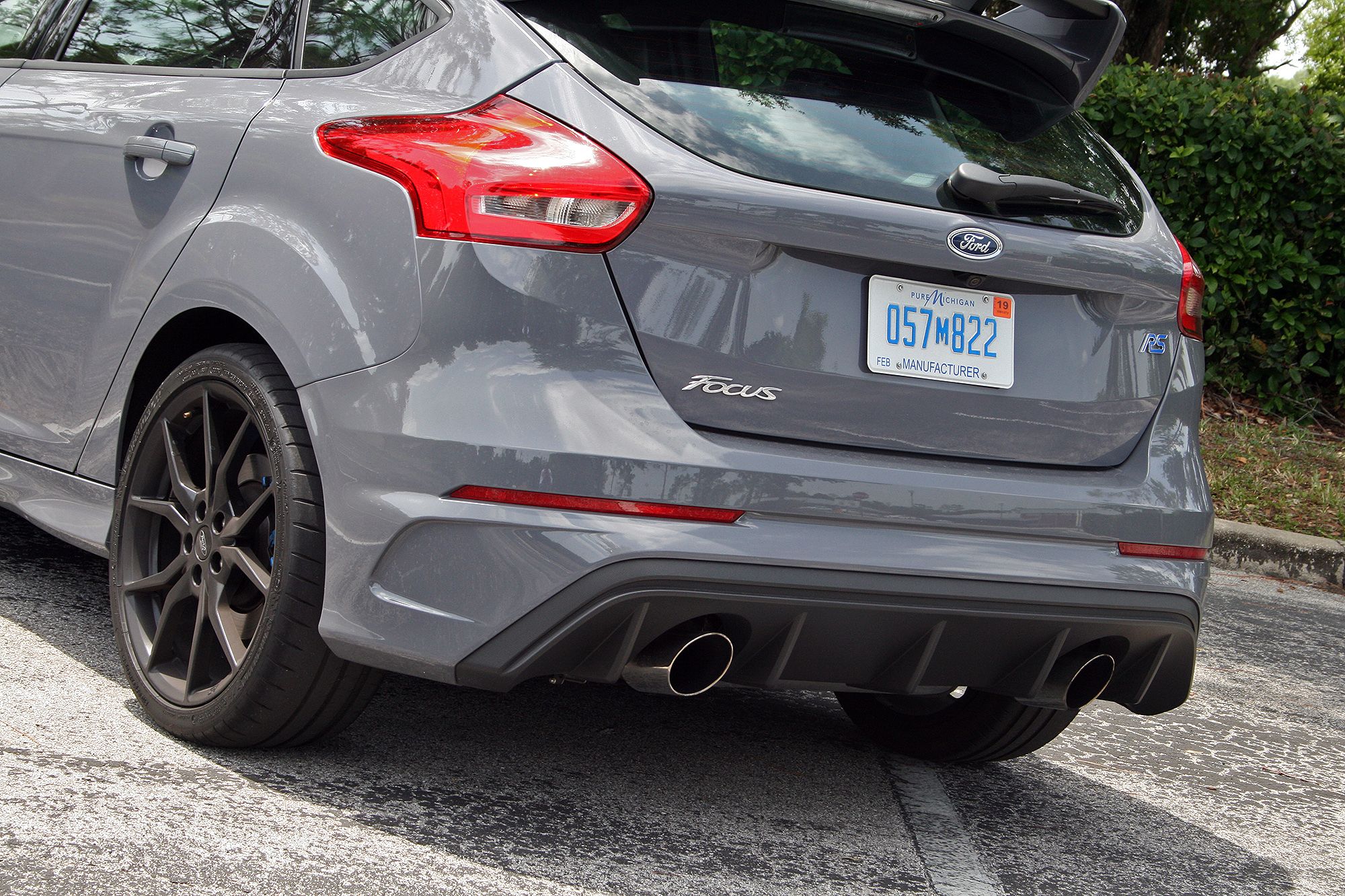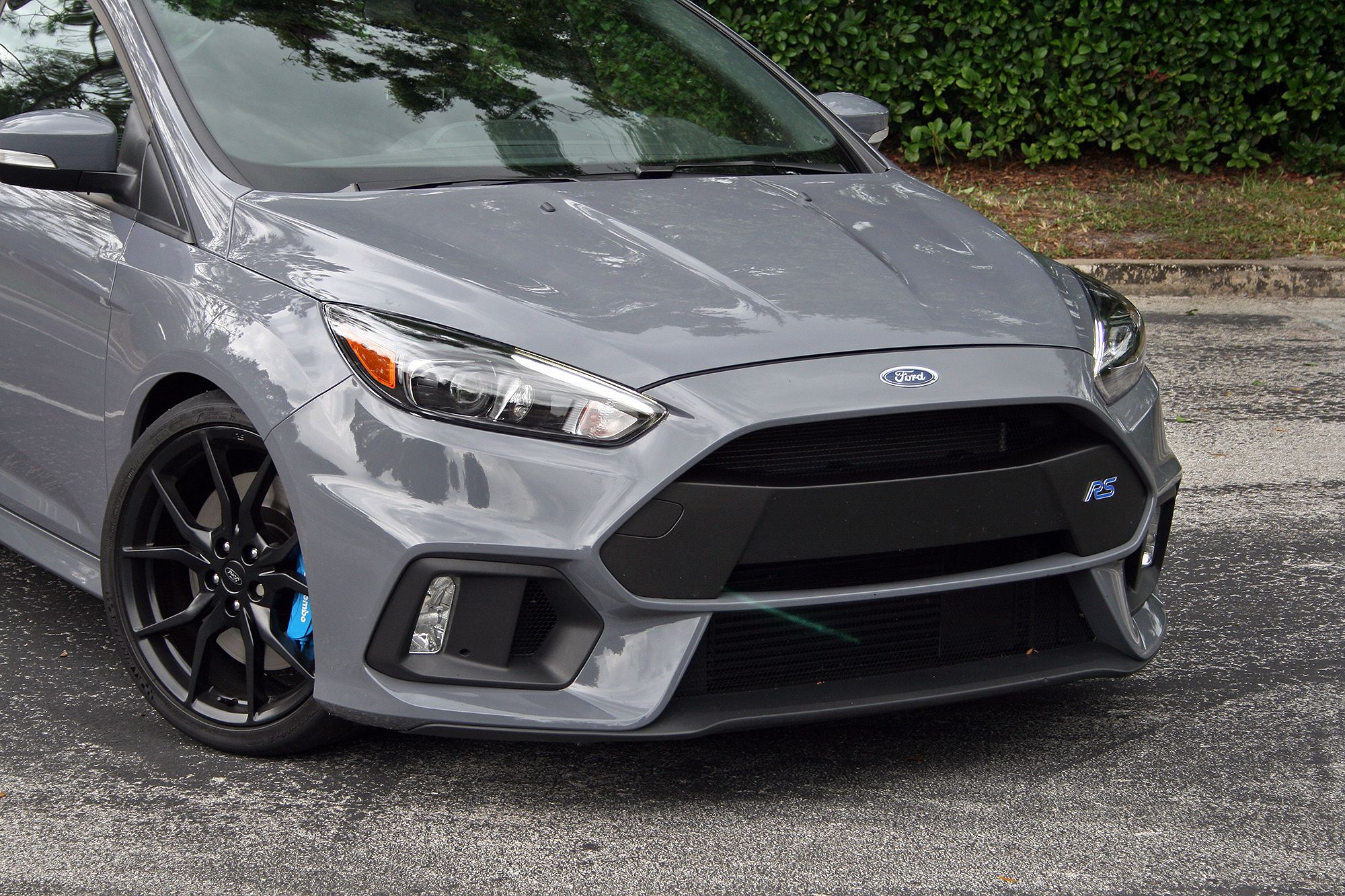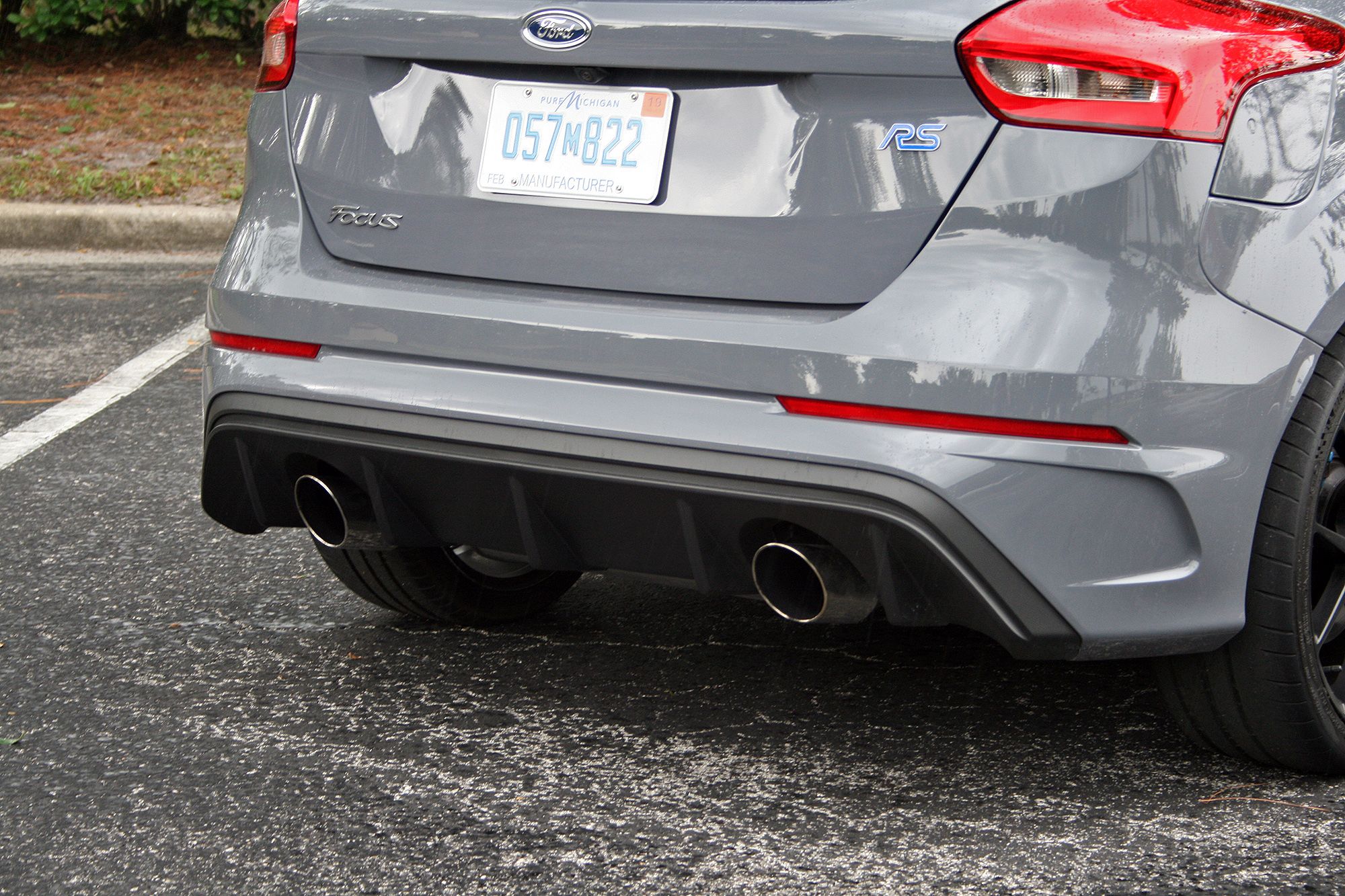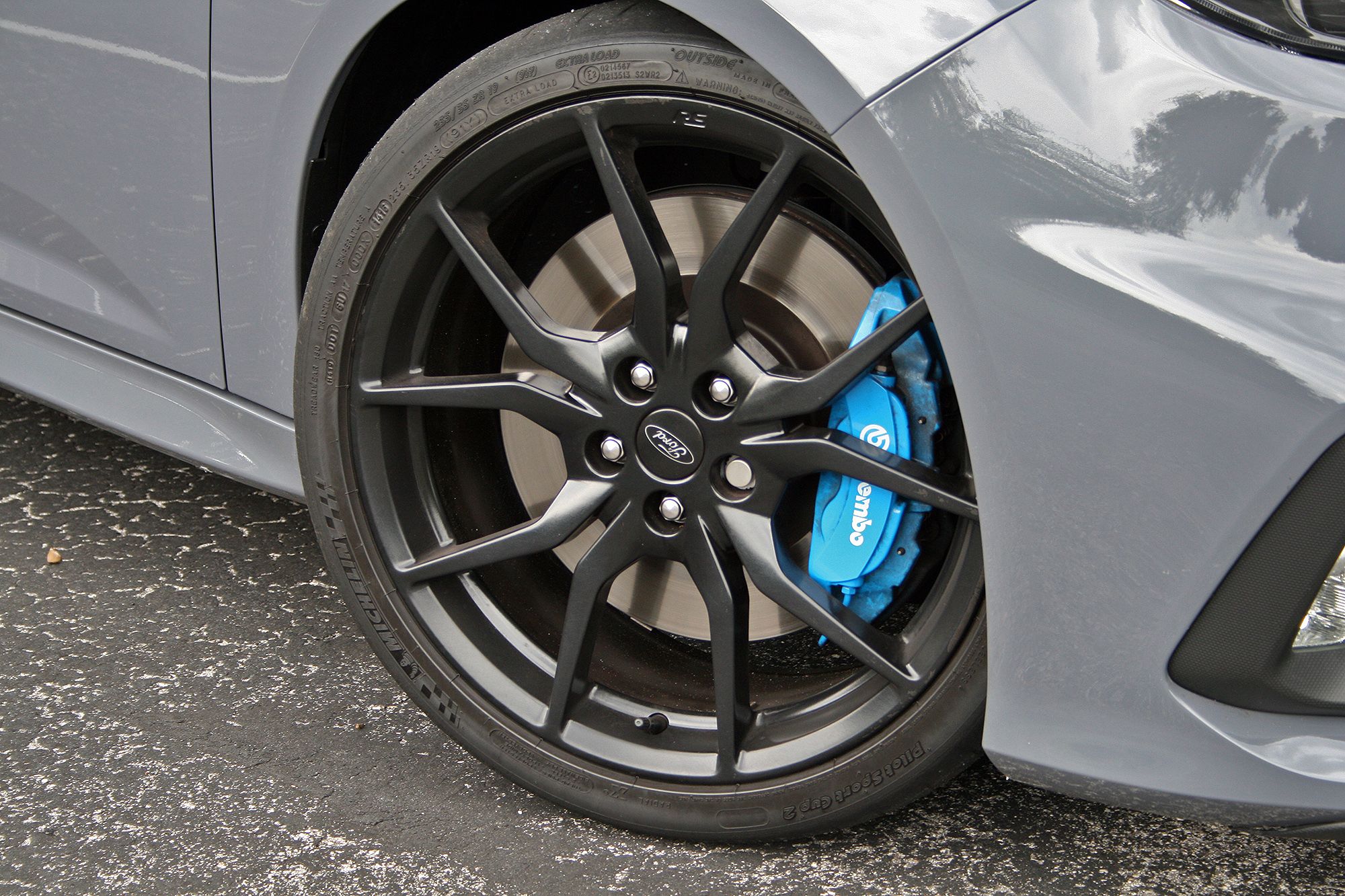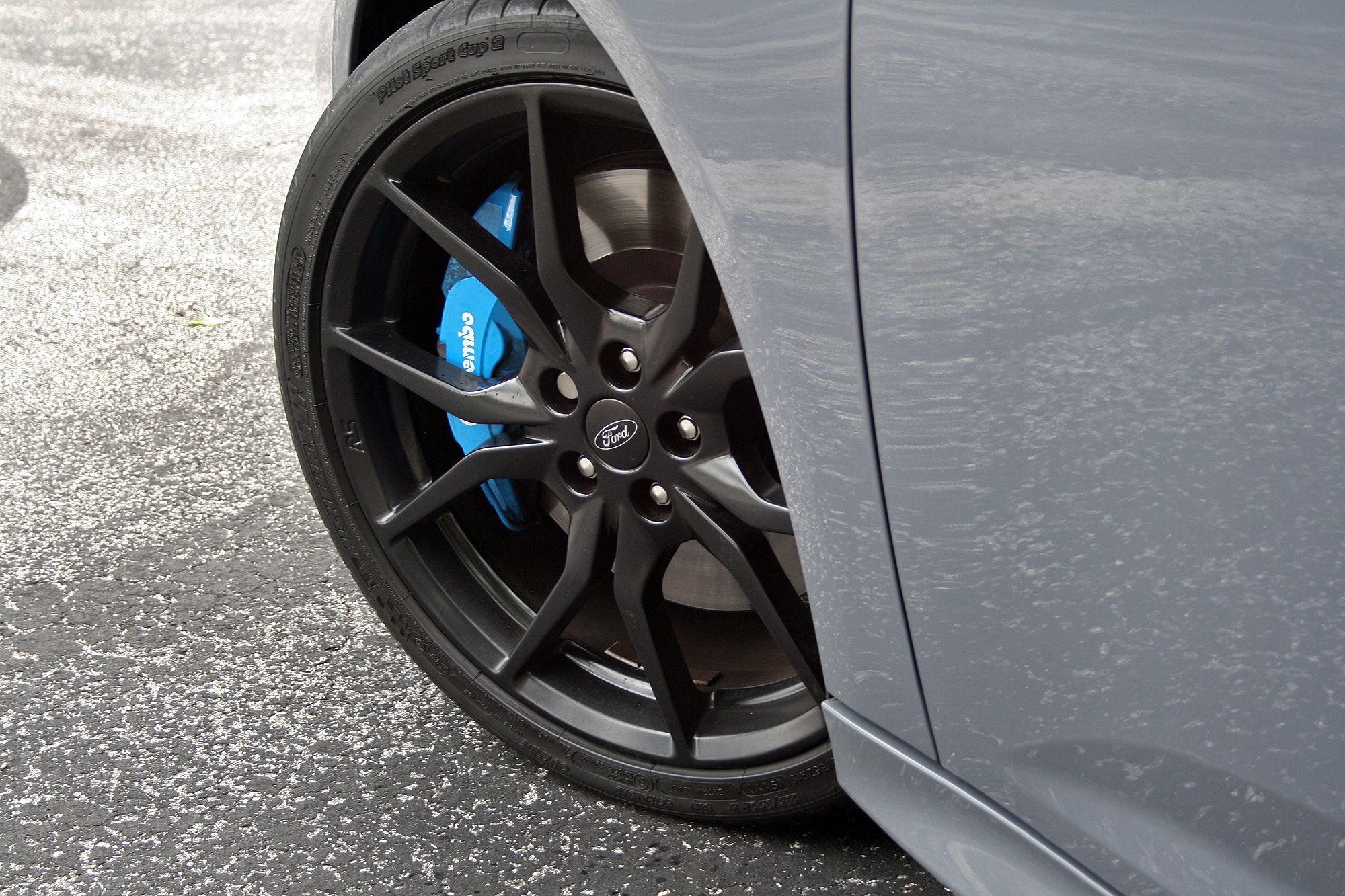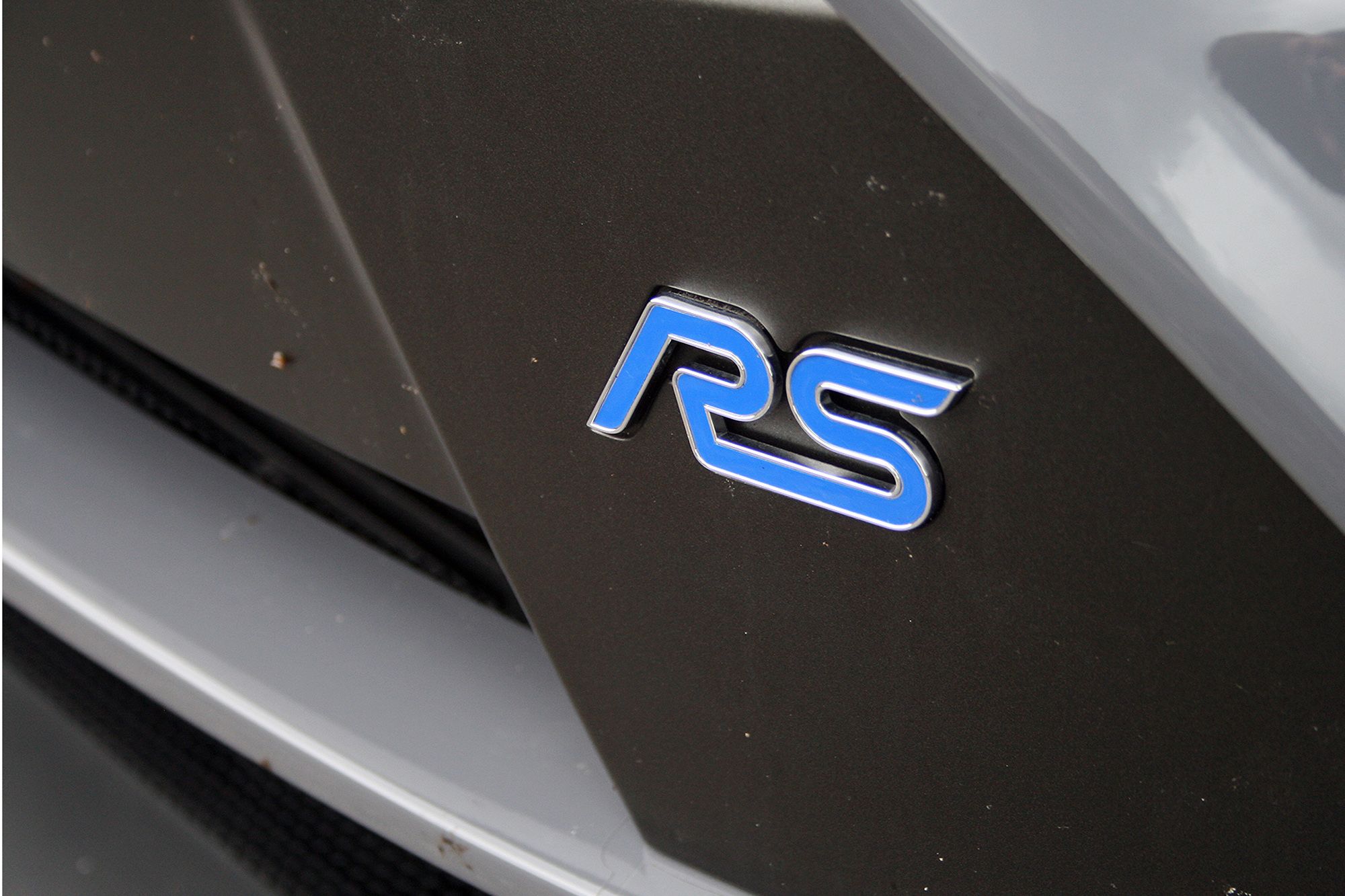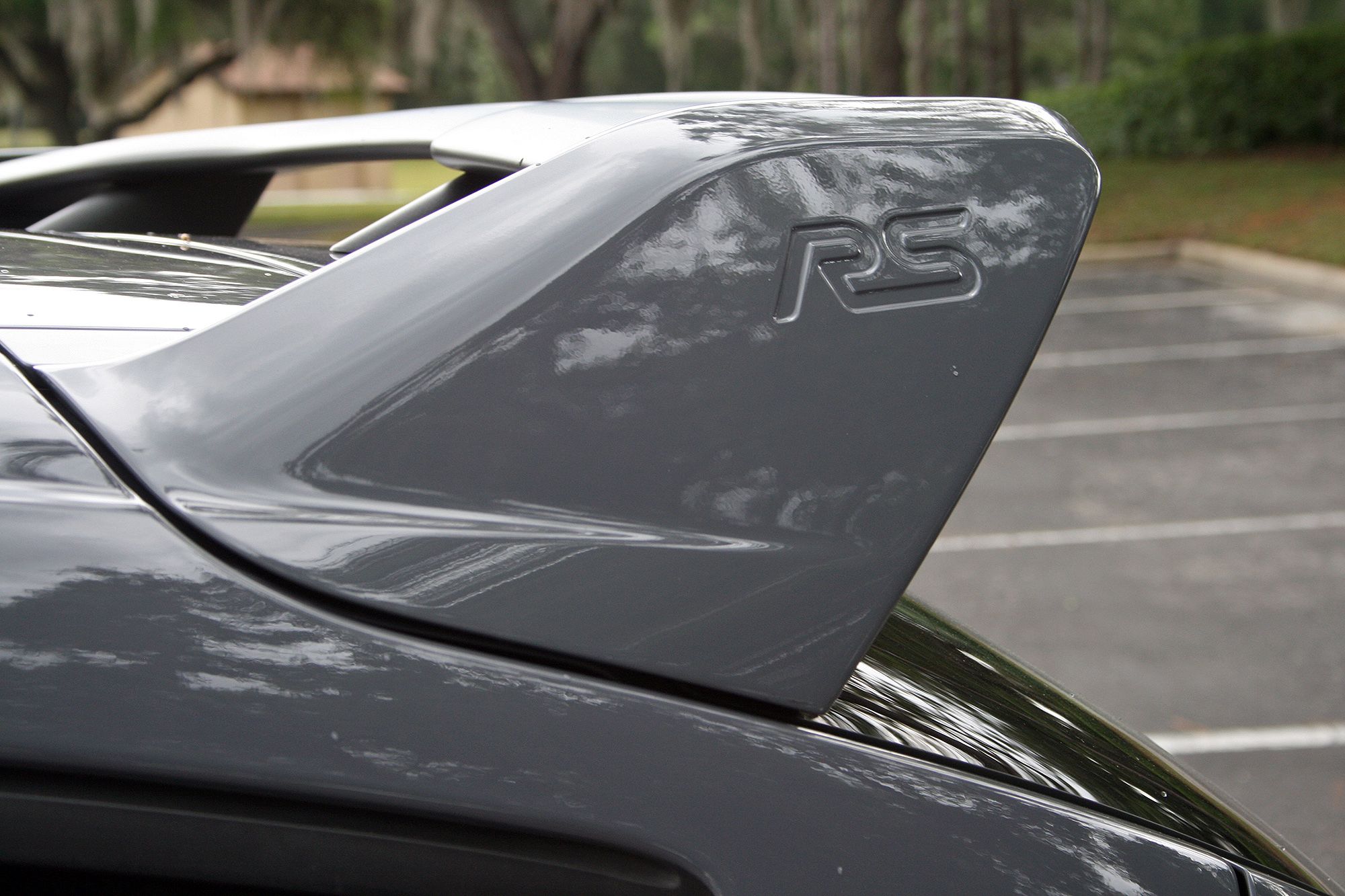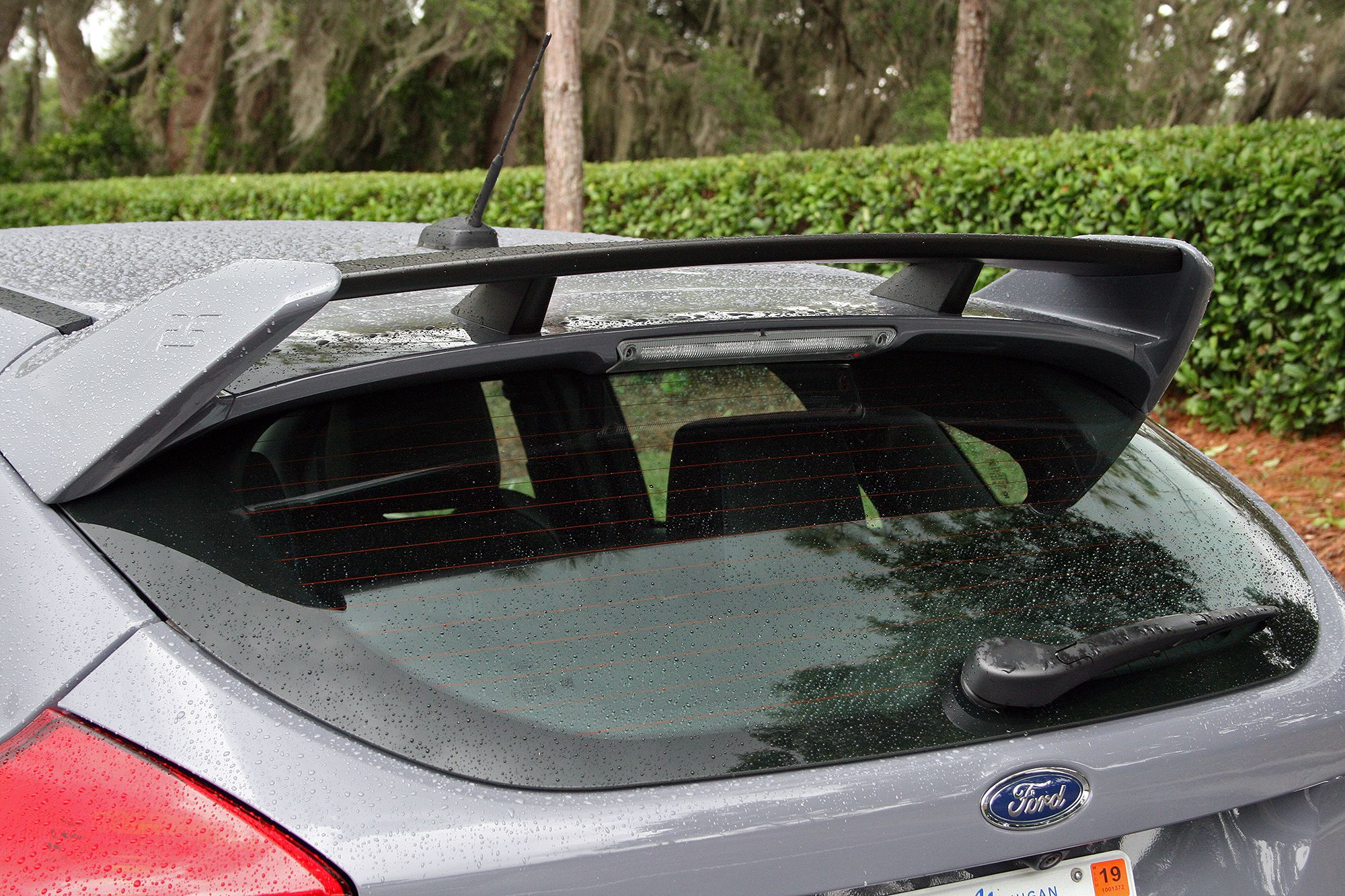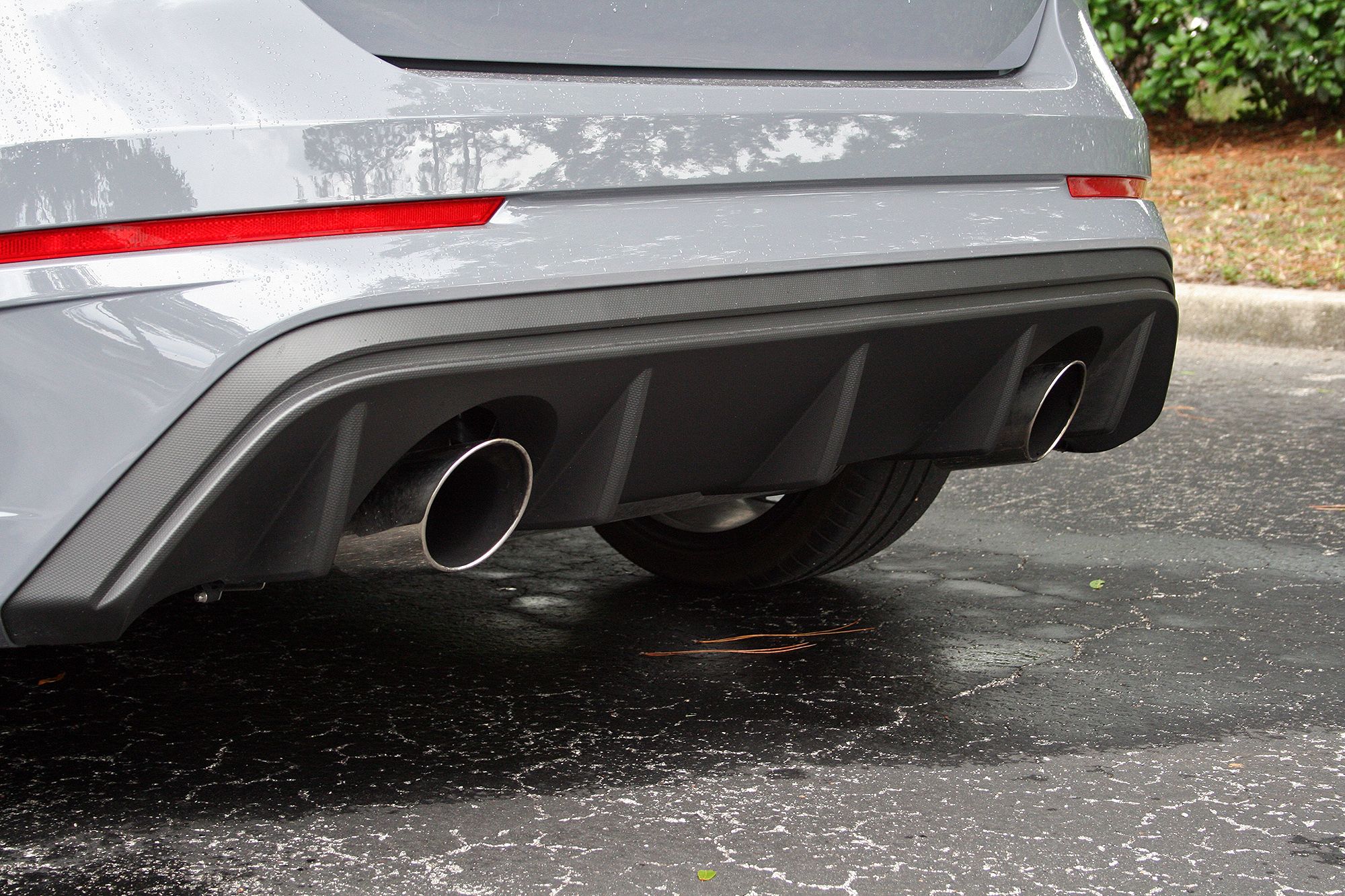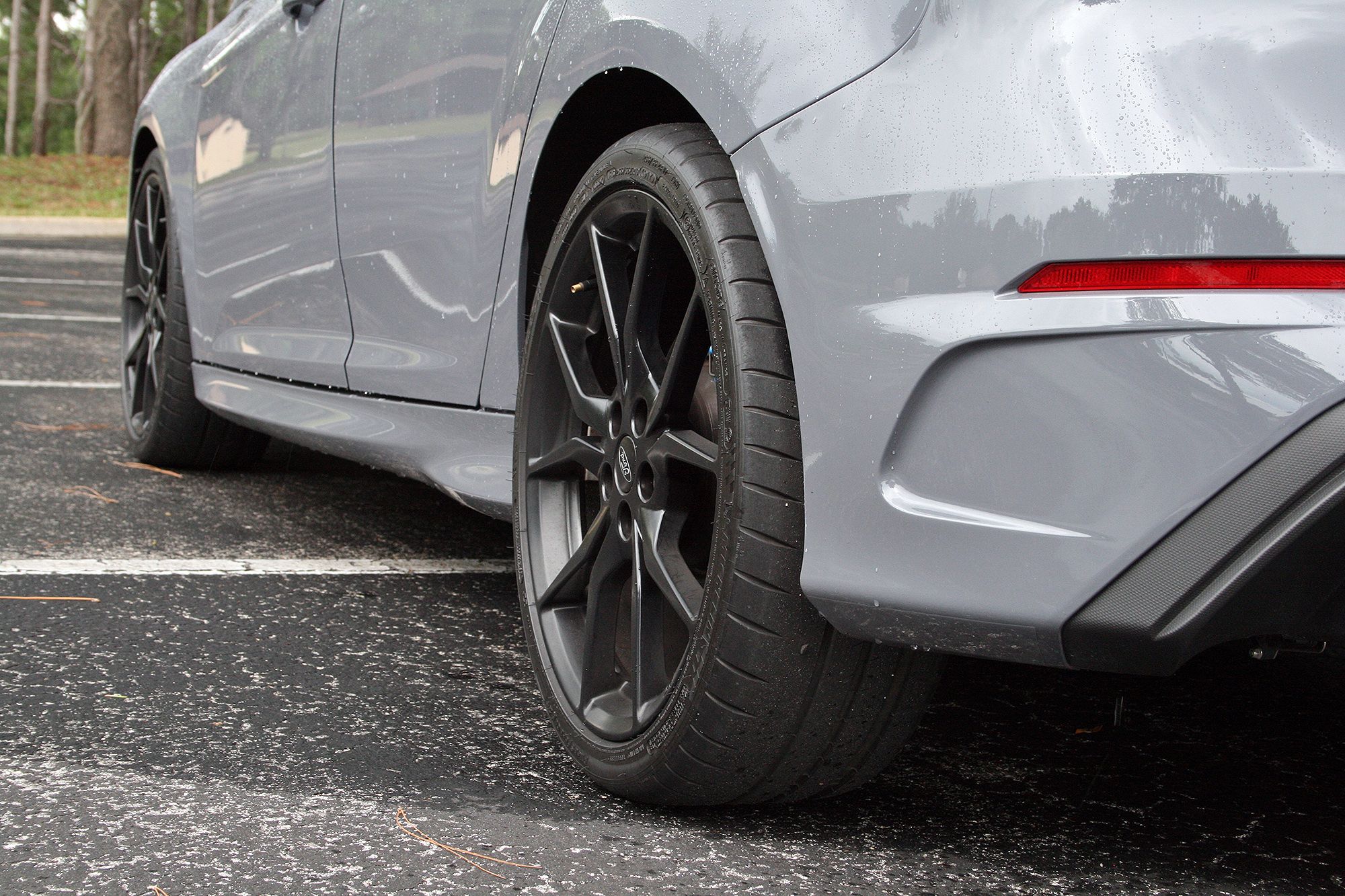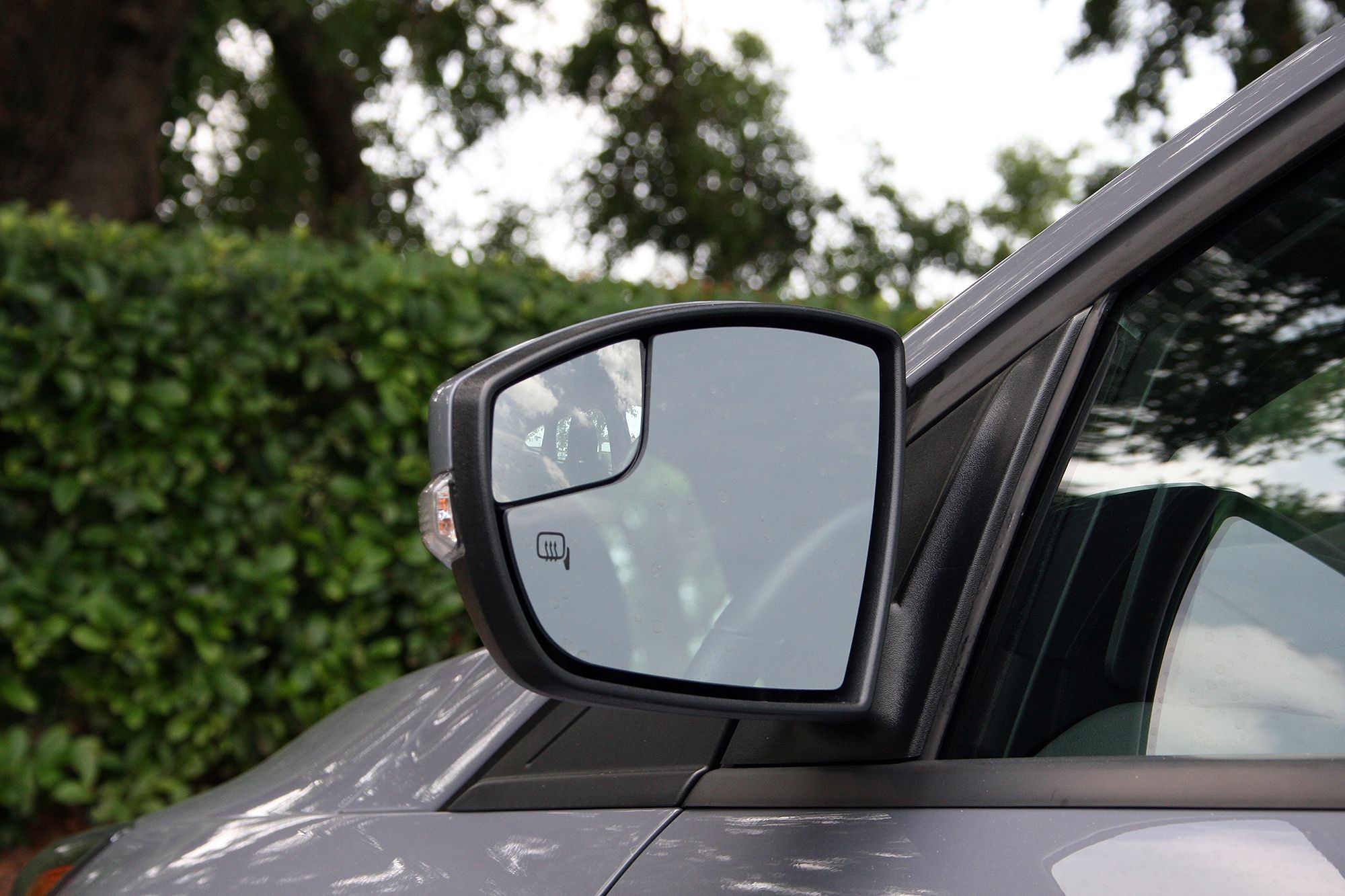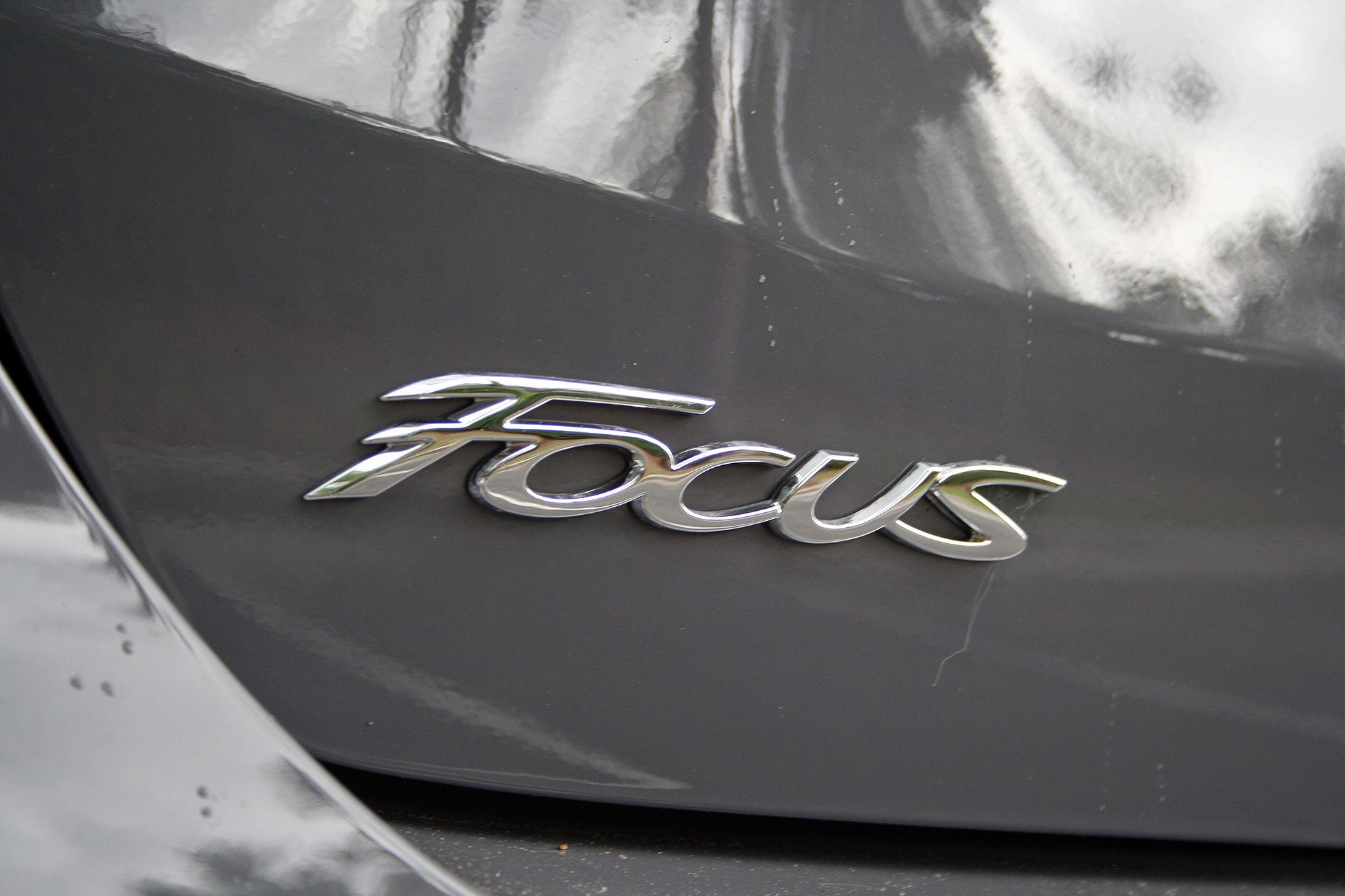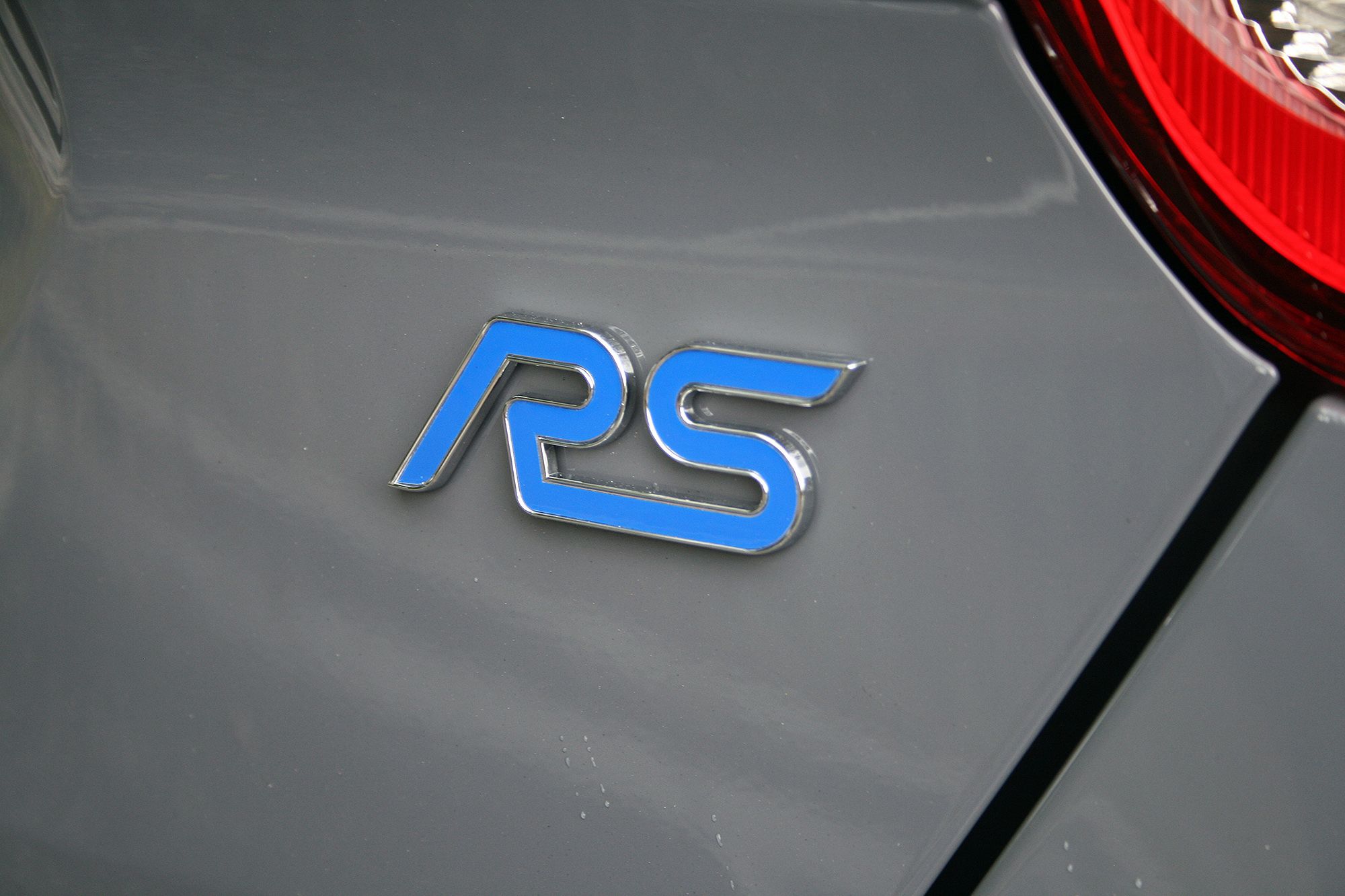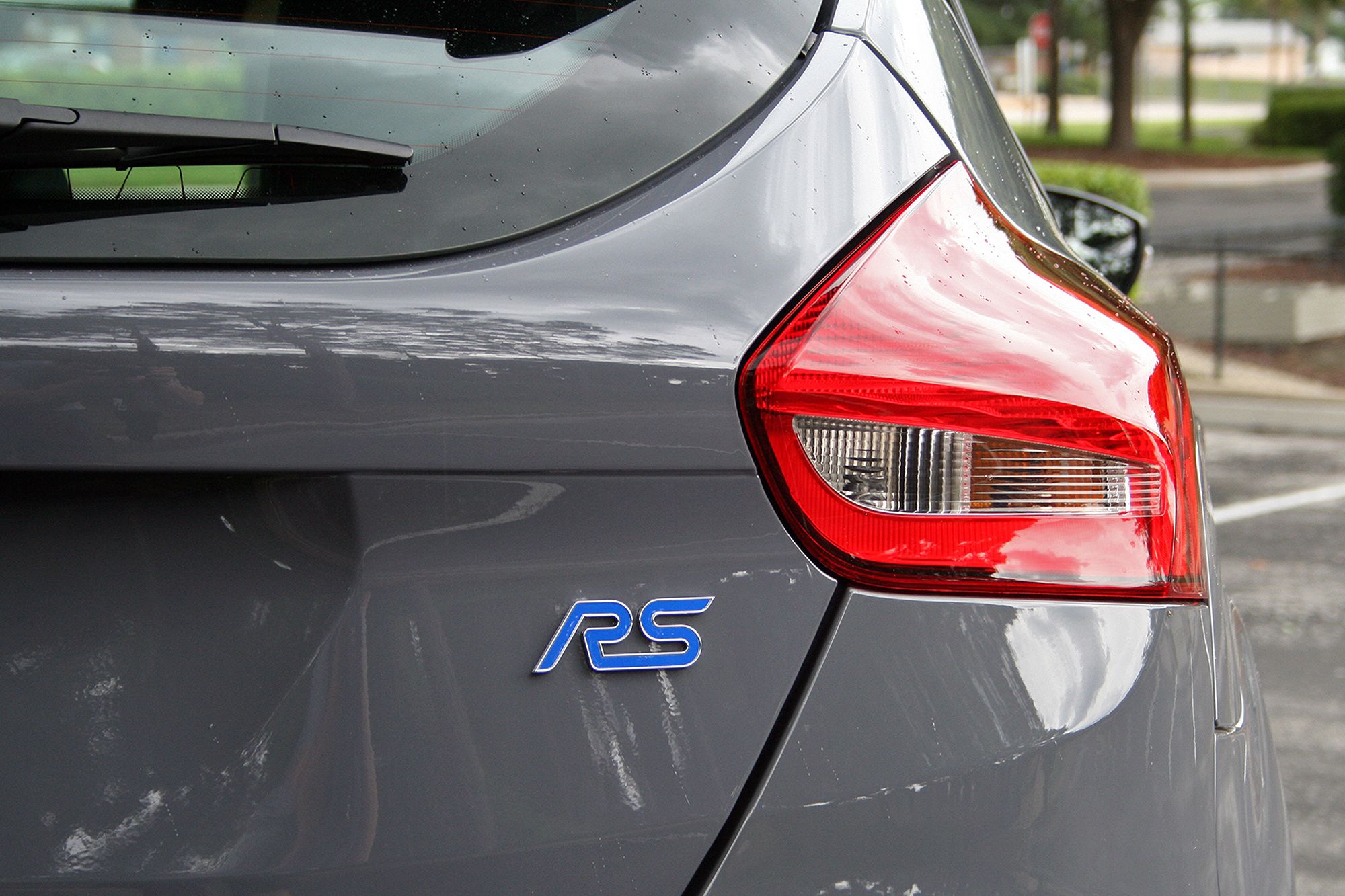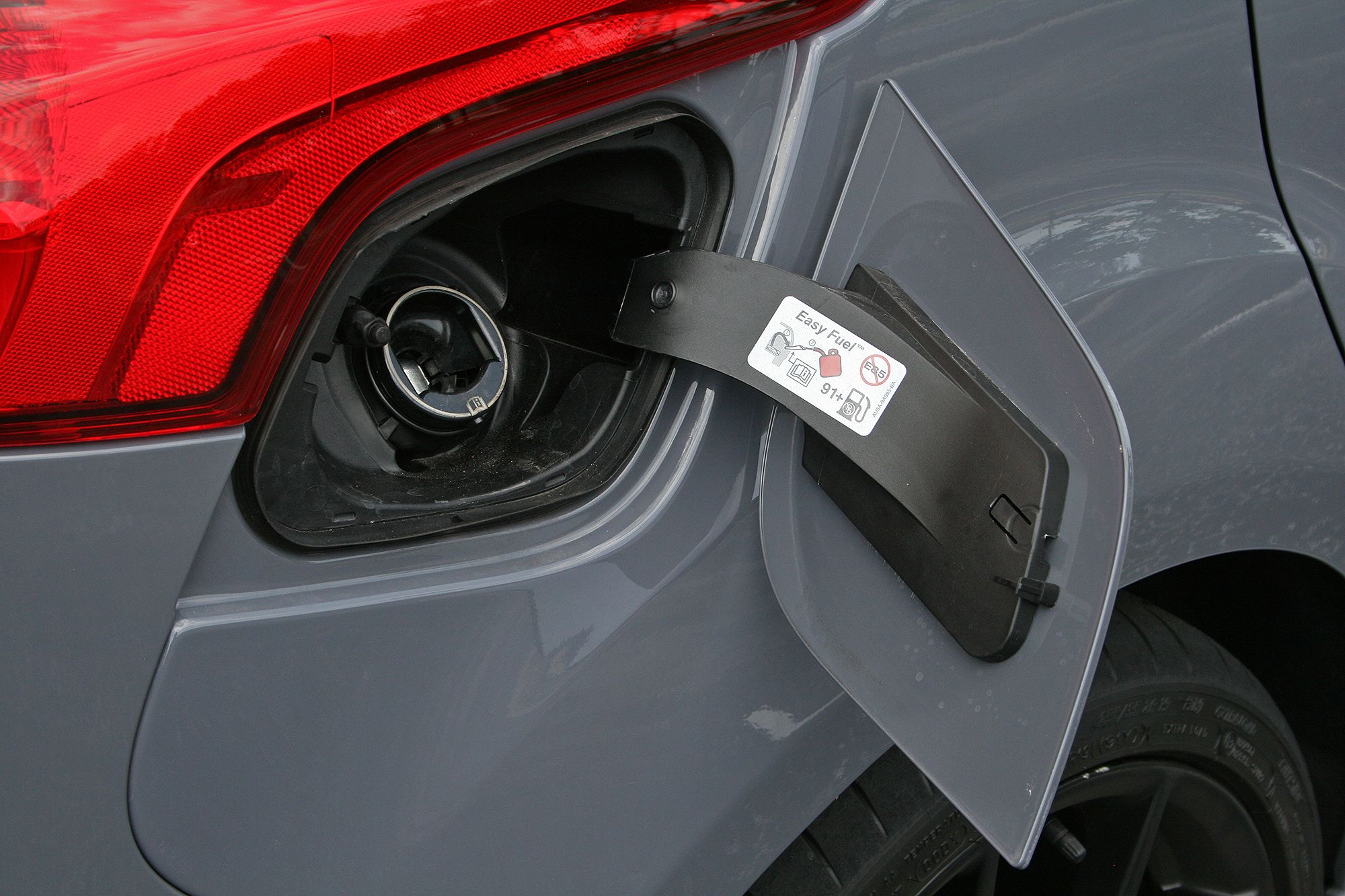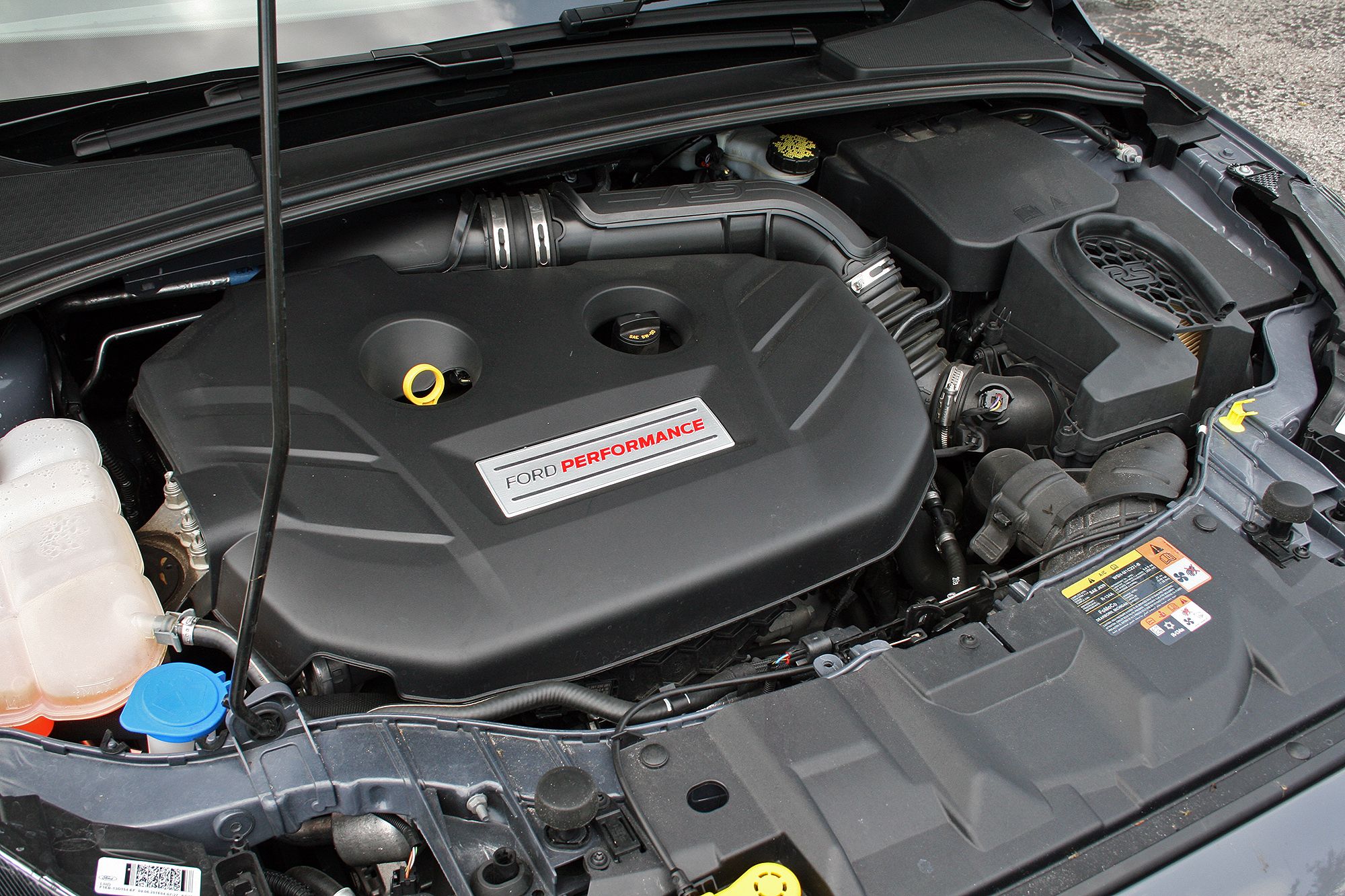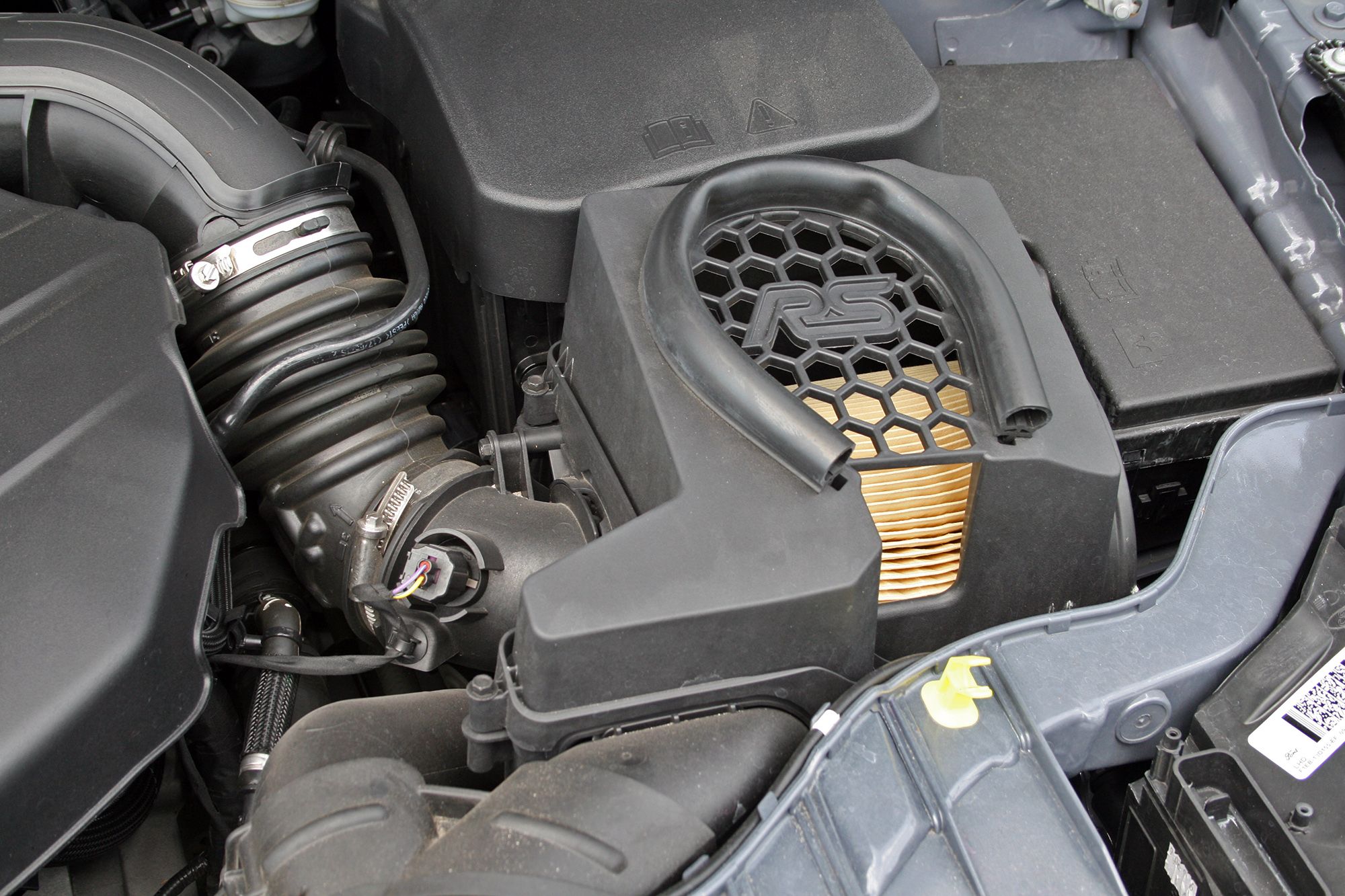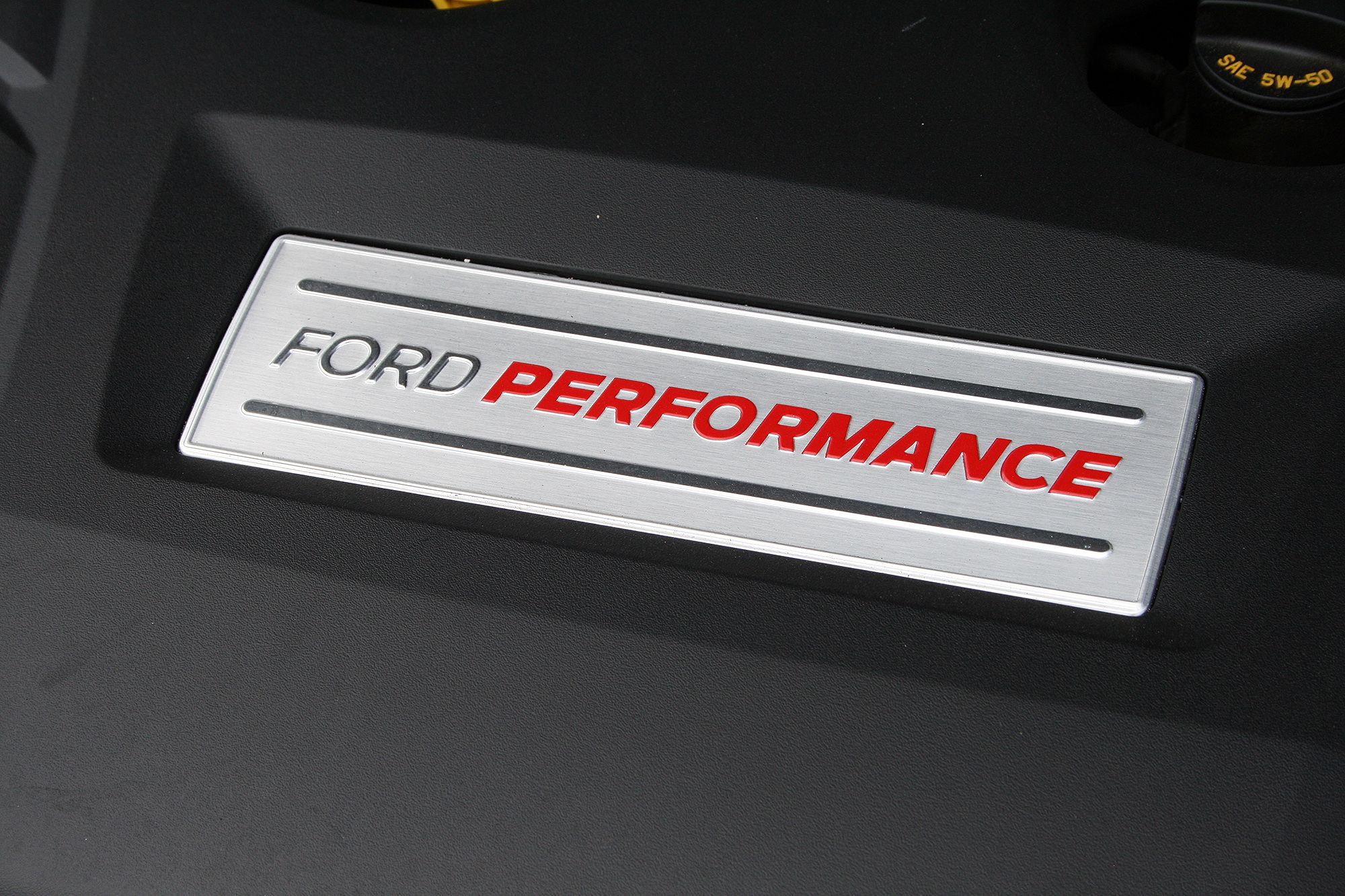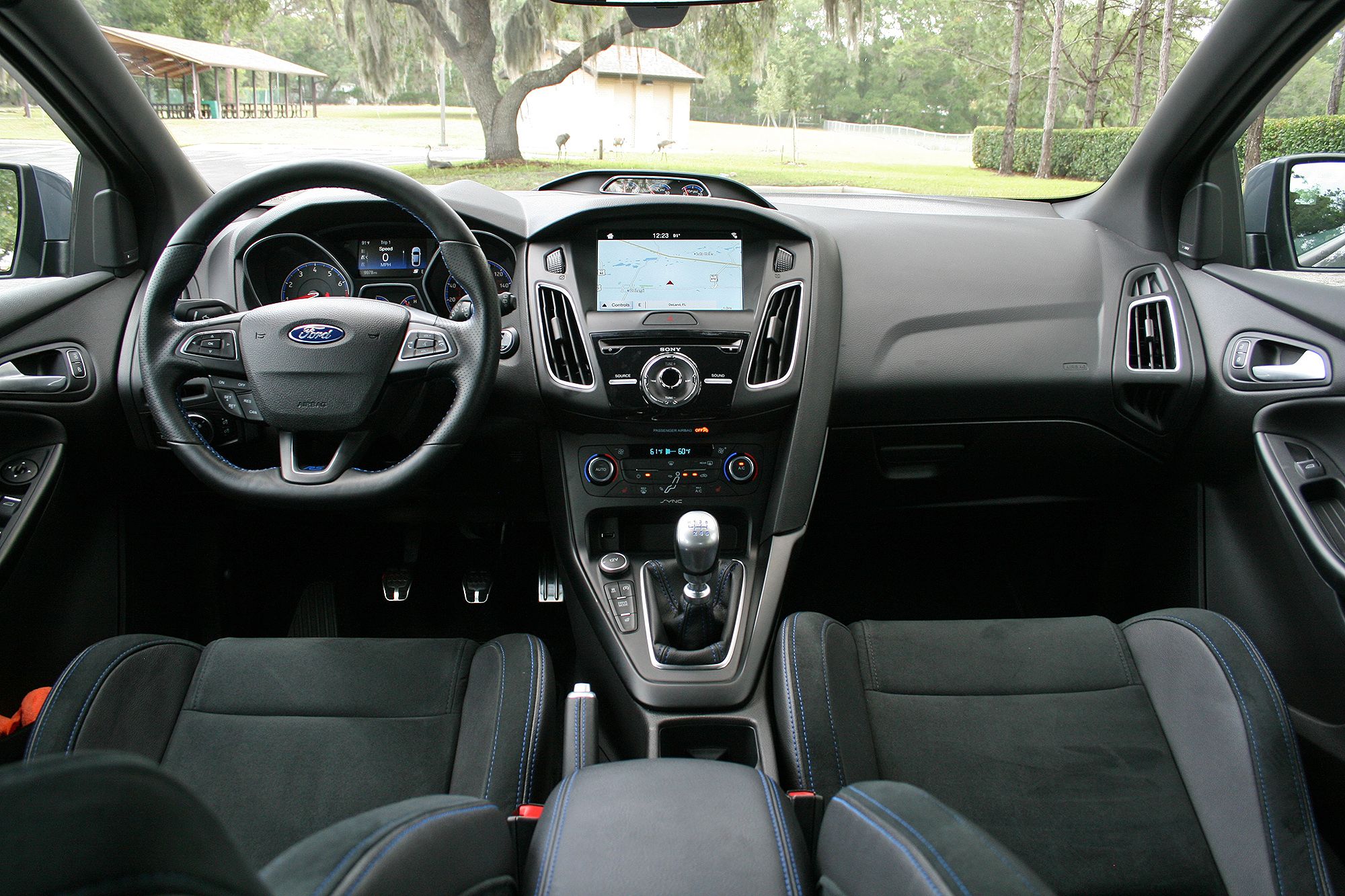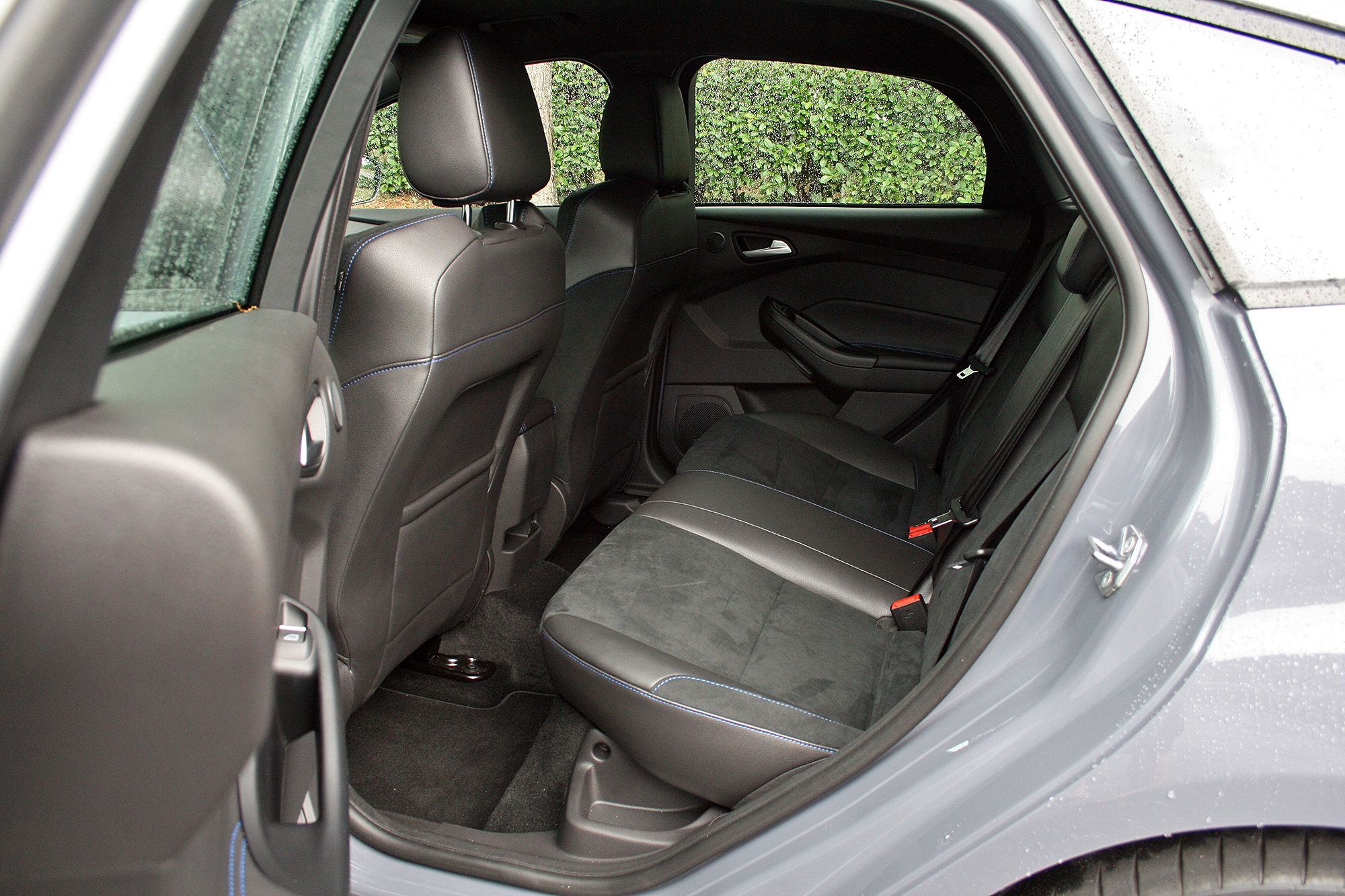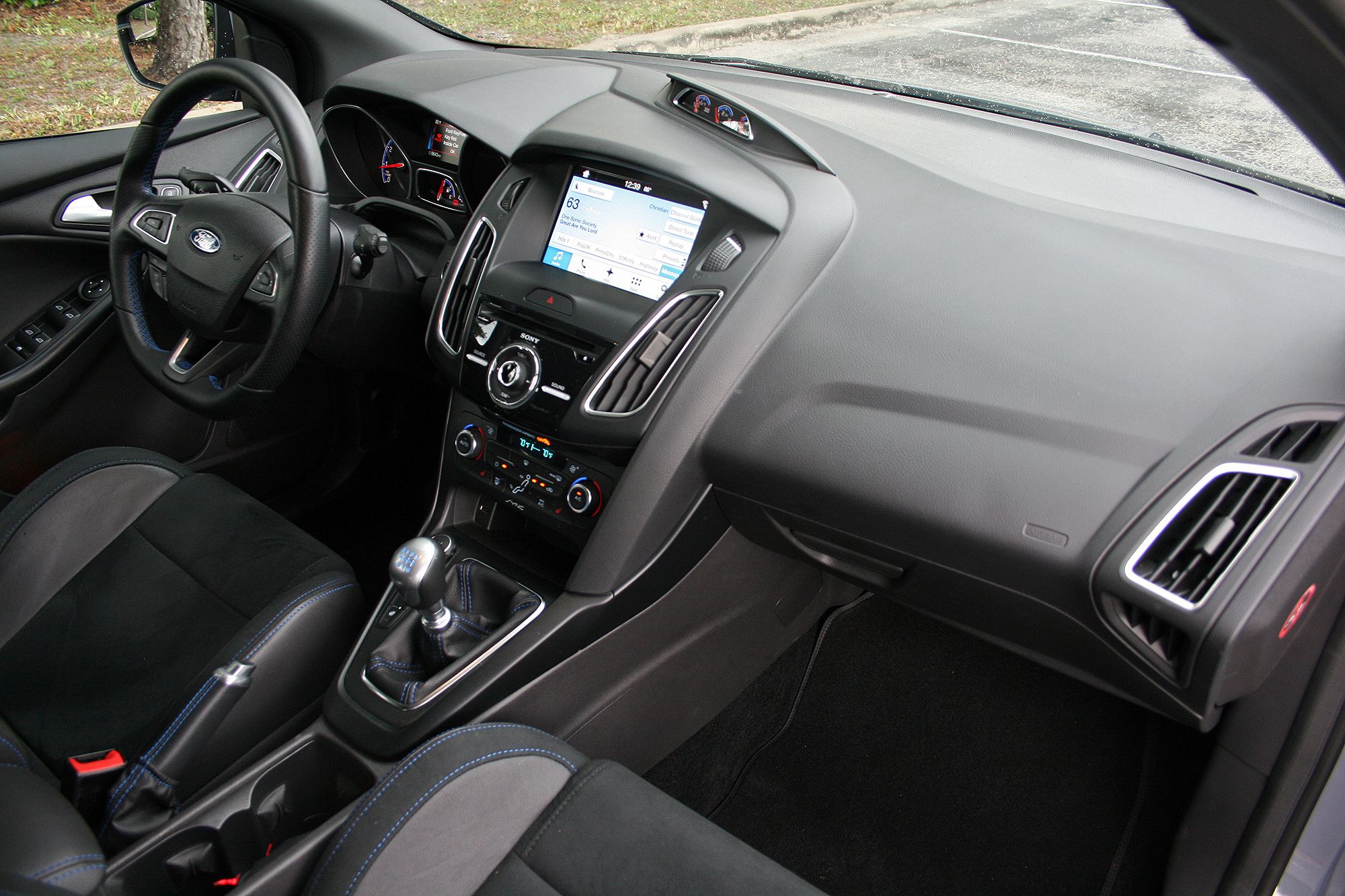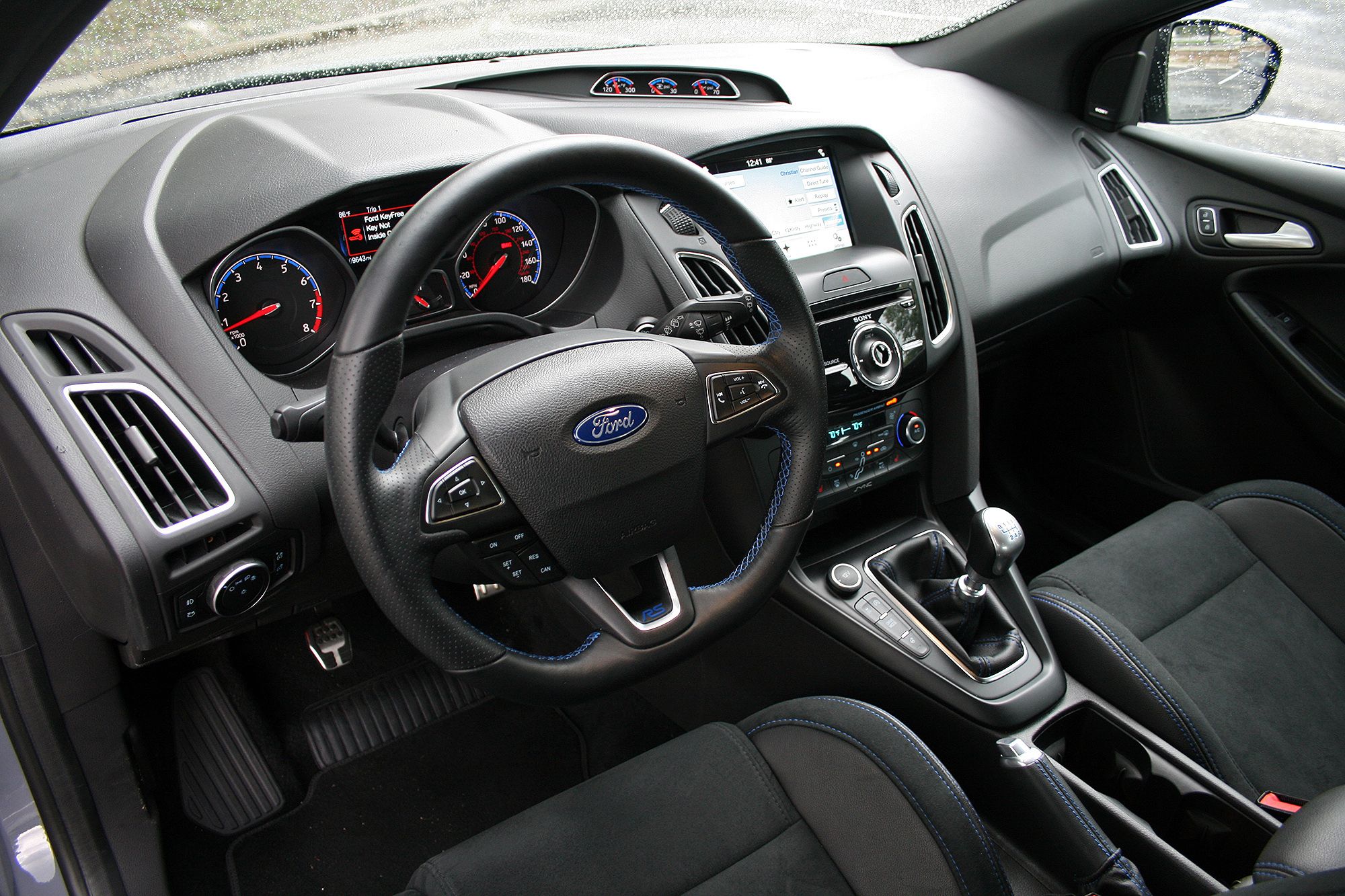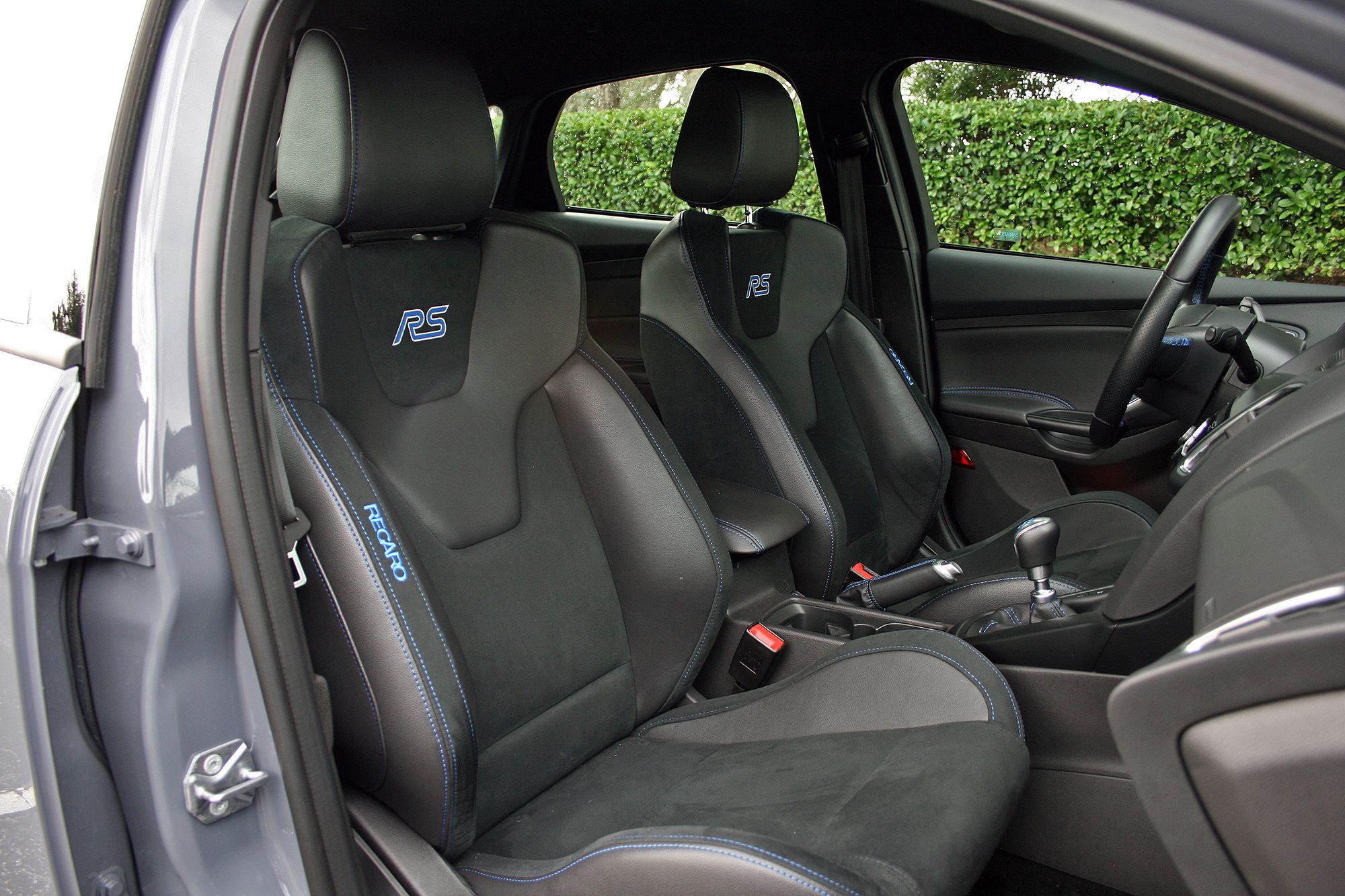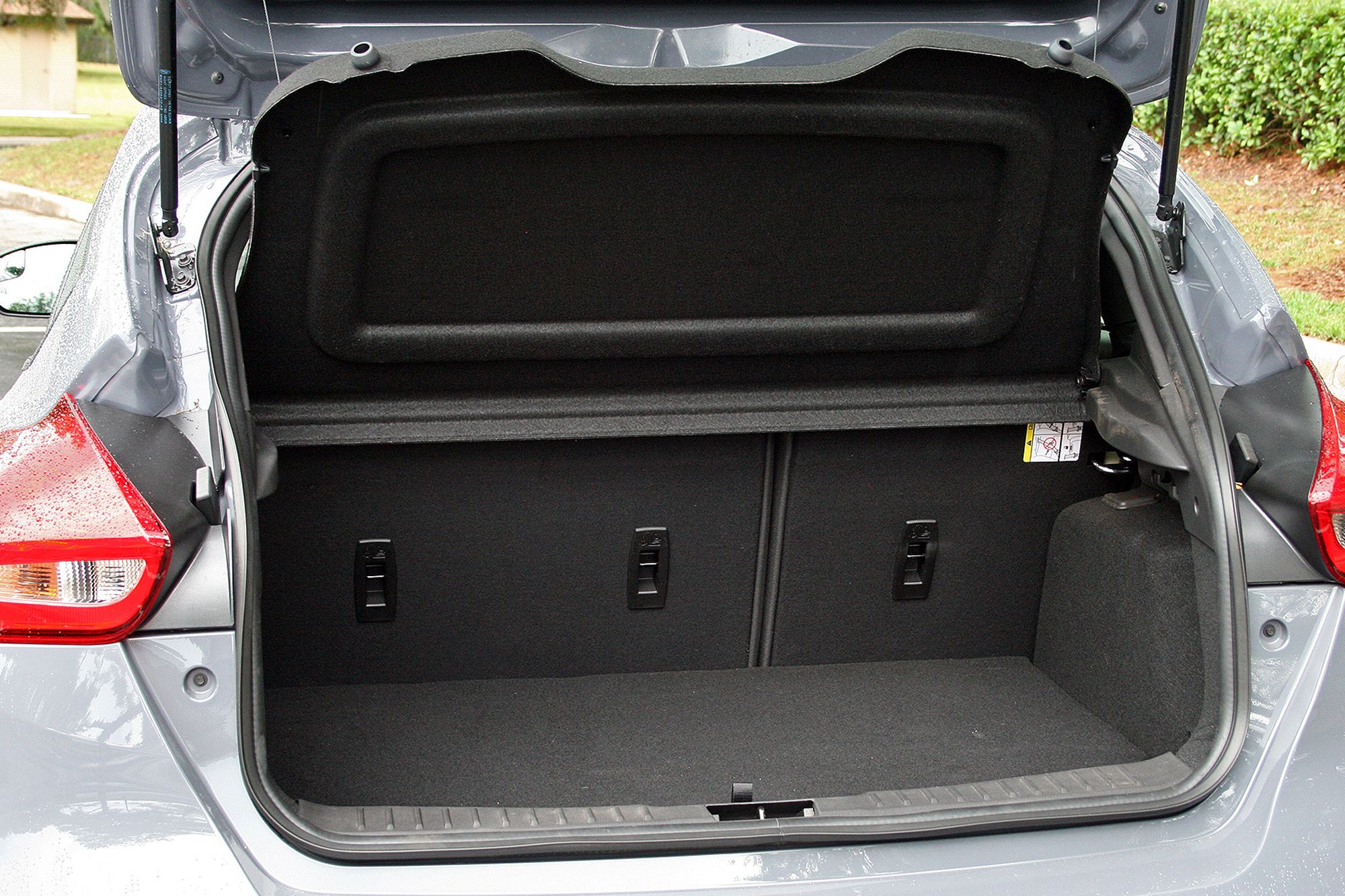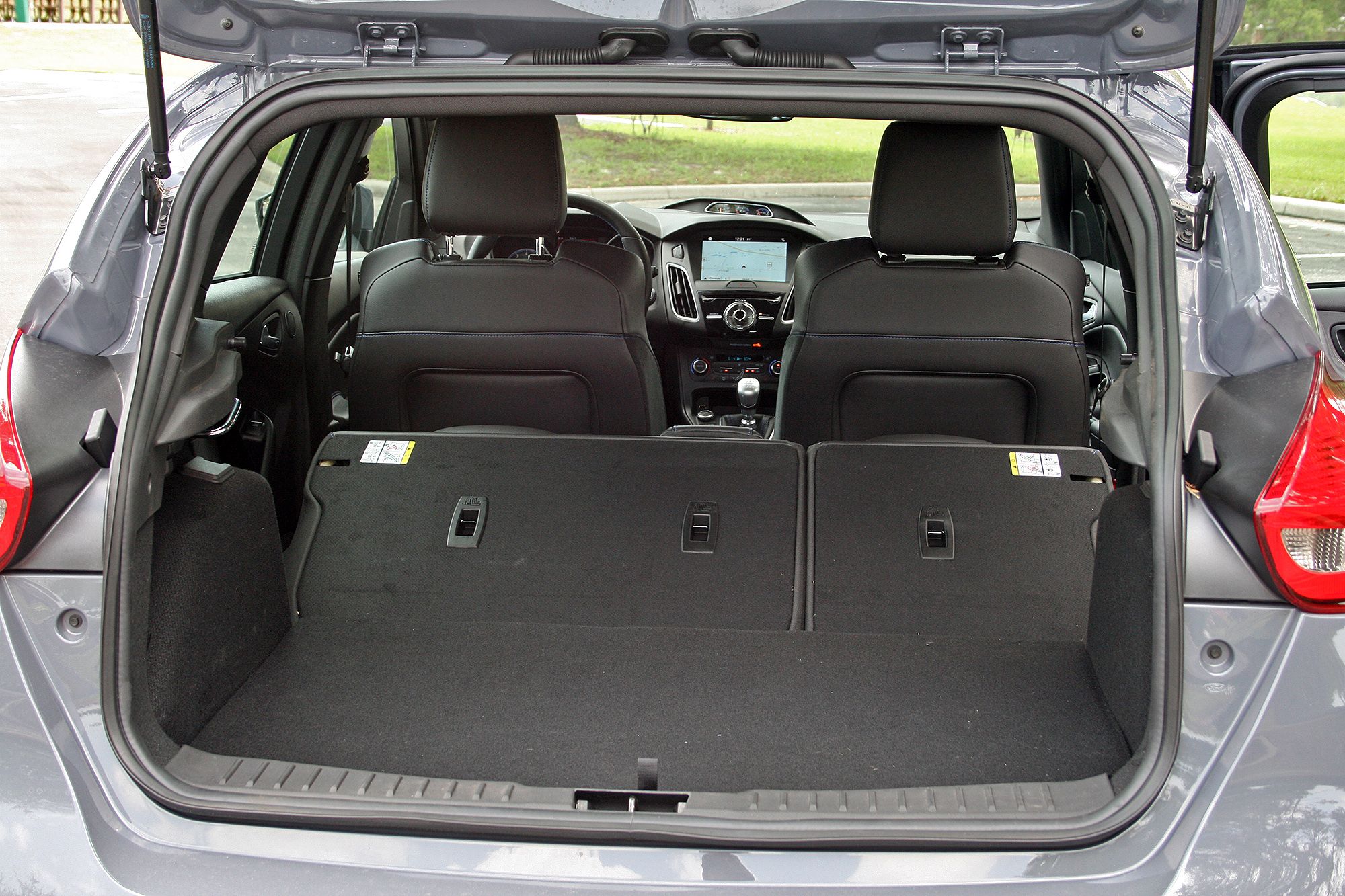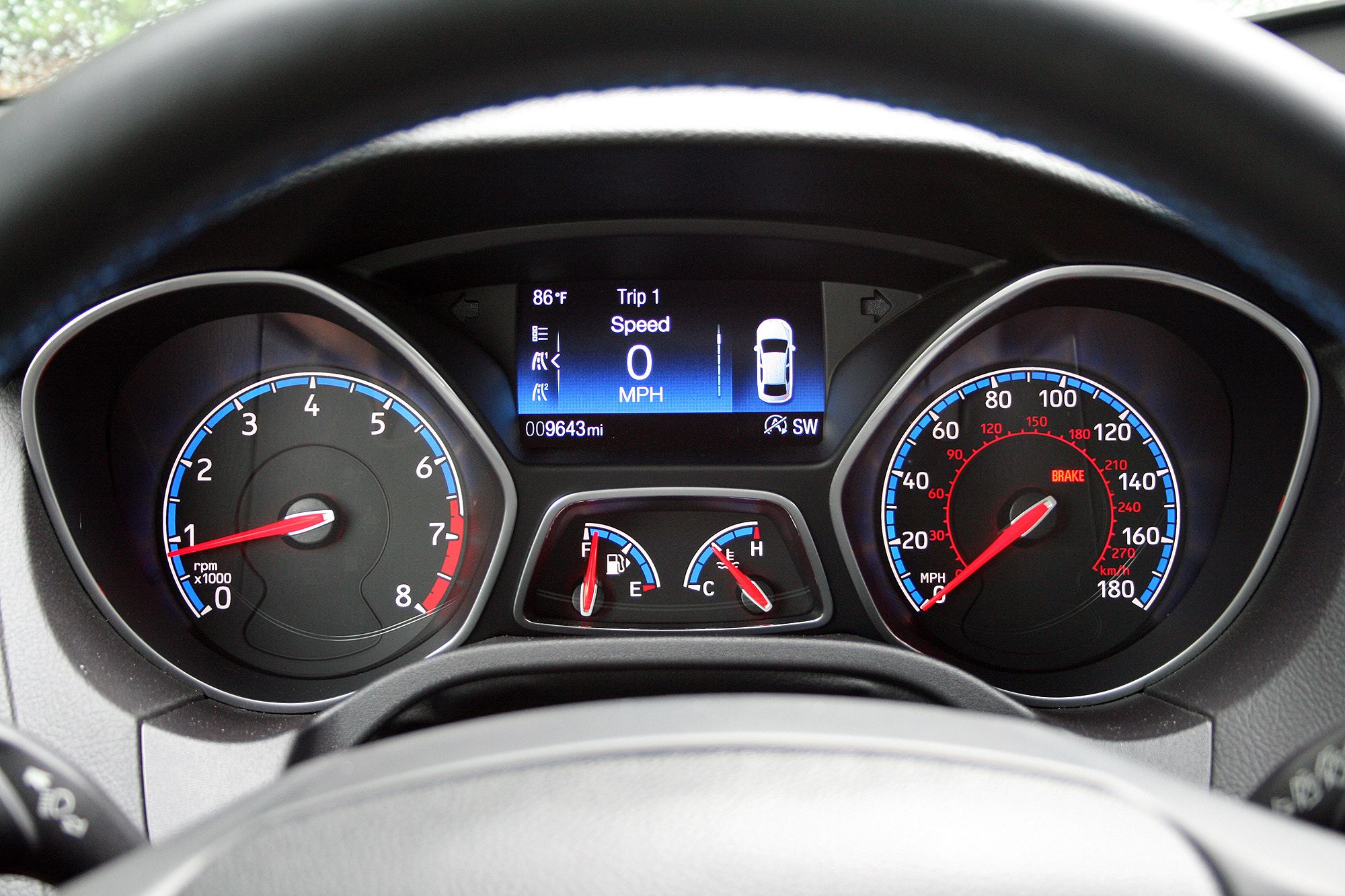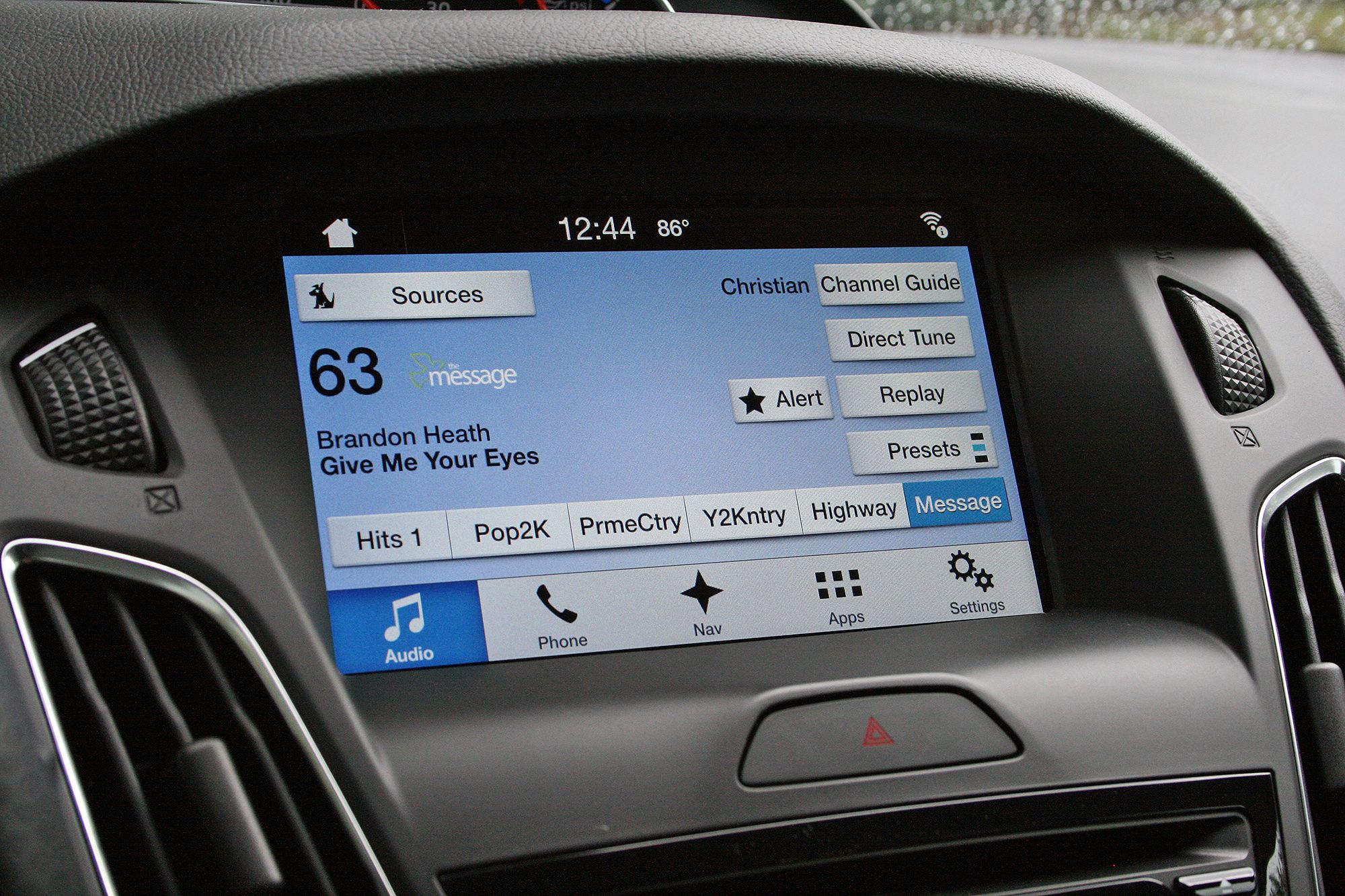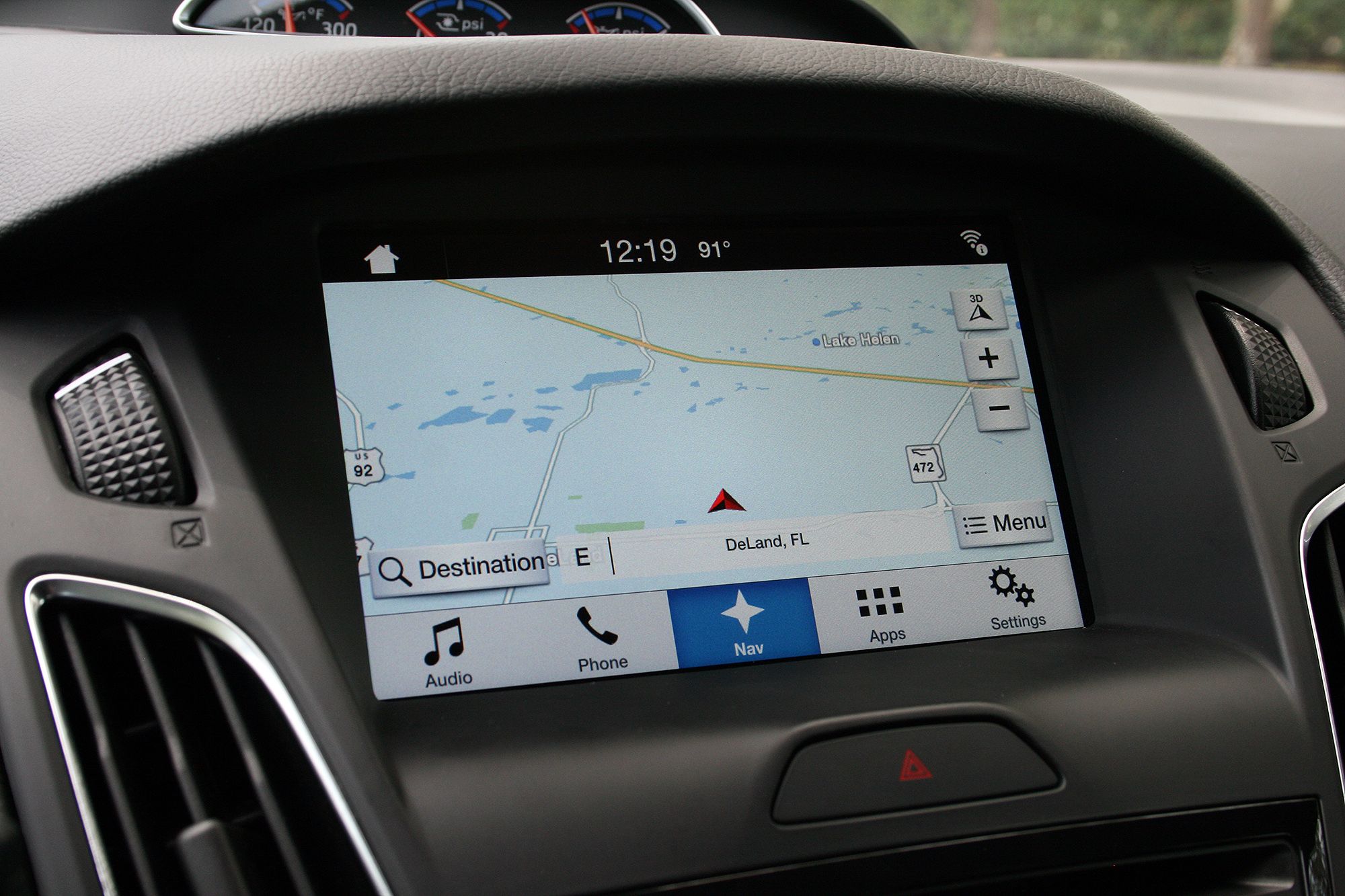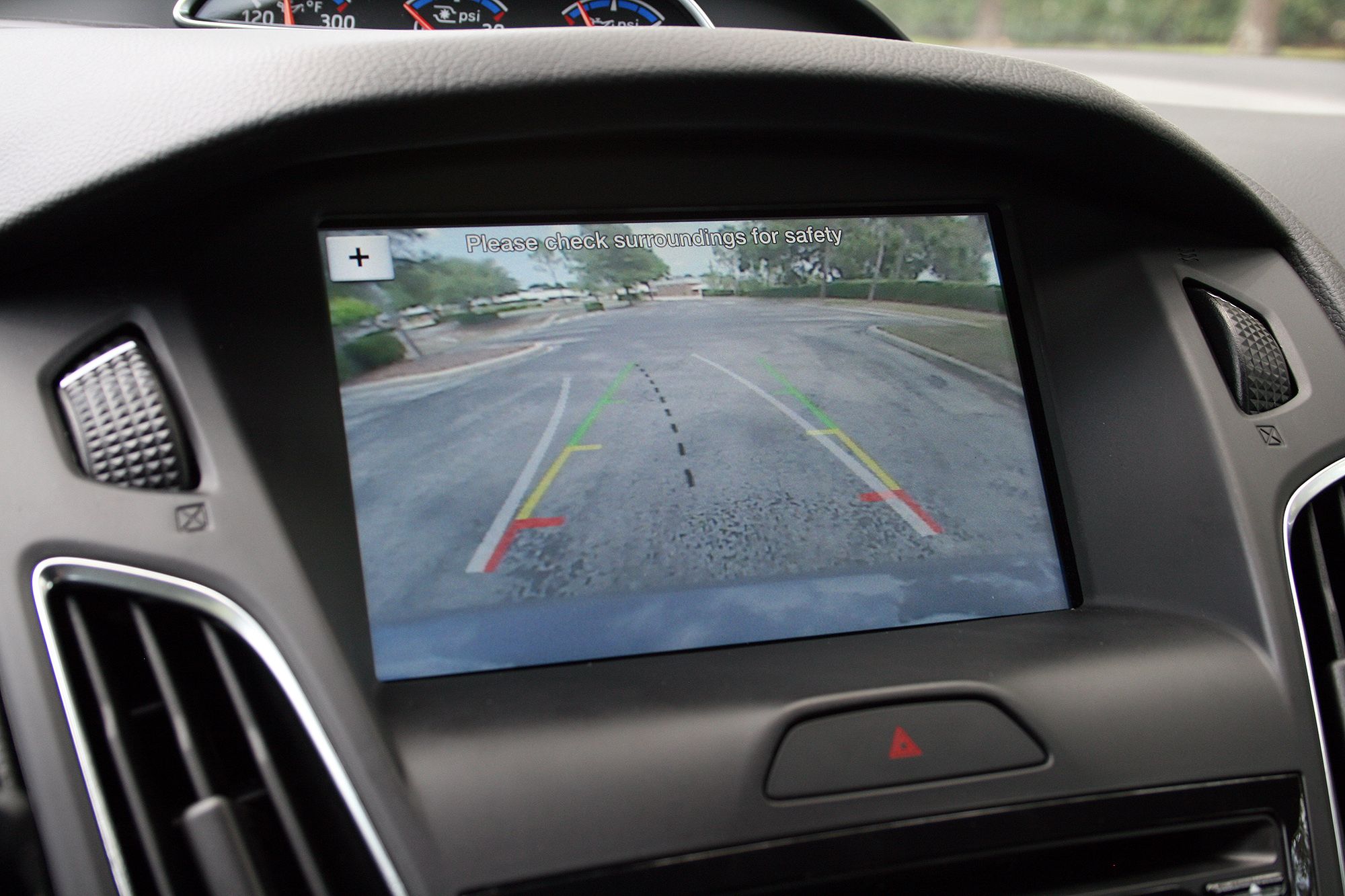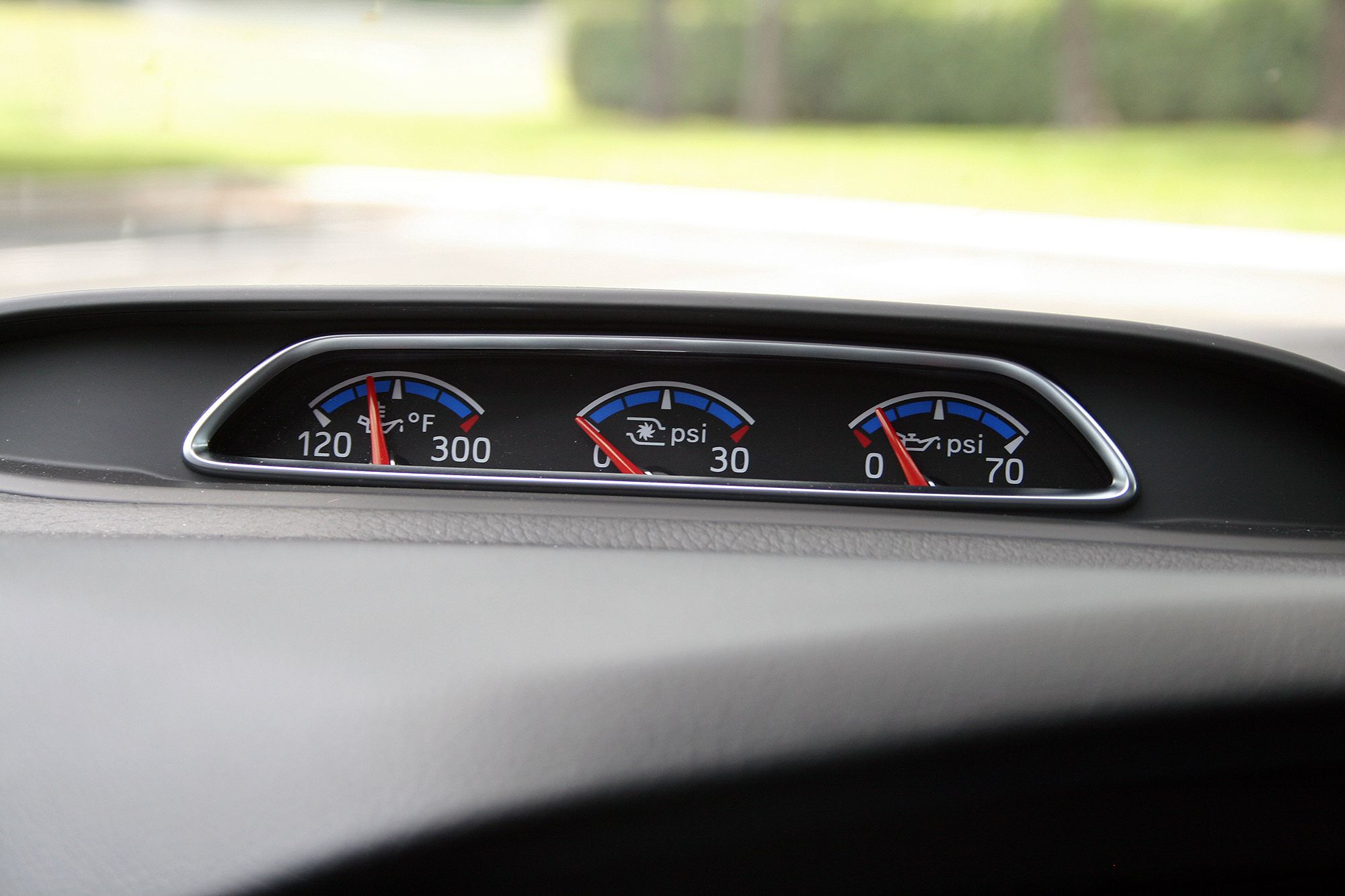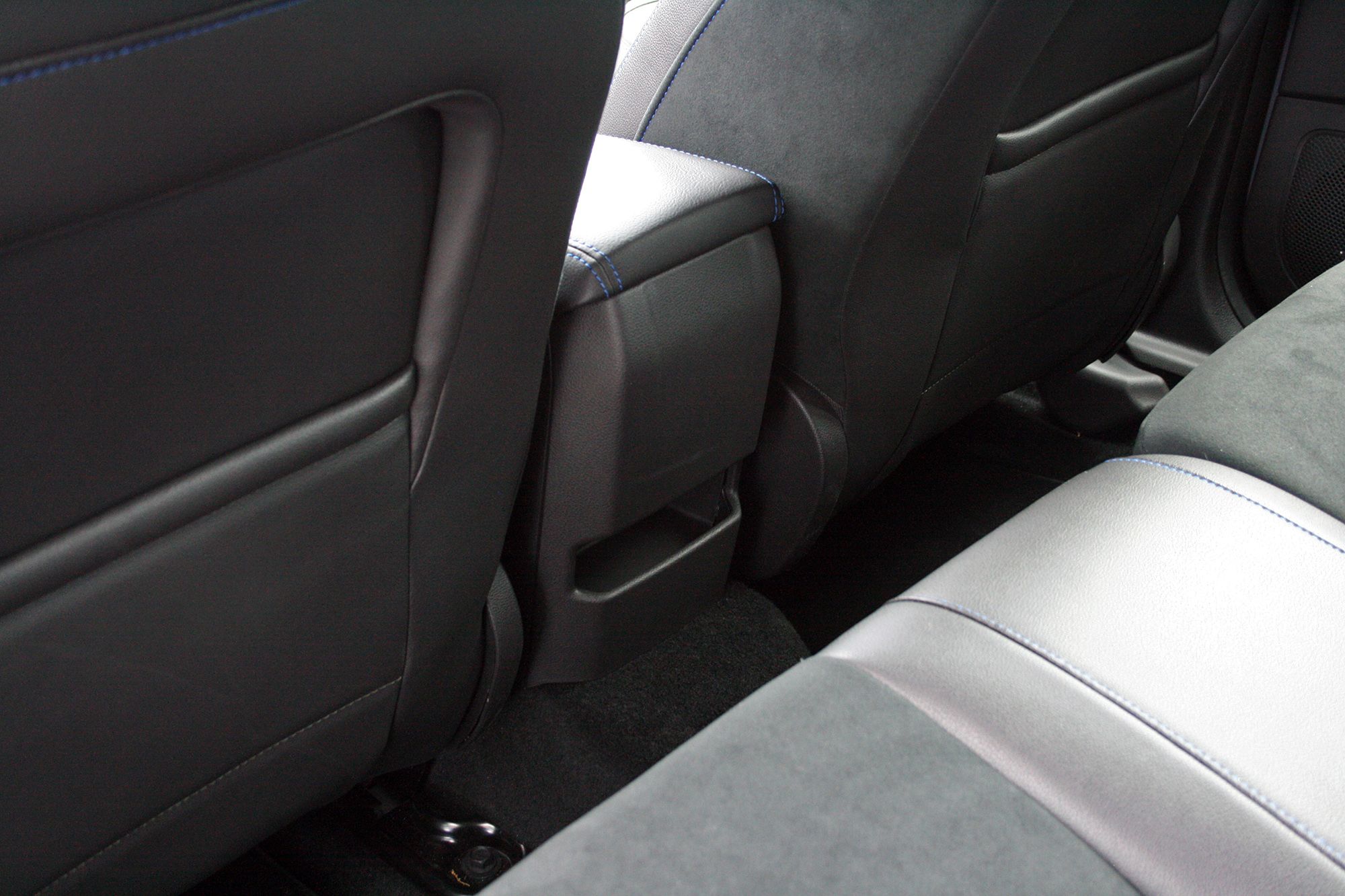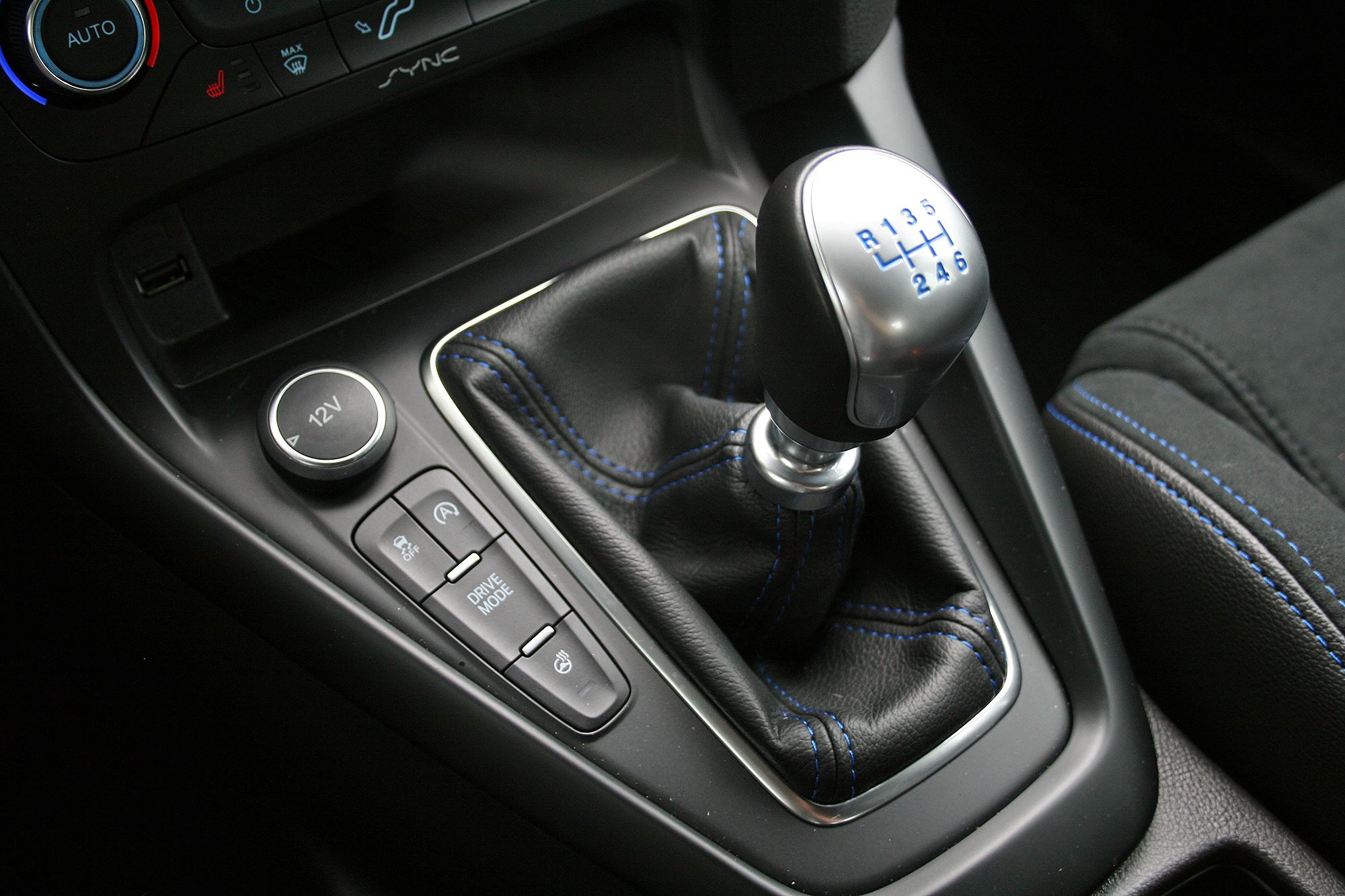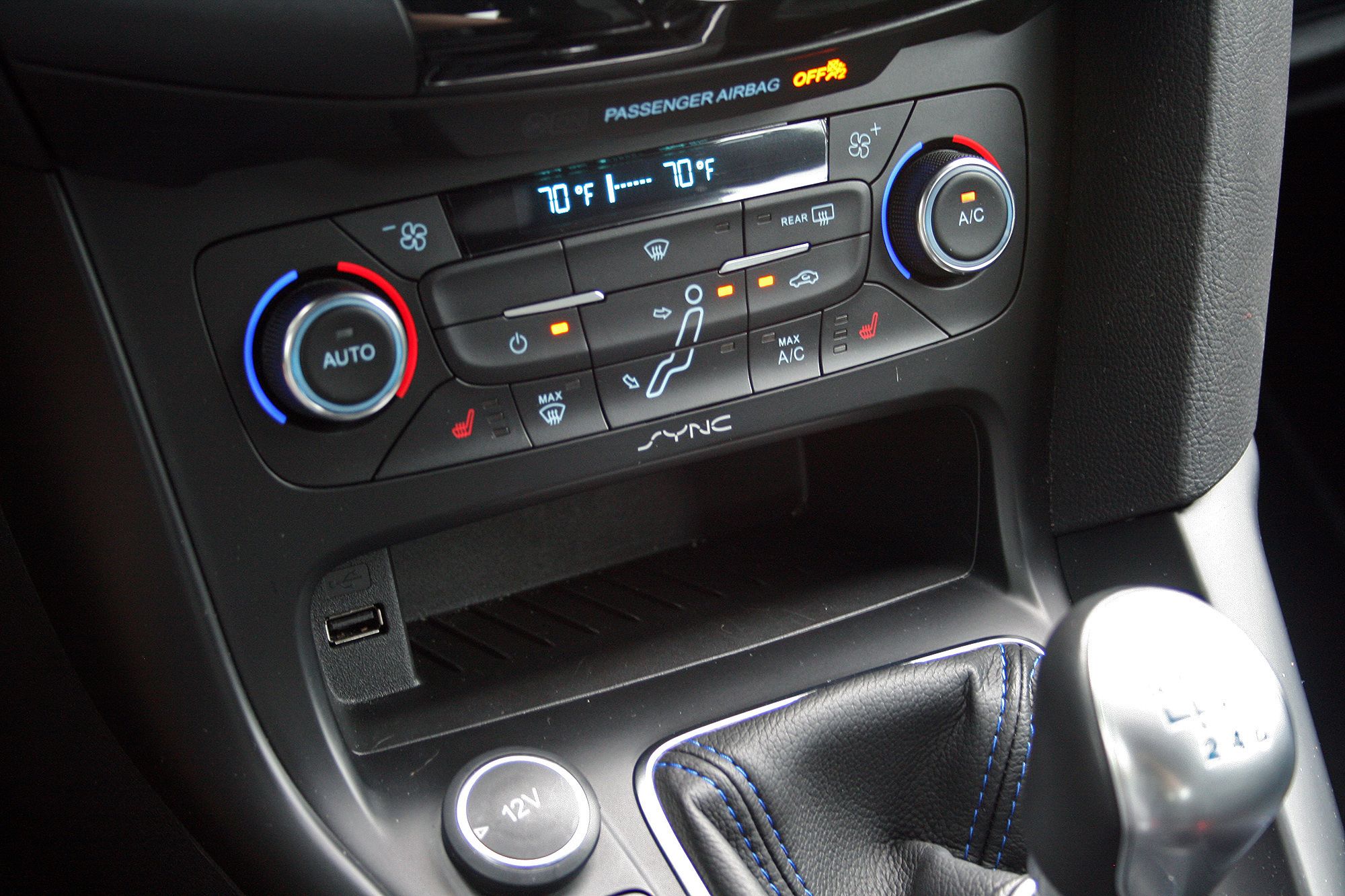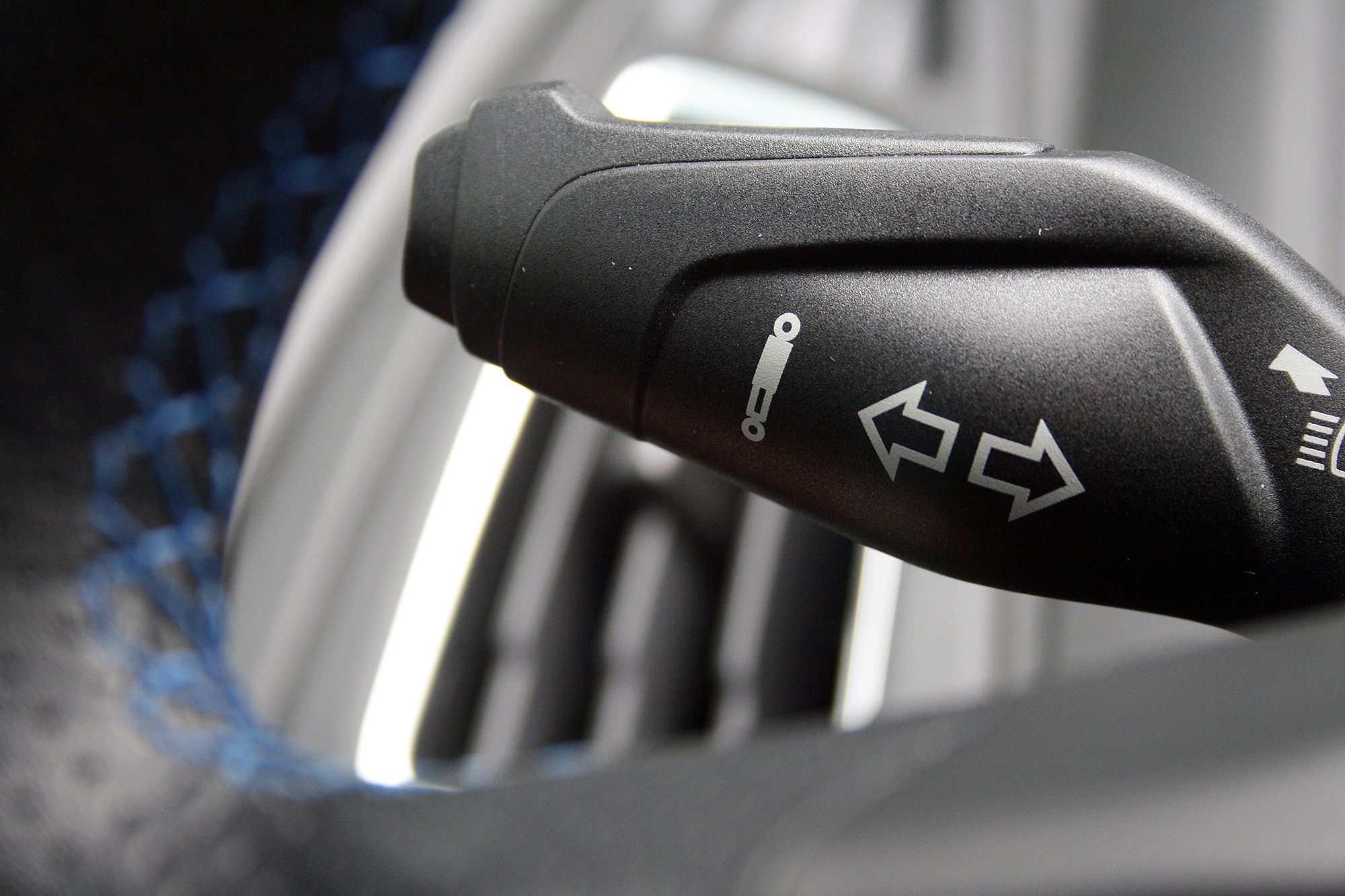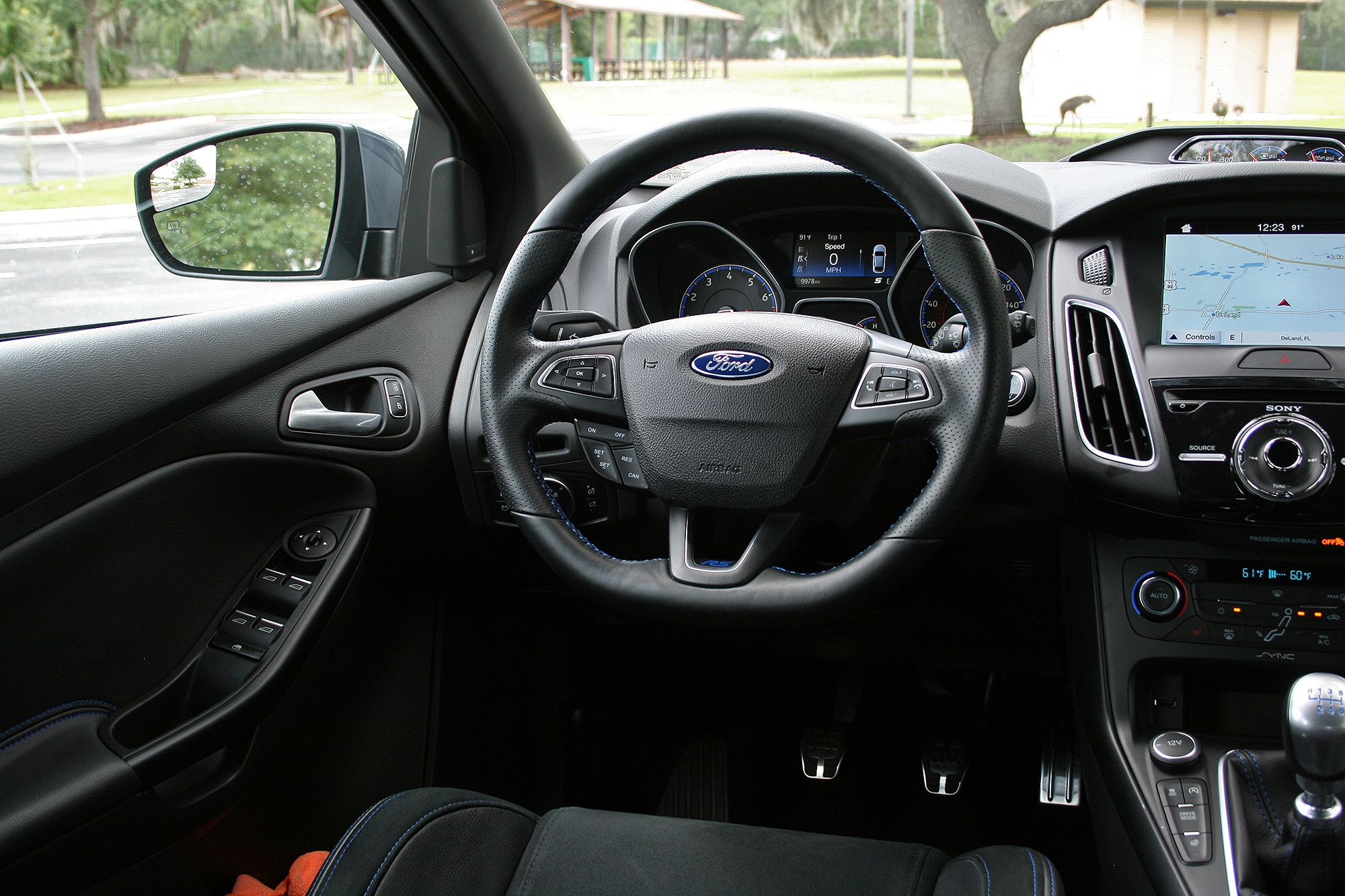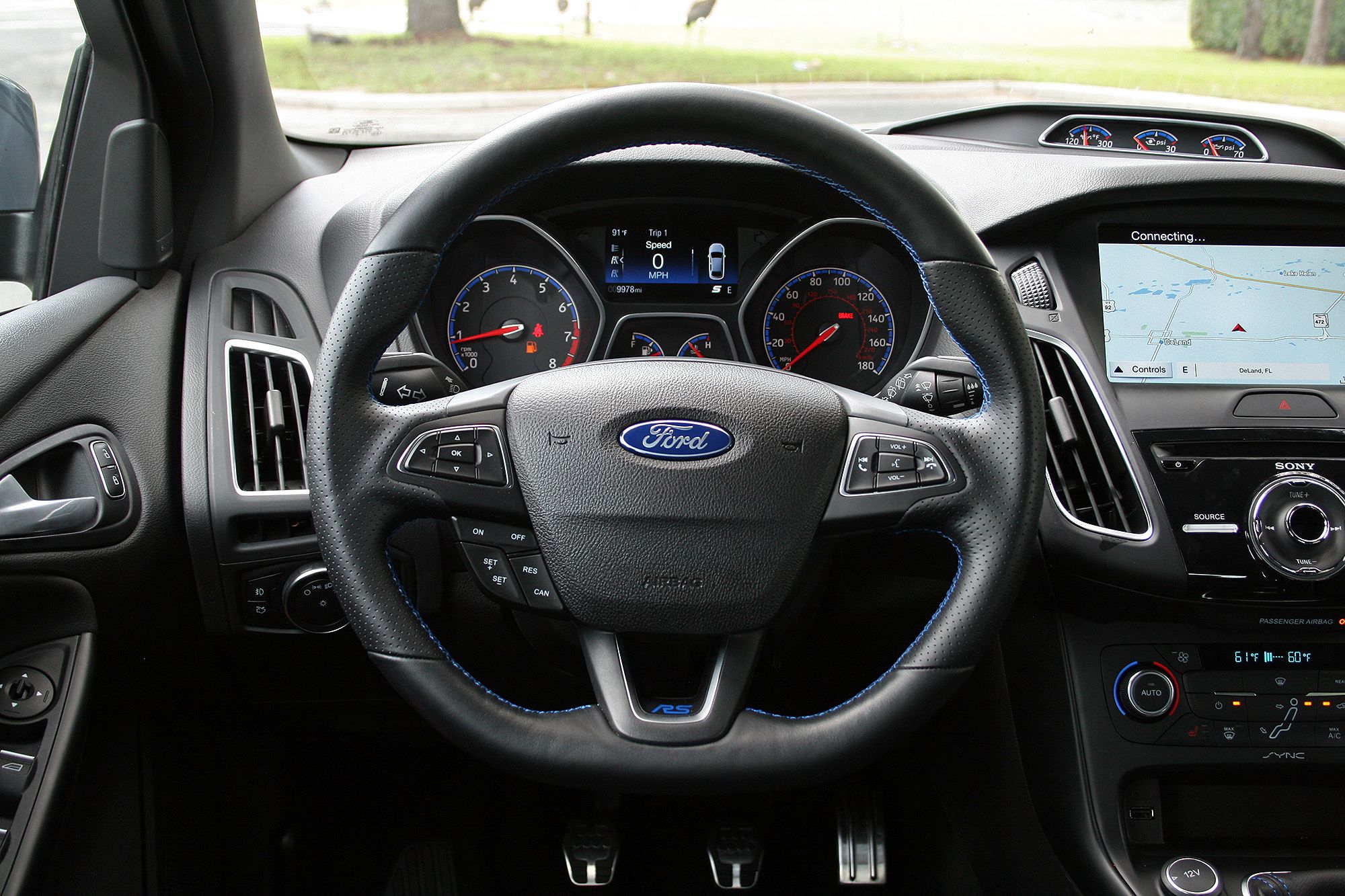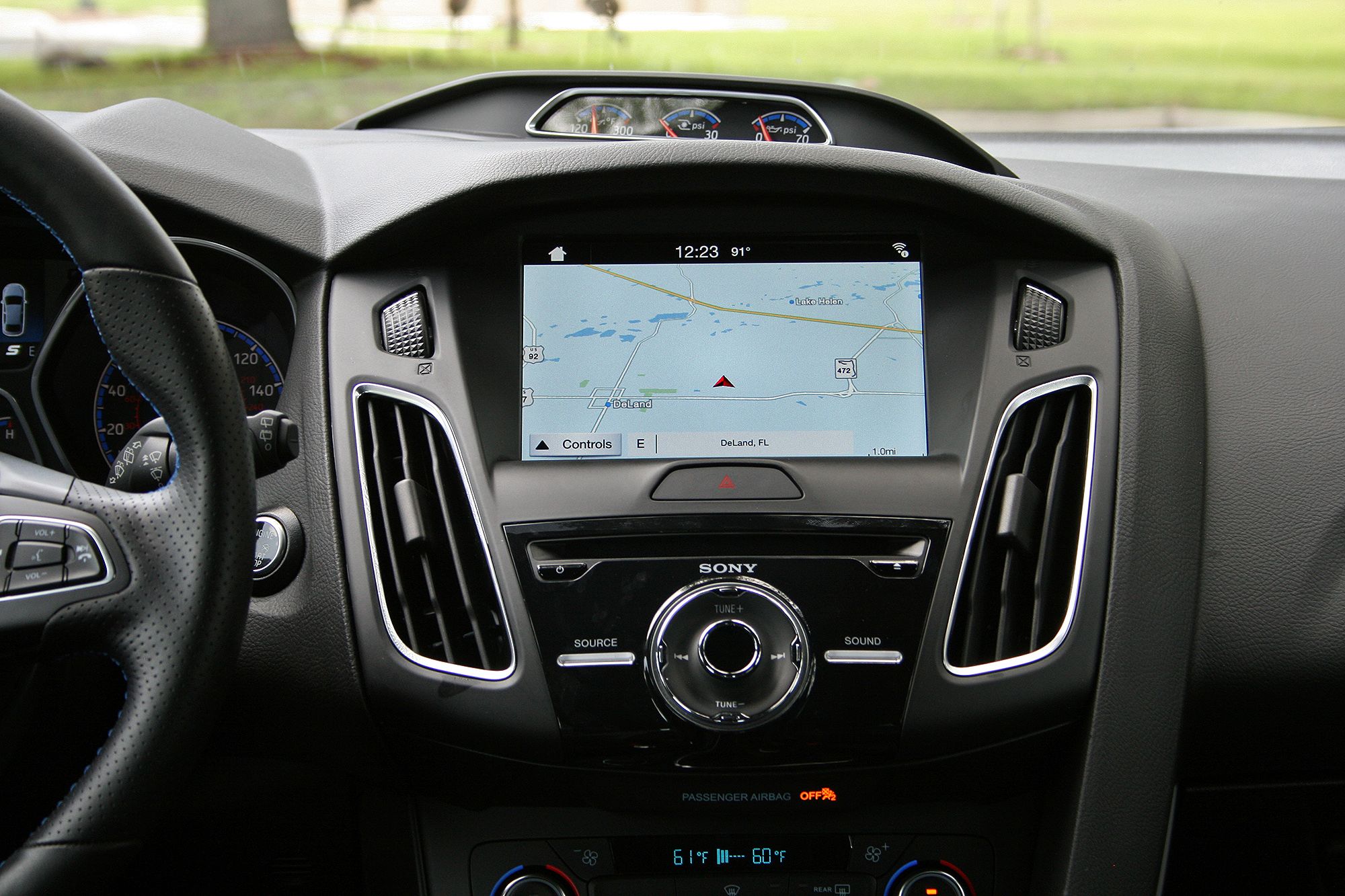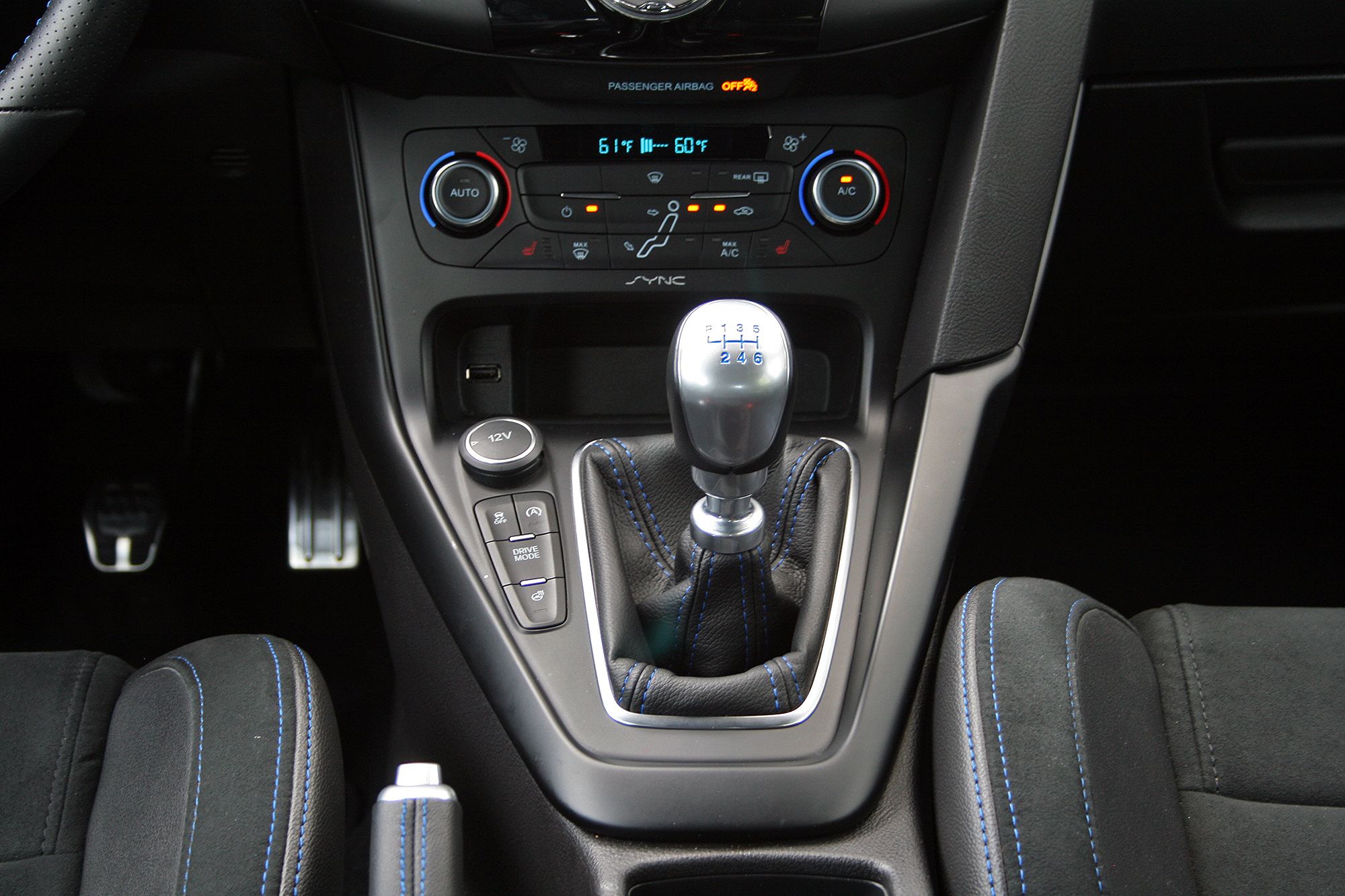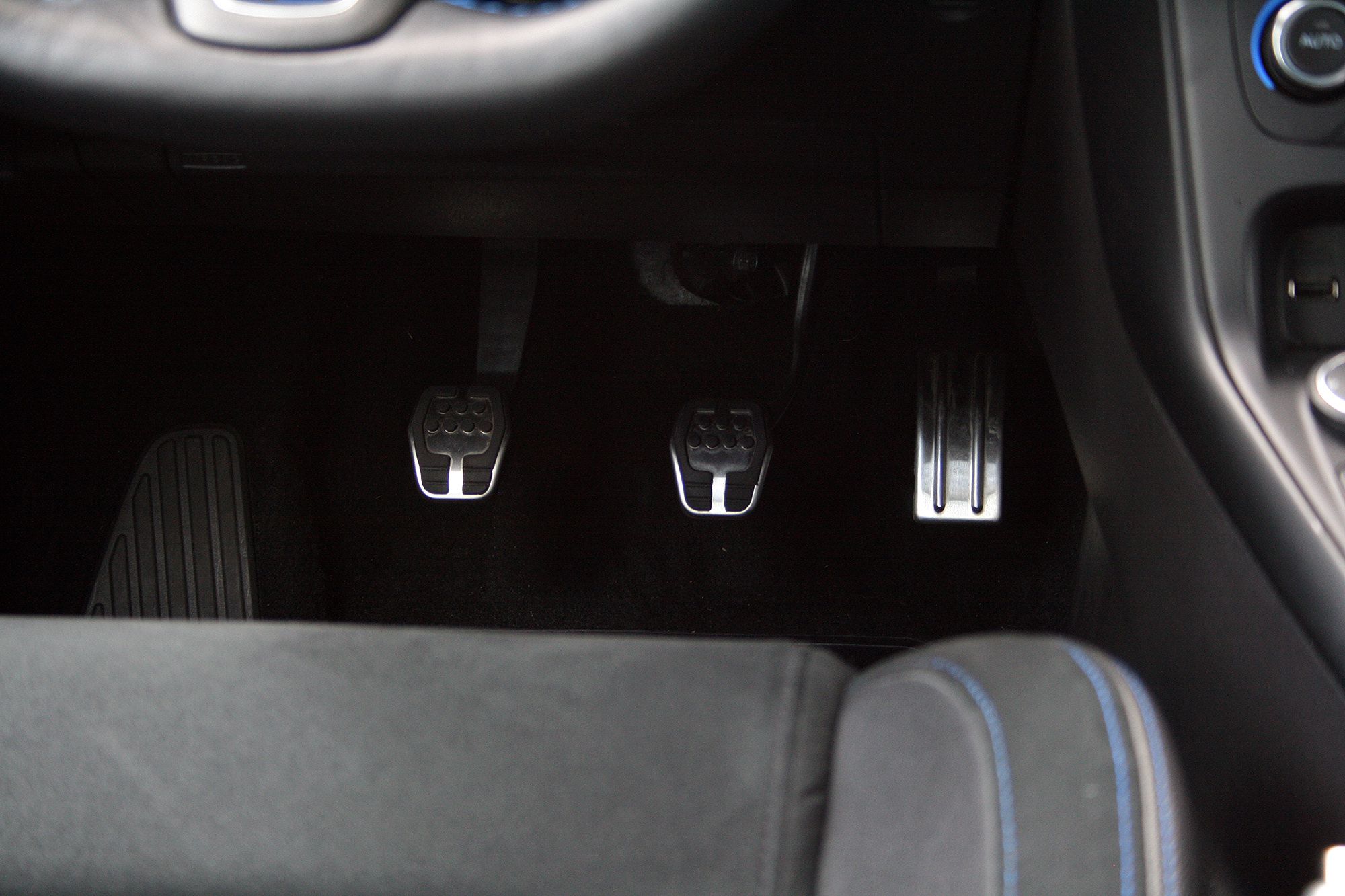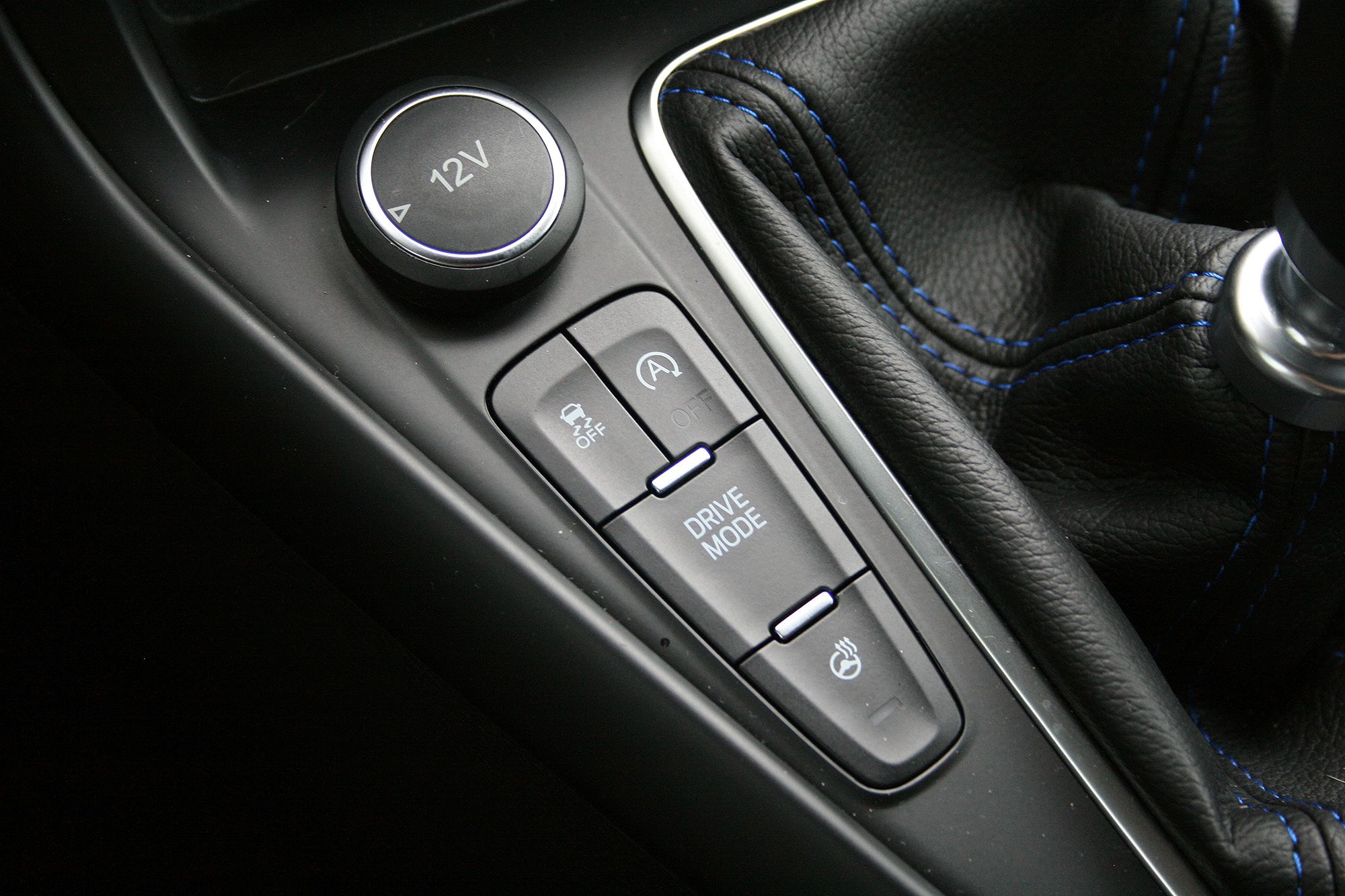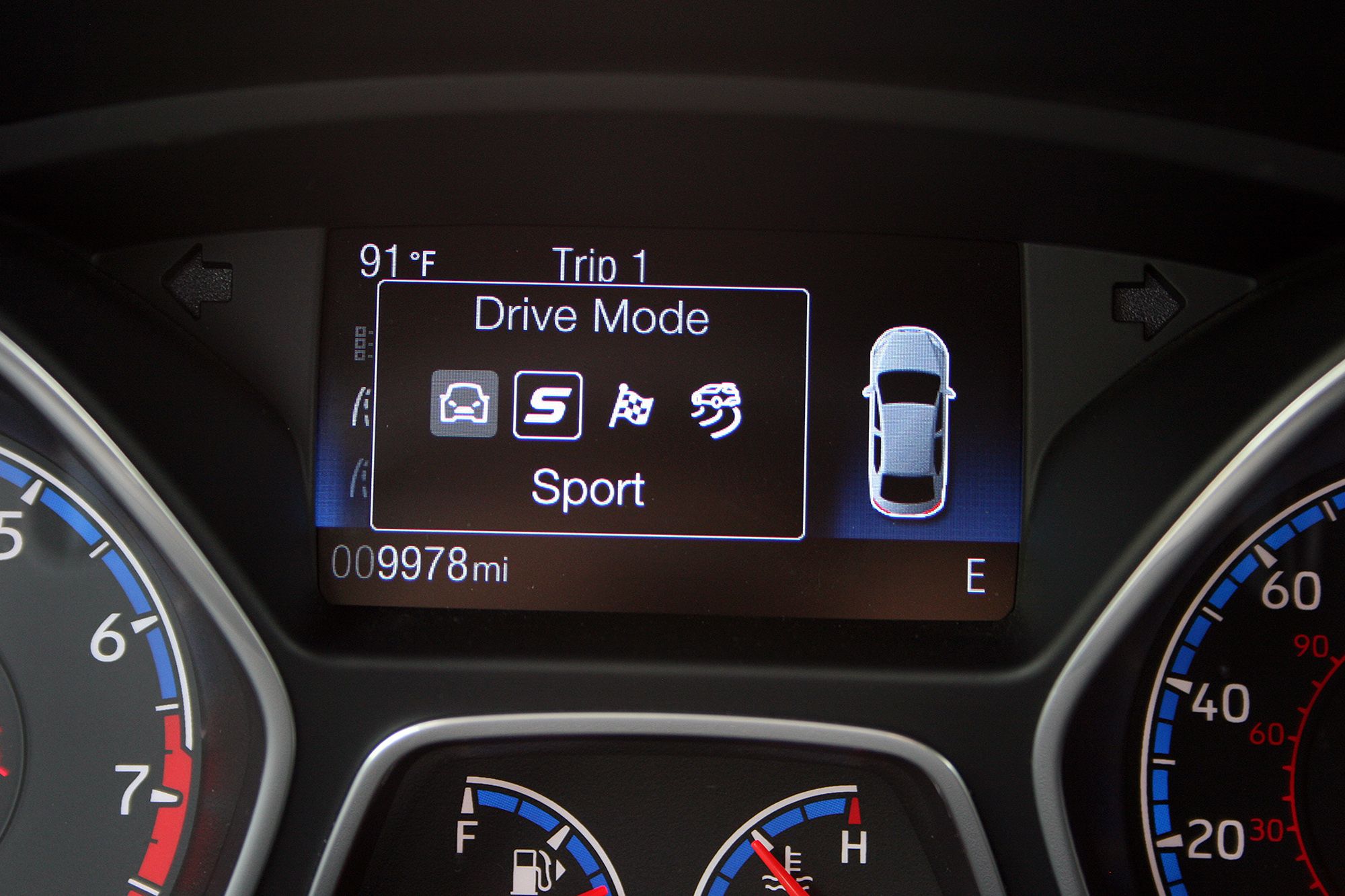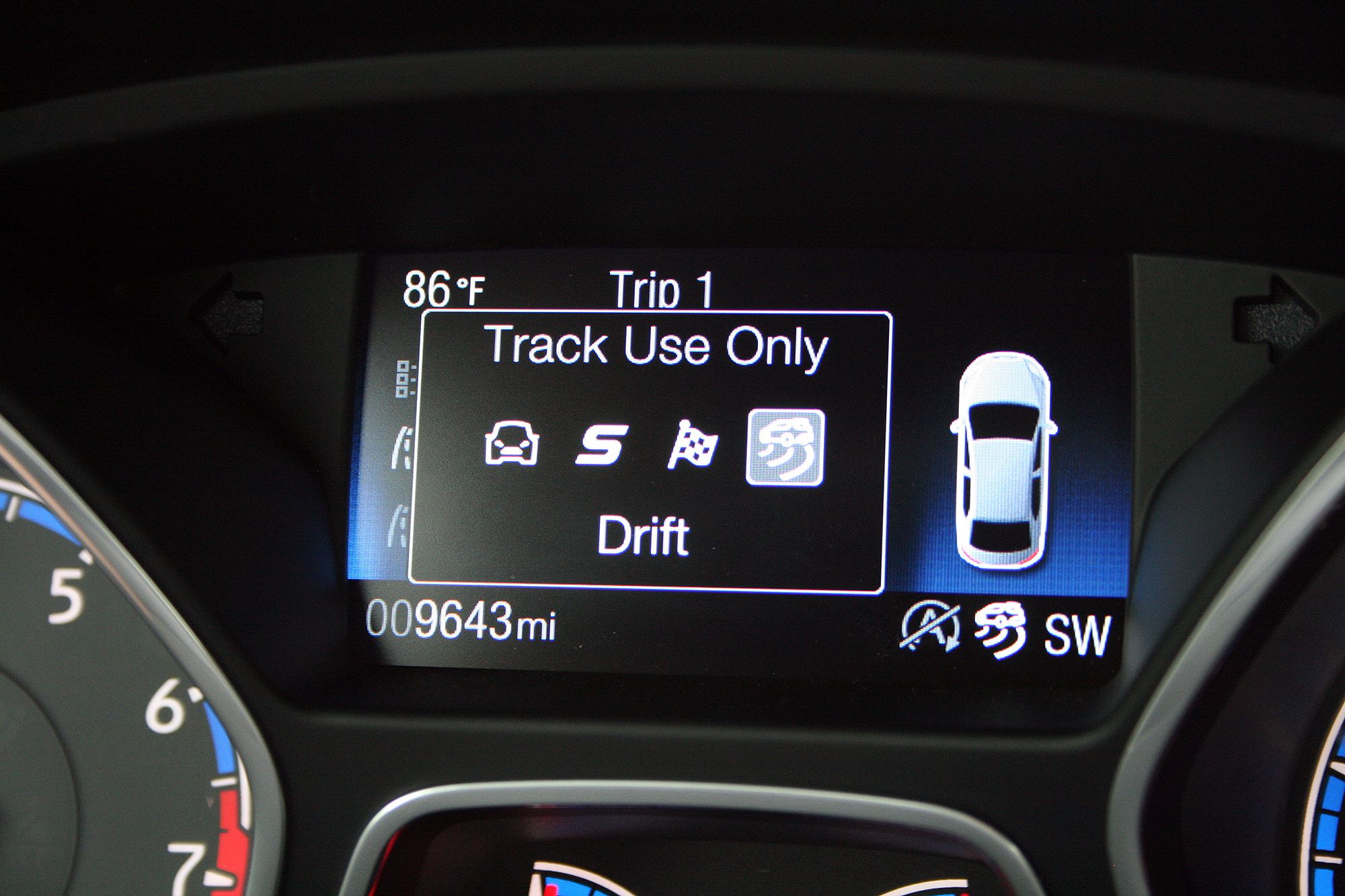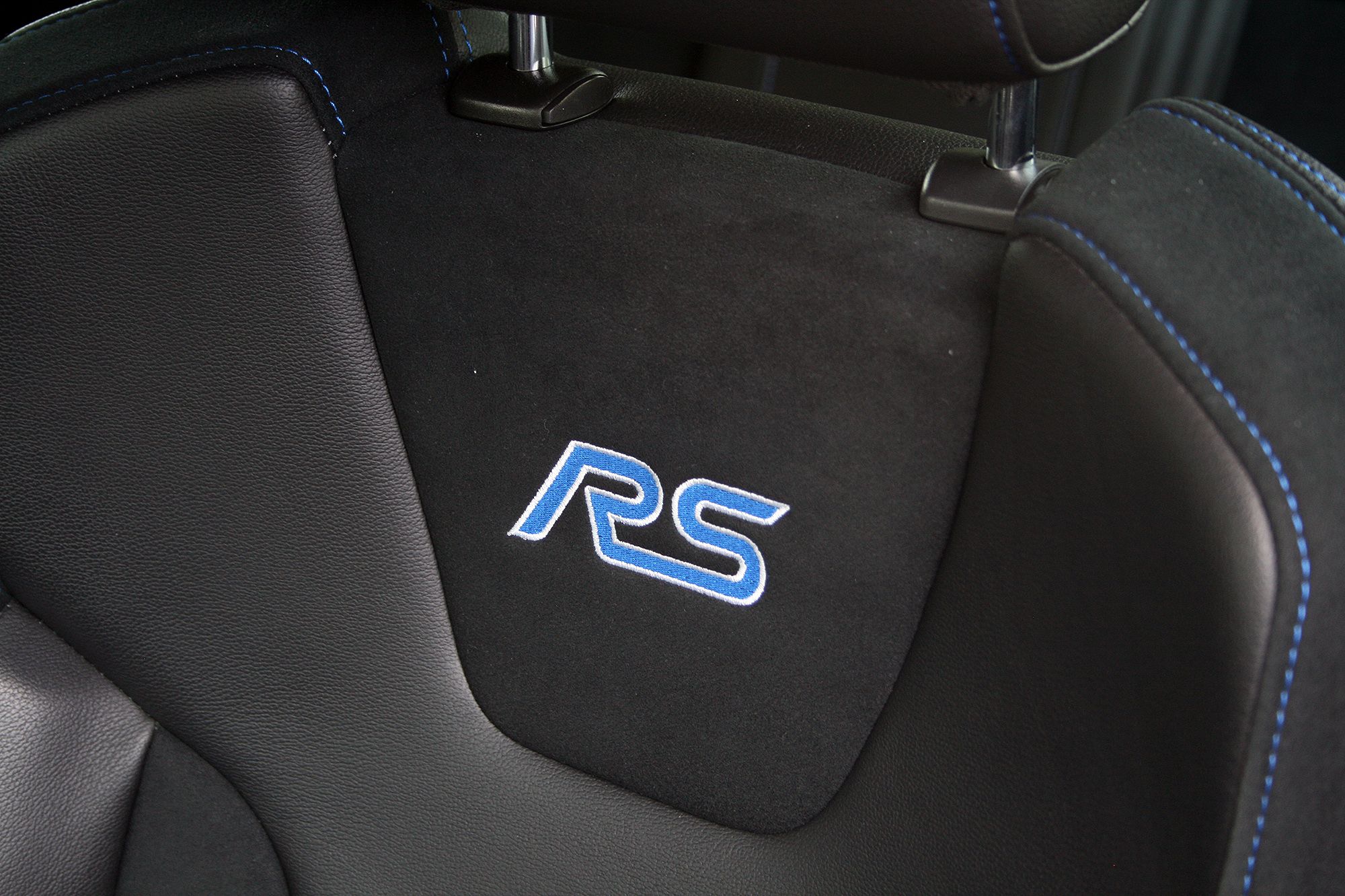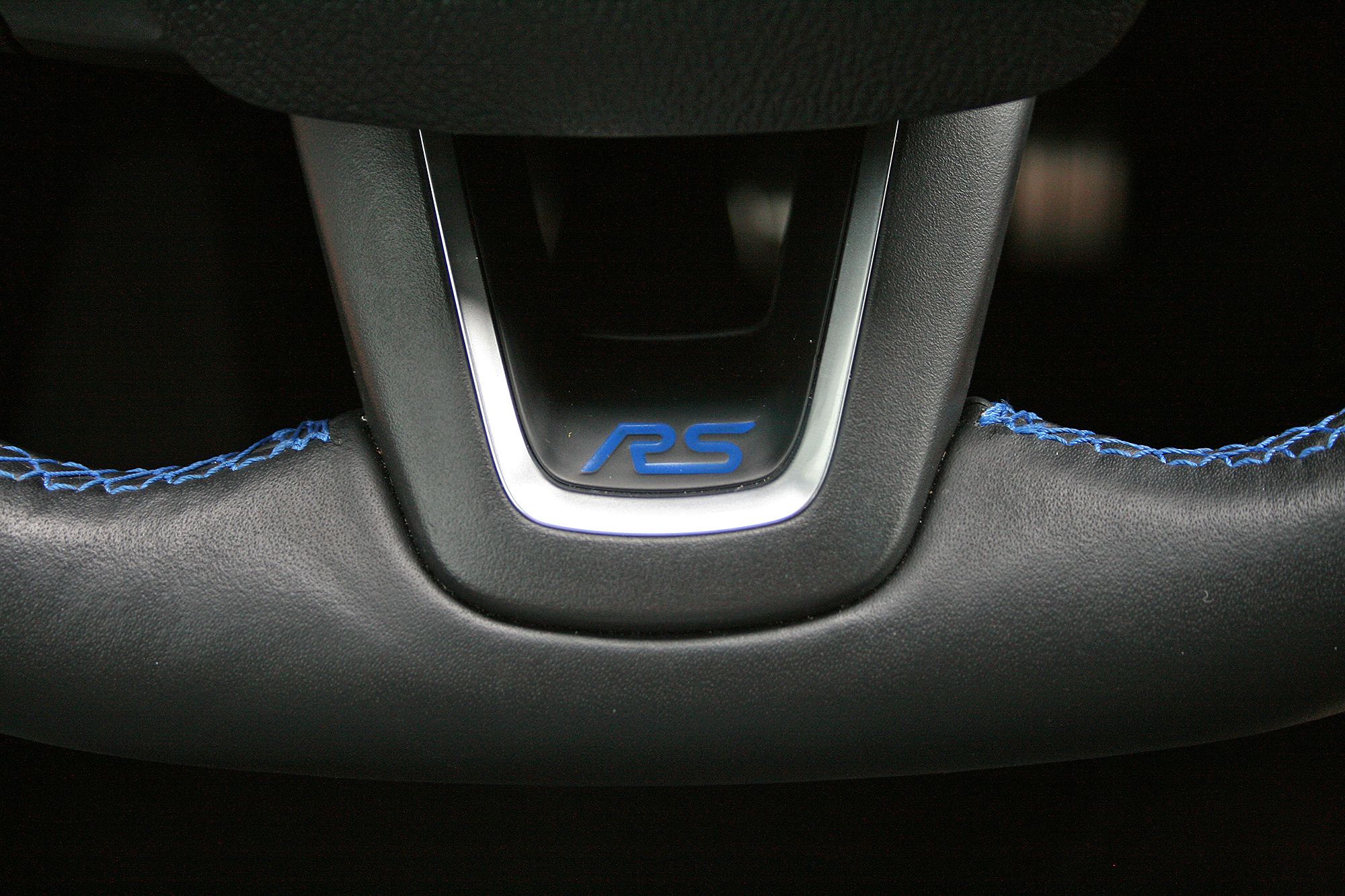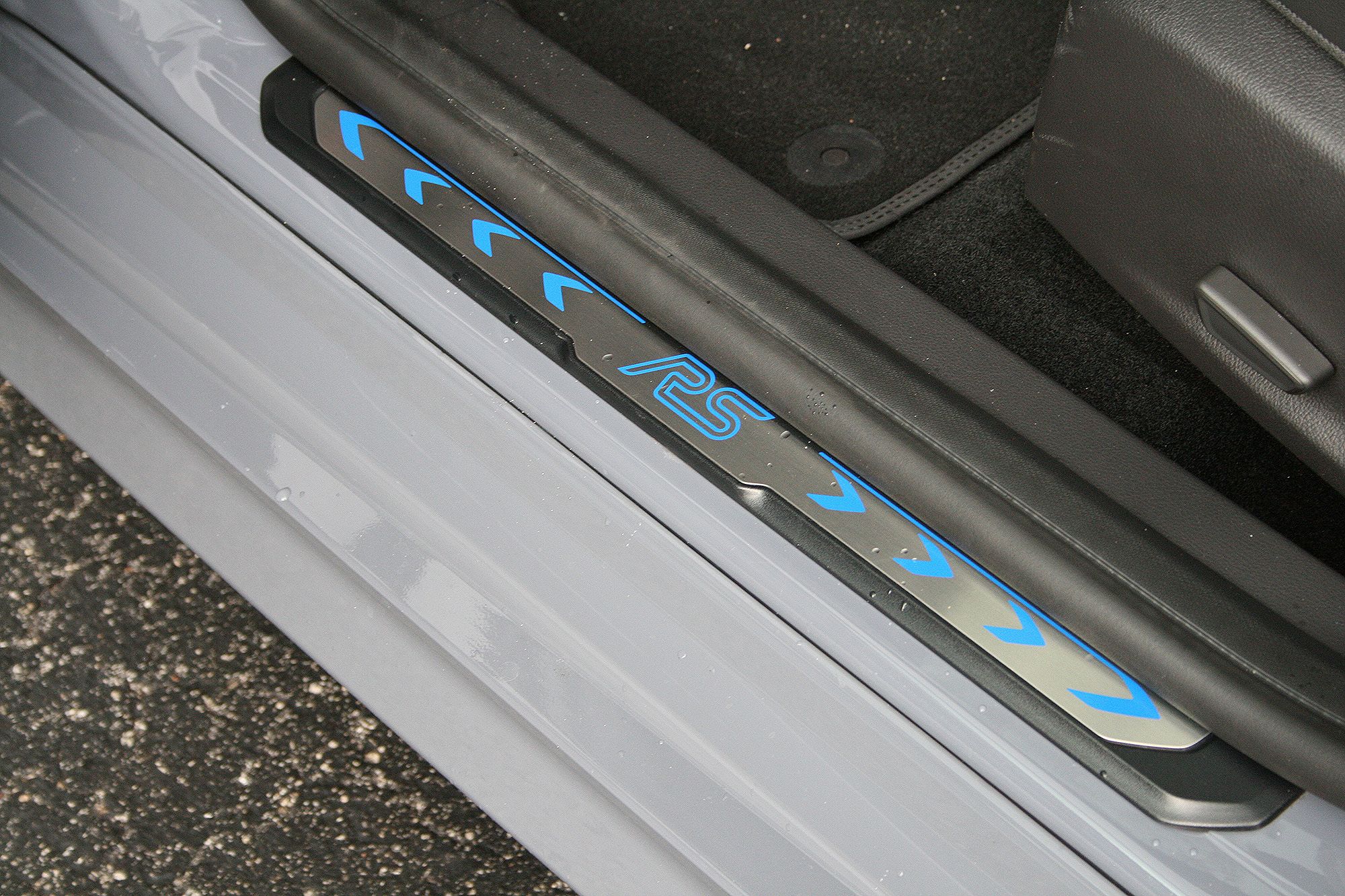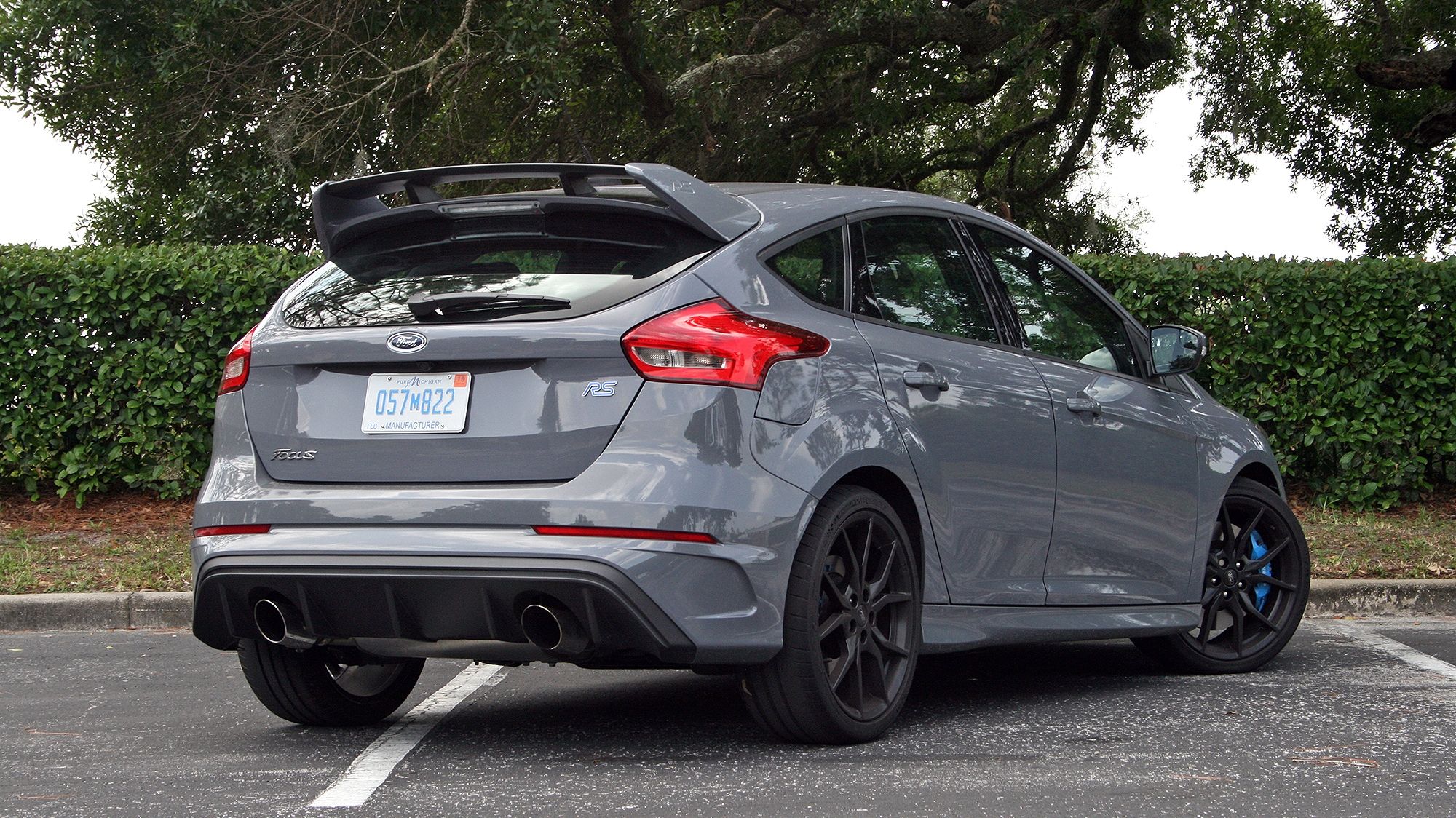The Ford Focus RS is finally blitzing across American soil after exclusively blasting around European hedgerows and rally circuits. Launched for the 2016 model year, the Focus RS uses some high-tech mechanics, EcoBoost power, and ultra sticky rubber to out-class its competition: the Subaru WRX STI and Volkswagen Golf R. Ford thought I should try the car myself, so a Focus RS coated in Stealth Gray arrived in my driveway. The tester came packed with nearly every option, including the 19-inch aluminum wheels wrapped in Michelin Pilot Sport Cup 2 tires. Yeah, it was a fun week.
The RS, or Rally Sport, nomenclature started back in 1970 with the Ford Escort RS1600. It was among the first road-going cars to employ a four-valve cylinder head design. Decades later, Ford launched the 2002 Focus RS. This three-door hatch paid homage to Rally Sport-badged Fords before it, while igniting the hot-hatch segment. Sadly, production was kept to only 4,501 examples. Ford got wise by the decade’s end and launched the second-generation Focus RS for 2009. Still, production was kept to small quantities. That has changed with the third-generation Focus RS. Ford plans to produce the 350-horsepower beast through the 2018 model year, capstoned with a 1,500-unit Focus RS Limited Edition model And as mentioned, the Focus RS is selling in both Europe and North America.
So what’s it like to live with the 2016 Ford Focus RS? Keep reading to find out.
Continue reading for our review of the 2016 Focus RS
2016 Ford Focus RS – Driven
- Make: Array
- Model: 2016 Ford Focus RS – Driven
- Engine/Motor: inline-4
- Horsepower: 350 @ 6000
- Torque: 350 @ 3200
- Transmission: 6-speed manual
- [do not use] Vehicle Model: Array
Video Review
Exterior
There is no getting past the Focus RS’ roots: this hot-hatch is based on a $20,000 hatchback anyone can rent at their local airport. Thankfully, Ford didn’t let the exterior go unchanged with the RS upgrades. The front features a rather large and sporty grille with the blue RS badge and Mustang GT350-like lower fascia. Air ducts beside the vertical fog lights help with cooling, as do the grille’s three main sections. The aggressive styling continues onto the back where dual, chrome-tipped exhaust pipes protrude form a black air diffuser Faux vents just behind the rear tires further the sporty look. Lastly, a tall spoiler rides over the rear hatchback with the RS badge embossed into the body-color end caps.
The Focus RS also rides on unique wheels. The standard wheels are double-spoked, 19-inch aluminum rollers wrapped with Michelin Super Sport summer tires. The wheels look great, but can be substituted for better-looking, double-spoked 19-inch wheels as seen on my tester. The upgrade includes the very important jump to Michelin Pilot Sport Cup 2 tires – widely regarded as some of the best street-legal summer performance tires money can buy. All the best supercars are wearing them these days. But beyond those features, the Focus RS is basically identical to any Focus hatchback found roaming America’s roads. Sadly, the interior continues that trend, for the most part.
Outside the Competition
While there are several direct competitors to the Focus RS, it’s the Subaru WRX STI that really stands toe-to-toe, at least in my opinion having driven both. As for aesthetics, there’s an obvious elephant in the room: the WRX STI isn’t a hatchback. Yeah, Subaru used to offer the WRX STI as a hatchback in past generations, but the current car is only offered as a sedan. Nevertheless, it’s the drivetrain and spirit of the WRX STI that makes it a true competitor.
The WRX STI is aggressively styled. The front has large scoops and grilles, while the back has a massive wing bolted to the trunk. Rocker panel aero bits, a rear diffuser, and the quad exhaust pipes give the Subi a high-strung look.
Exterior Dimensions
|
Ford Focus RS |
Subaru WRX STI |
|
|
Wheelbase (Inches) |
104.3 |
104.3 |
|
Length (Inches) |
172.8 |
180.9 |
|
Width (Inches) |
71.8 |
70.7 |
|
Height (Inches) |
58.0 |
58.1 |
Interior
Open the Focus RS’ driver door and glance at the dash, and you’re greeted with a sea of black plastic and chintzy parts that aren’t uncommon in a $20,000 rental car. The dash itself is made of a rubbery, plastic-like material and the lone piano-black trim piece around the radio volume knob is usually covered in dust. Scratchy plastic surrounds the HVAC controls and shifter, while a pleather boot hides the shifter’s unmentionables. But then you notice something…
The front seats have the Recaro logo stitched in blue along the deep side bolsters and suede wraps nearly the entire seating area. The steering wheel is wrapped in leather with the same blue contrast stitching holding the cowhide together as on the seats. Oh, and look – the wheel has a flat bottom and large grips at 10 and 2. Something’s up. Sliding into the Recaros, you’ll feel a hug tighter than one from your crazy aunt at the family reunion. A trio of gauges sit in a pod high on the dash and the shifter isn’t like the five-speed joystick found in the base Focus sedan. Quickly, you realize this is no ordinary Focus hatchback, but rather something far more special.
While the Focus RS can’t escape its humble roots, Ford has done a reasonable job at adding spice into the interior. The Recaro seats are heavily bolstered and comfortable on all but the longest of road trips. The flat-bottomed steering wheel feels great in the hand, and the shifter enjoys short throws and positive engagement into each gear. The dash-mounted gauges still look a little chintzy, even if it’s fun to watch the boost gauge wag in your peripheral vision. The 10-speaker Sony sound system and SYNC 3 infotainment system with its eight-inch touch screen are included as standard equipment in the Focus RS, so that’s a bonus.
For more features, the $2,785 RS2 Package can be added. It includes leather-trimmed Recaro front seats with an eight-way power driver’s seat (replacing the standard six-way seat and partial leather), heated side mirrors, heated front seats, a heated steering wheel, and voice-activation navigation with SiriusXM Traffic and Travel Link. My tester came fitted with this option package.
Rear seat passengers aren’t as lucky as those up front. The rear bench does get suede inserts, but is otherwise fairly flat and lifeless. There is no center-folding armrest, no air vents, no power or USB plugs, and no cup holders, save for a single slot in each door pocket that’s angled at a nearly 45 degrees. Enthusiasts who care about avoiding spills will loath these “cup holders.” When it comes to hauling more than drinks, the Focus RS is surprisingly up to the task. The rear cargo area holds 23.8 cubic feet of stuff. Fold the 60/40-split bench, and the cargo space grows to an impressive 44.8 cubic feet. This makes the Focus RS surprisingly easy to live with.
But the interior isn’t this hot-hatch’s selling point. No, it’s the monster living under the hood.
Inside the Competition
Like the Focus RS, the Subaru WRX STI is based on the humble Subaru Impreza sedan. The relationship is clearly seen in the ho-hum materials found throughout the cabin. In my review of the 2015 WRX STI, I said the interior was, “loud with road and wind noise and the base radio sounds like a Kenwood tape deck from 1988. The radio’s head unit is also difficult to control with frustrating menus.” But, as Ford has done, Subaru injects plenty of STI upgrades into the space. Carbon fiber and satin chrome trim pieces add some flair, while a flat-bottom steering wheel, heavily bolstered front seat, and red contrast stitching bring the fun.
Interior Dimensions
|
Ford Focus RS |
Subaru WRX STI |
||
|
Ford Focus RS |
Subaru WRX STI |
39.1/37.9 |
39.8/37.1 |
|
Headroom front/rear (Inches) |
41.9/33.4 |
44.3/35.4 |
|
|
Legroom front/rear (Inches) |
55.6/52.6 |
55.6/54.2 |
|
|
Shoulder Room front/rear (Inches) |
20.0 |
12.0 |
|
|
Cargo Volume (cu. ft.) |
91.0 |
96.6 |
Drivetrain
Of course, the big attraction is what motivates the Focus RS. Forget about the ho-hum interior bits and don’t worry about the outward appearance – all of that melts away as the 2.3-liter EcoBoost four-cylinder cranks to life. Ford fans will recognize the engine’s displacement. Yes, this 2.3-liter is basically the same turbocharged mill found in the Ford Mustang EcoBoost. However, Ford wasn’t content to give the Focus RS a measly little 310 horsepower or 320 pound-feet of torque. Rather, Blue Oval engineers massaged the EcoBoost’s ECU and other components to squeeze another 40 horsepower and 30 pound-feet out of the turbo-four – all in a car that’s 200 pounds lighter.
The result: 350 horsepower at 6,000 rpm and 350 pound-feet of torque at 3,200 rpm. The 2.3-liter EcoBoost uses an all-aluminum construction with dual overhead cams pushing four valves per cylinder. Direct fuel injection keeps cylinder temperatures cooler while providing a more precise burn. The turbo is kept cool thanks to an intercooler for lower intake temperatures. The turbo needs it, because it plays a vital role in the EcoBoost’s performance. Not only does it help throughout the mid- and upper rev ranges, but the turbo provides an overboost function. Technically, the engine makes 325 pound-feet of torque, but for 15-second spurts, the turbo is dialed up to make an extra 25 pound-feet when the throttle is buried.
Overboost or not, the EcoBoost feels torquey the second it starts up. Even off the line, the engine produces torque that would make a V-6 jealous. Peak horsepower might happen high in the rev range, but you’ll never need to crest above 3,500 rpm around town. Doing so might endanger your driver’s license.
But the EcoBoost isn’t the only noteworthy hardware under the Focus RS’ unibody chassis. Like the Subaru WRS STI and Volkswagen Golf R, the Focus RS employs AWD. But unlike some, Ford developed this AWD system in-house. As a result, engineers were able to develop a torque-vectoring system capable of putting up to 70 percent of the power to the rear tires. Clutch packs on each half-shaft dictate which side receives power, with a full 100-percent split possible. In normal driving, the front tires do all the work.
Controlling the engine and AWD system are four drive modes. A console-mounted button toggles through Normal, Sport, Track, and Drift modes. Each setting changes engine calibration, throttle response, stability control, and AWD settings. Not surprisingly, many headlines have been written about the Focus RS’ Drift mode. The setting sends more power rearward while keeping the front tires spinning free from understeer. Simply toss the RS into a corner, bury the throttle with plenty of revs, and the Focus RS will walk its rear around. The driving dynamics are completely counter to everything typical about a transversely mounted four-cylinder in a hatchback. And it’s perfect.
|
Ford Focus RS |
Subaru WRX STI |
|
|
Engine |
2.3-liter EcoBoost engine |
2.5-liter flat four-cylinder “boxer” |
|
Horsepower |
350 HP @ 6,000 RPM |
305 HP @ 6,000 RPM |
|
Torque |
350 LB-FT @ 3,200 RPM |
290 LB-FT @ 4,000 RPM |
|
0 to 60 mph |
4.7 seconds |
4.6 seconds |
|
Top Speed |
165 mph |
160 mph |
|
Transmission |
6-speed manual |
6-speed manual |
|
Fuel economy city/highway |
19/25 |
17/23 |
|
Curb weight |
3,459 Lbs |
3,391 Lbs |
Behind the Wheel
While I didn’t have the proper space to perfect my inner Ken Block, Sport mode provided plenty of extra fun with the traction control acting as a safety net. The EcoBoost is a willing partner and it loves to rev. The clutch takes some getting used to, but once learned, it offers a predicable and controllable engagement. The six-speed manual is a breeze to operate, too, thanks to short(ish) throws and positive engagement into each gear. It’s no manual from a Mazda MX-5 Miata, but the shifter inspires confidence and rewards the driver with clean shifts. And thanks to the EcoBoost’s willingness to rev, nailing downshifts is incredibly easy yet no less rewarding.
As with many high-strung sports cars, the Focus RS is far more fun to drive quickly than to putter around town. Selecting Sport mode and reaching the speed limit with gusto elicits big smiles and evil genius laughter. Toiling around town can get old, especially with the super taught suspension. The Focus RS actually employs adaptive dampers with two-stage settings. Pushing the button at the end of the turn signal stalk firms the ride quite drastically. In fact, the RS becomes nearly unbearable on broken pavement or over highway expansion joints. This mode is best left for racetracks with brand new pavement. But even in normal mode, the dampers keep the Focus RS bouncing over bumps and sending vibrations through the Recaro seats.
The stiff ride aside, the Focus RS proved to be a beast of a machine worthy of all the headlines and fanfare it has received. Its objective performance stats back it up, too. Using Launch Control, the Focus RS will hit 60 mph in just 4.6 seconds and through the quarter-mile in 13.4 seconds at 105 mph before reaching a governed top speed of 165 mpg. Fitted with the Cup 2 tires, it will hold 0.98 g on the skidpad.
Powering the Competition
The Subaru WRX STI has a long tradition of Boxer engines, and the current car is no different. The 2.5-liter, horizontally opposed engine uses a turbocharger to help generate 305 horsepower at 6,000 rpm and 290 pound-feet of torque at 4,000 rpm. While that’s well beneath what the Focus RS makes, the Subi makes the most of it. Both cars weight roughly 3,400 pounds, but the WRX STI’s disadvantage in horsepower only costs it 0.2 seconds in the sprint to 60 mph, hitting the mark in 4.8 seconds, according to Car & Driver testing.
The WRX STI comes standard with a six-speed manual transmission and it sends power to all four wheels. It also utilizes a torque-vectoring system and limited slip differentials at both axles help divide power to whatever tire needs it most. Stopping power comes from Brembo. Drive modes include Sport, Sport Sharp, and Intelligent. There’s also configurations for torque split between the front and rear axles with the C.DIFF switch. Subaru definitely gives more control to the driver in this case. Then again, Ford engineers probably knew what they were doing when programming the Focus RS’ AWD system.
Pricing
The 2017 Ford Focus RS starts at $36,120. That gets you all the performance goodies like the 2.3-liter EcoBoost, six-speed manual, AWD, variable dampers, drive modes, and Michelin Super Sport tires. There are several factory upgrades available. These include four paint colors, a winter wheel and tire package, the RS2 Package, a power moonroof, and the forged-aluminum 19-inch wheels with the Michelin Pilot Super Cup 2 tires. My tester came fitted with the RS2 Package, which includes eight-way power driver’s seat; leather-trimmings on the Recaro front seats; heated mirrors, front seats, and steering wheel; and the Voice-Activated Navigation System. Also optioned on my tester were the Cup 2 performance tires and 19-inch wheels. My tester belonged to the 2016 model year, so its pricing doesn’t perfectly match up with the 2017 model, but the grand total for came to $41,550.
|
Ford Focus RS |
$36,120 |
|
Nitrous Blue Exterior Paint |
$695 |
|
RS Winter Tire & Wheel Package |
$1,995 |
|
RS2 Package |
$2,785 |
|
19-inch Premium Painted Forged Alloy Wheels |
$1,395 |
|
19-Inch Premium Painted Forged-Aluminum Wheel with Michelin® Pilot Sport Cup 2 Tires |
$1,990 |
Pricing of the Competition
Subaru is already selling 2018 models on its website, so that’s what I’m quoting. The base Subaru WRX STI starts at $36,095. That gets you all the fun performance goodies, but leaves off some of the “luxury” items like the sunroof and Recaro front seats. Opting for the WRX STI Limited moves the MSRP to $40,895 before options. And while there’s no option for high-end performance tires, customers can get a performance cat-back exhaust system, an STI short-throw shifter kit, and additional aero trim.
Other Competitors
Volkswagen Golf R
The 2017 VW Golf R is interesting. It certainly qualities as a hot-hatch thanks to tits turbocharged four-cylinder, six-speed manual or optional six-speed DSG gearboxes, and AWD, but the Golf R is far more grown-up than its competition. For customers with a bit more age, that might be a great selling point. Its ride is firm yet not punishing, its body is sporty without being boy-racer, and its interior has plenty of creature comforts and gobs of room. Sport meets refinement in the Golf R.
Under the hood is a 2.0-liter turbo-four making 292 horsepower and 280 pound-feet of torque. Sure, it’s a bit underpowered compared to the Ford Focus RS, but the Golf R is hardly slow. Testing with the manual gearbox shows the Golf R hits 60 mph in 5.4 seconds. The horsepower deficit is slightly offset by a less-hefty curb weight by 100 pounds than the Subi and Ford. The Golf R also features an adaptive suspension with different drive modes.
Pricing for the Volkswagen Golf R can get expensive. The 2017 model starts at $39,375. The DSG gearbox adds another $1,100. There are no factory-offered performance accessories, but VW does offer a set of 17-inch wheels designated as the “winter wheels” for $1,080. VW leaves buying winter tires up to its customers. So while the Golf R’s entry price is higher, the limited number of options and packages keeps its price relatively stable.
Read our full driven and review on the Volkswagen Golf R here.
Honda Civic Type R
If aggressive styling and an in-your-face attitude is what you want, Honda has it with the new 2017 Civic Type R. The long-awaited Civic Type R is finally arriving on U.S., much to the delight of enthusiasts. It’s based on the Civic Hatchback and offers plenty of interior room for people and things. A big wing and aggressive styling make the Type R stand out from the Civic crowds.
Power comes from Honda’s 2.0-liter four-cylinder. The all-aluminum engine uses direct fuel injection, a lightweight flywheel, VTEC, and a turbocharger to generate 306 horsepower at 6,500 rpm and 295 pound-feet of torque at 2,500 rpm. A short-throw, six-speed manual gearbox does the shifting and only the front tires put power to the ground. Yes, the Civic Type R does not have AWD. Nevertheless, the Type R is expected to hit 60 mph in the low five-seconds, thanks in part to a limited-slip differential. Drive modes include Comfort, Sport, and +R.
Pricing hasn’t been released as of this writing, but rumors and a spy photo suggest the Type R could start around $34,755. If true, that makes the Type R the least expensive of the hot-hatch bunch. That’s an important thing for the stereotypical, hot-hatch 20-something wanting to buy an exciting ride.
Find out more about the Honda Civic Type R here.
Conclusion
The Ford Focus RS is quite a little monster. The combination of its powerful EcoBoost engine, notchy shifter, and tenacious grip make it a blast to hoon. The stiff suspension transmits nearly every pebble into the tightly bolstered Recaro front seats and the cabin is constantly filled with noise from the tires, exhaust, and intake. It’s one of the most visceral rides this side of $50,000. That said, it might prove hard to live with as a daily driver. But if you’re up for the stiff ride and somewhat chintzy interior, the Focus RS is an awesome buy. And if you want one, you’d better act fast. Ford is ending production after 2018 when the standard Focus undergoes a generational change.

